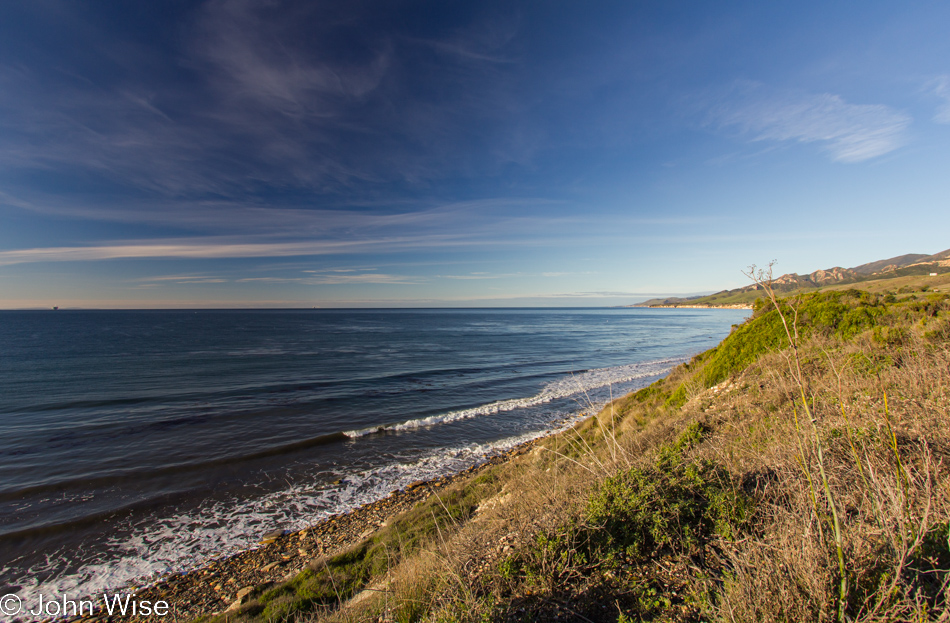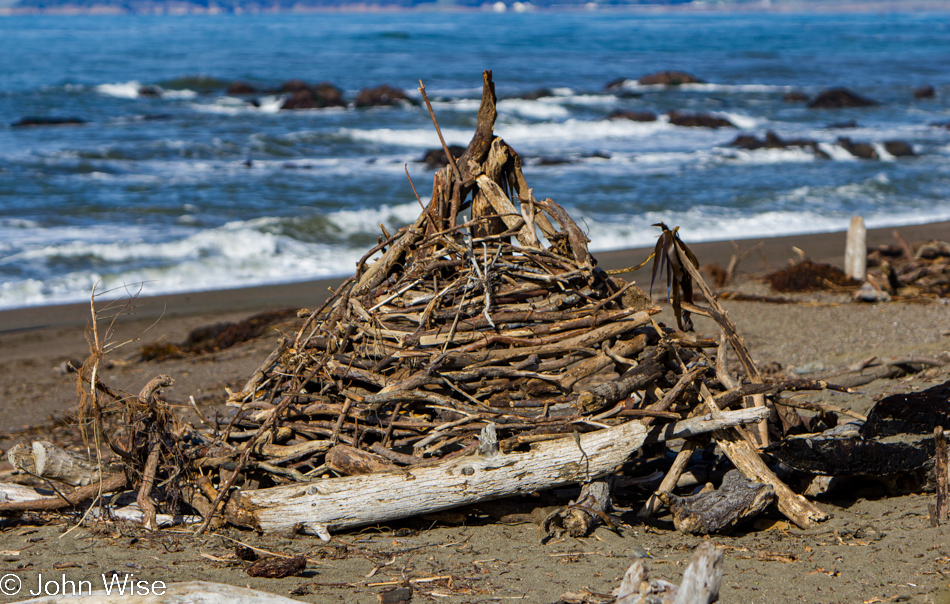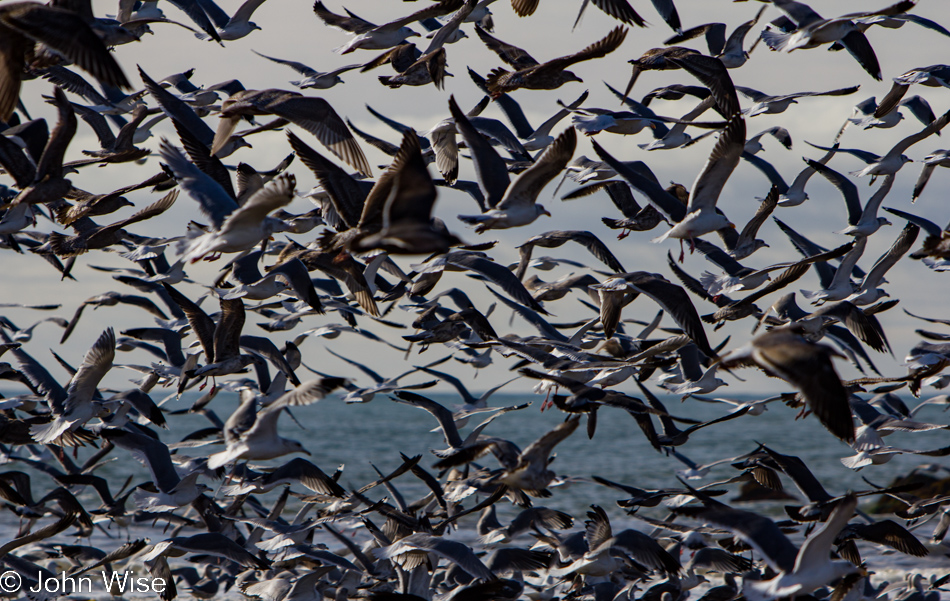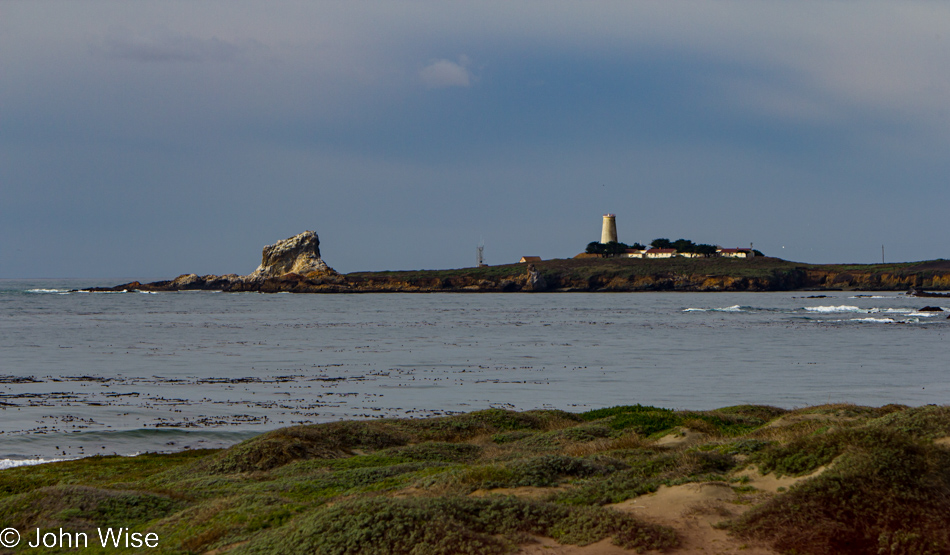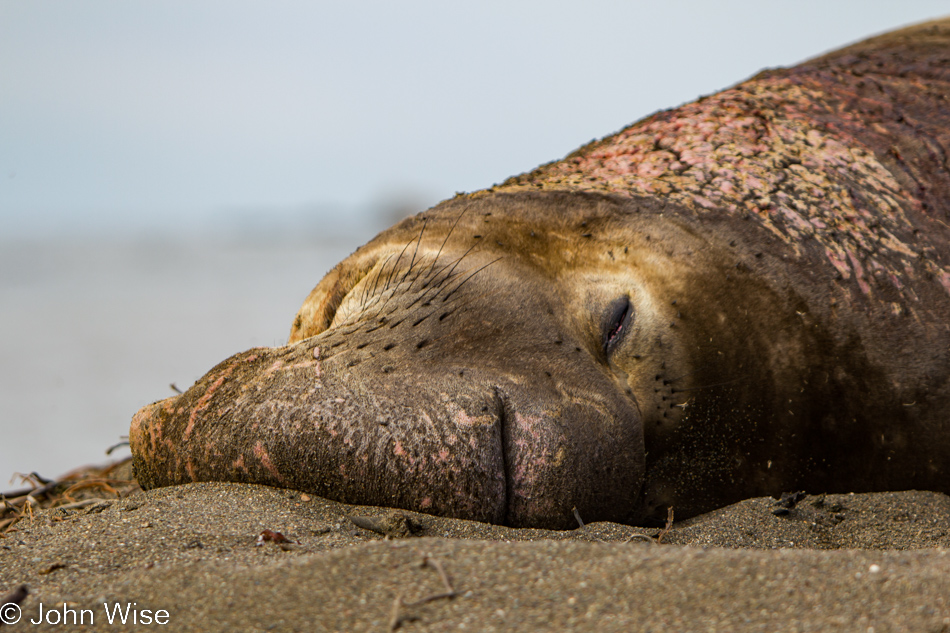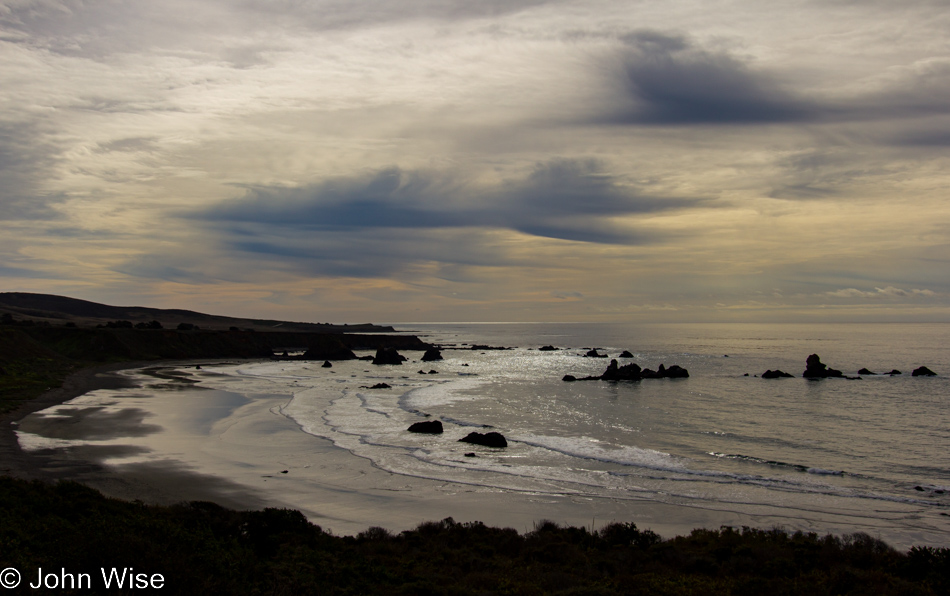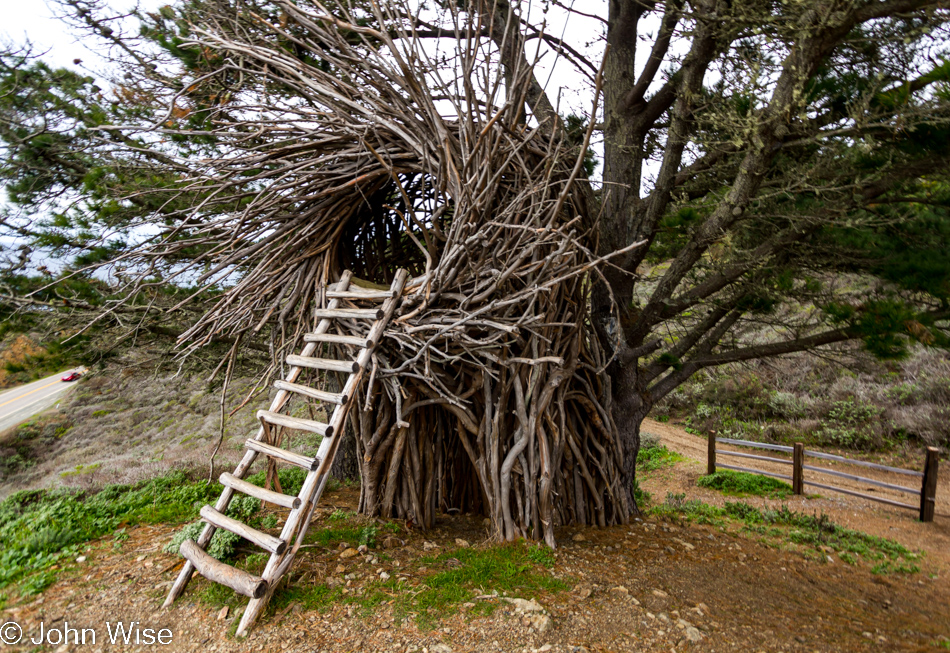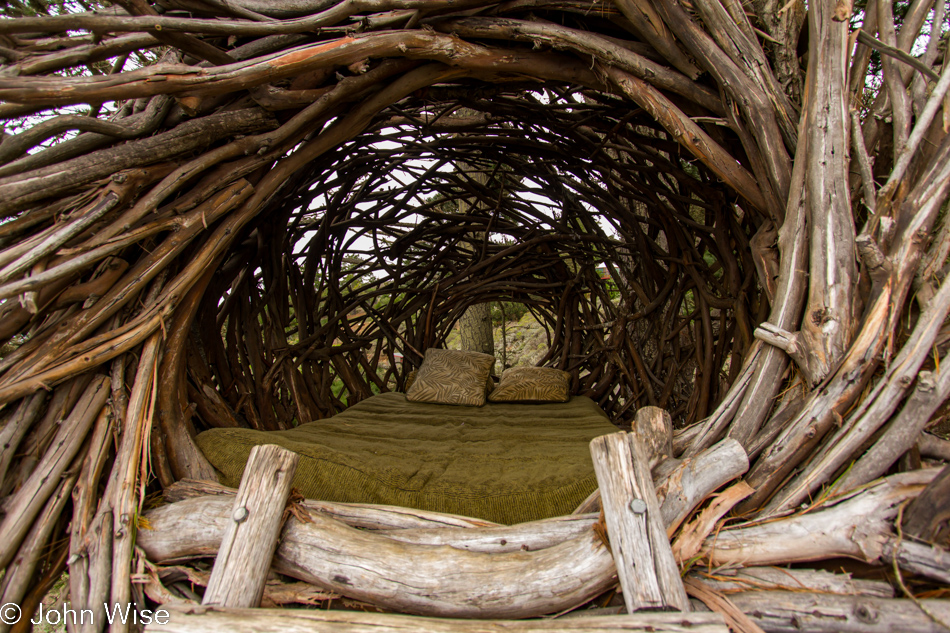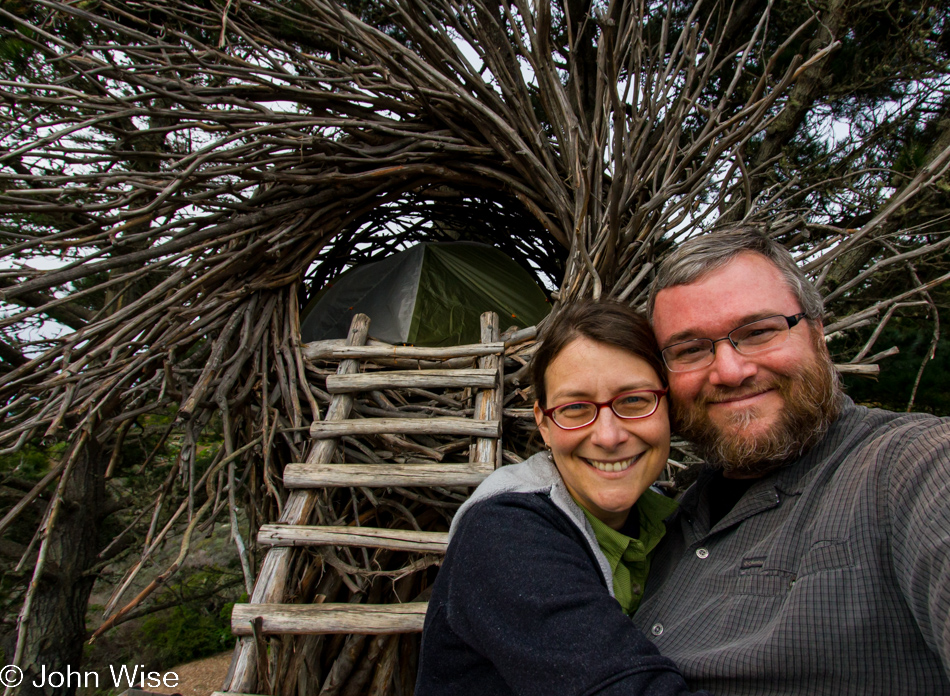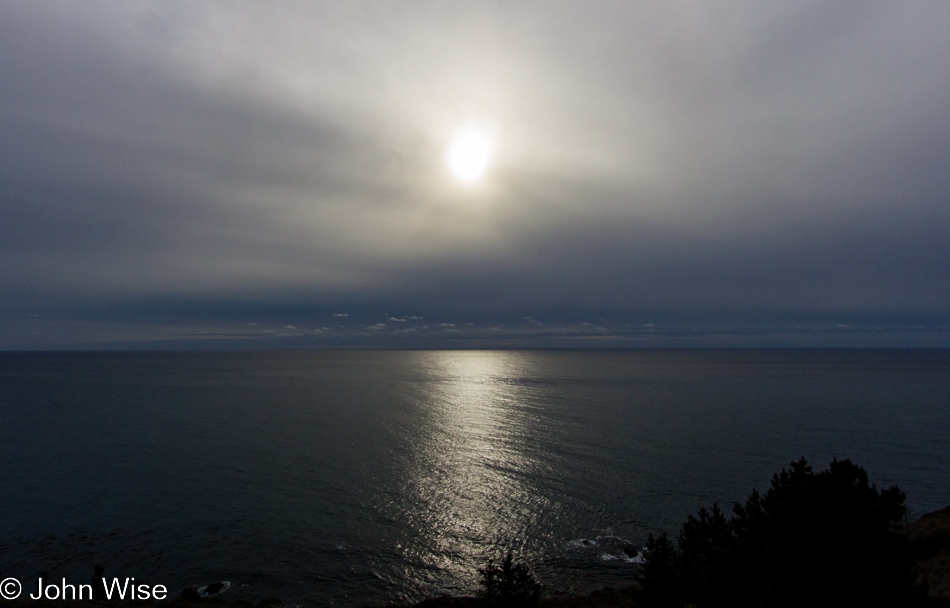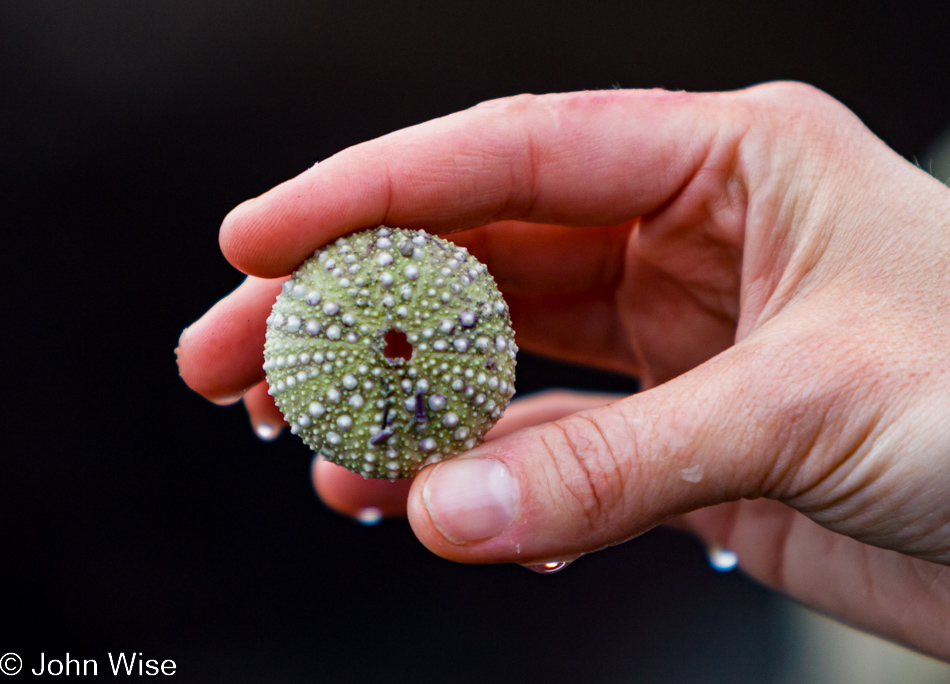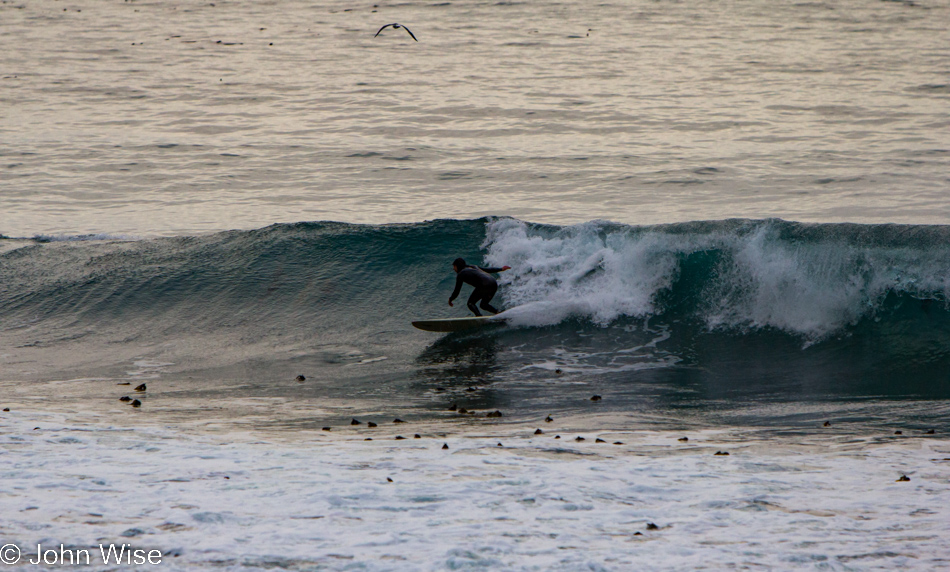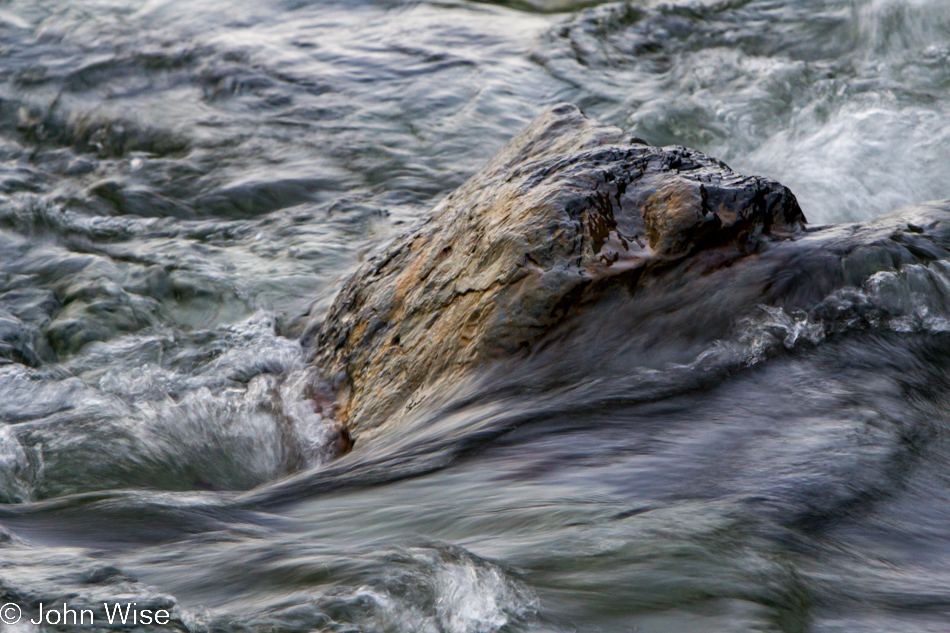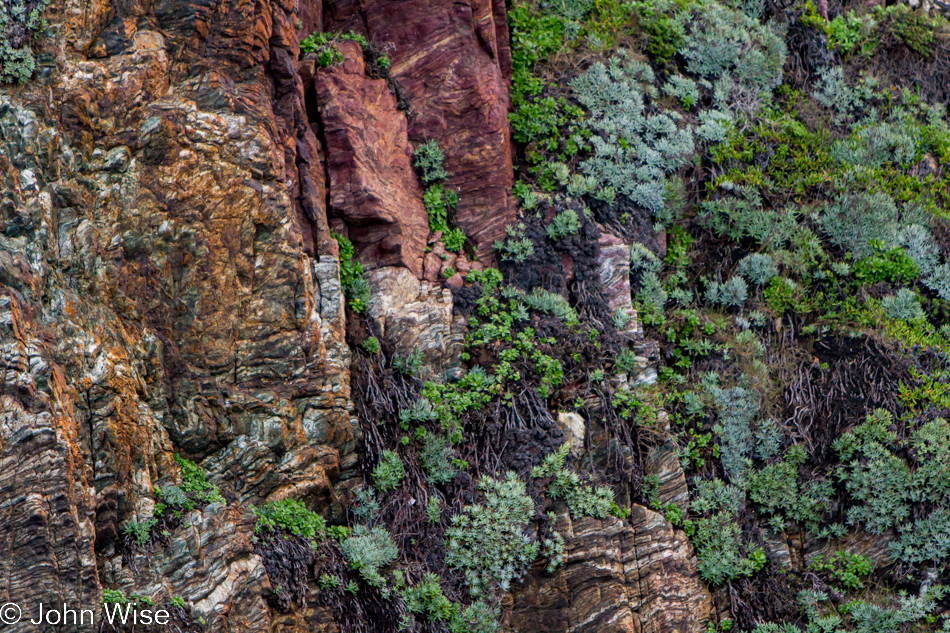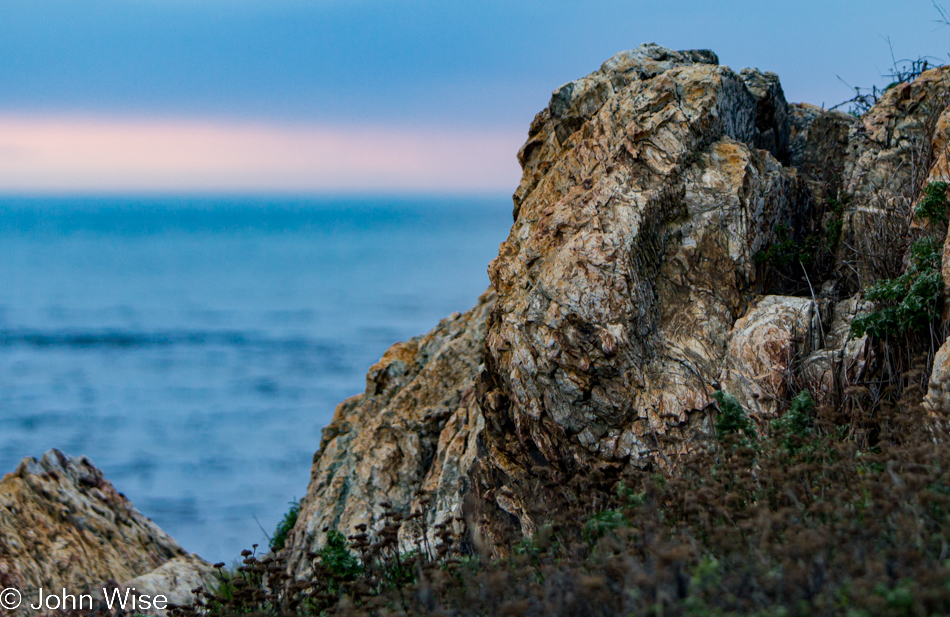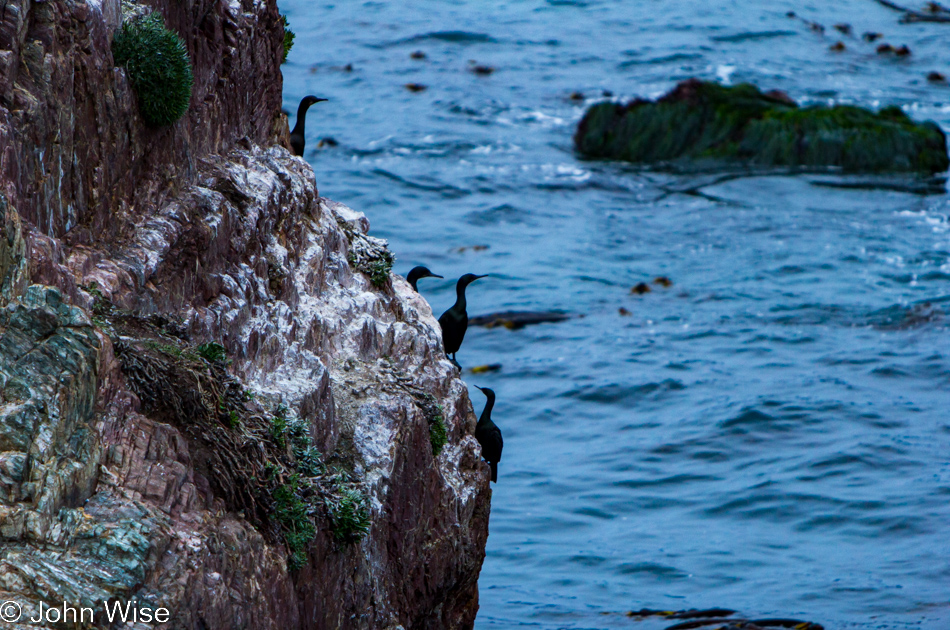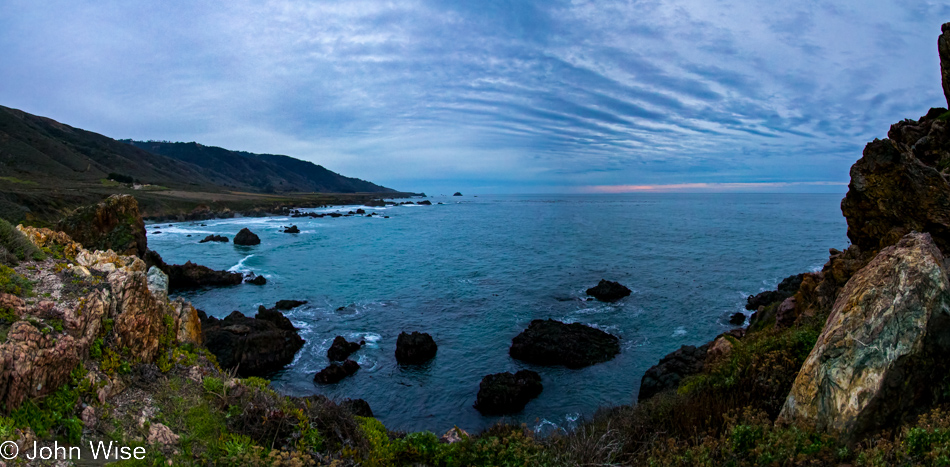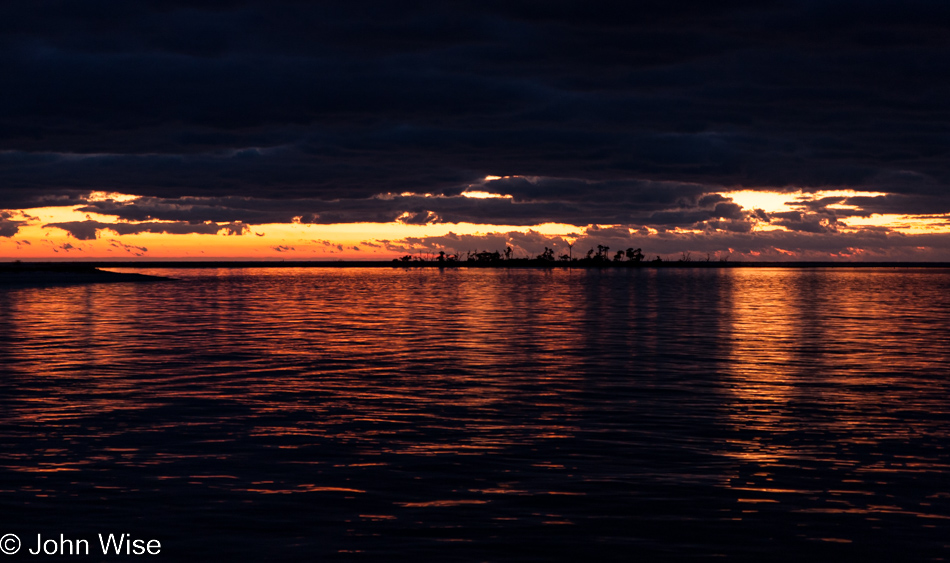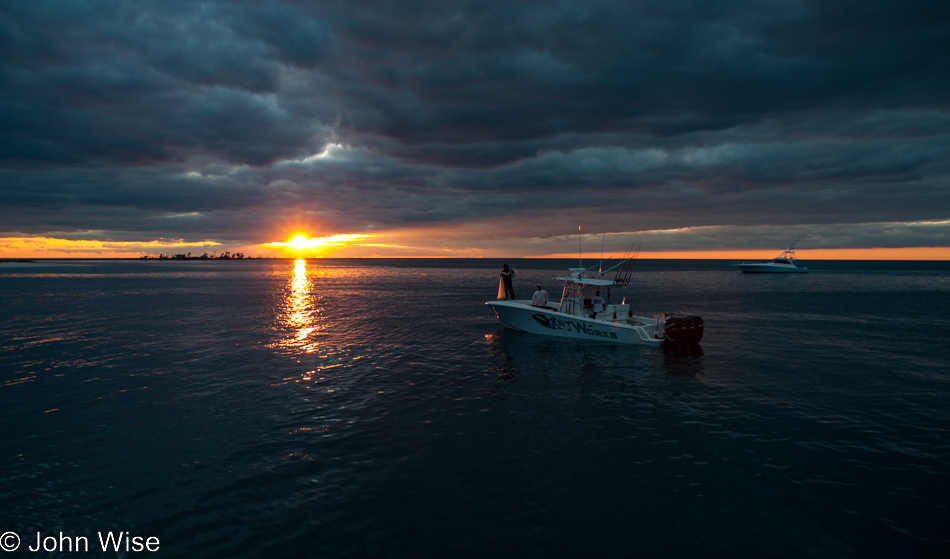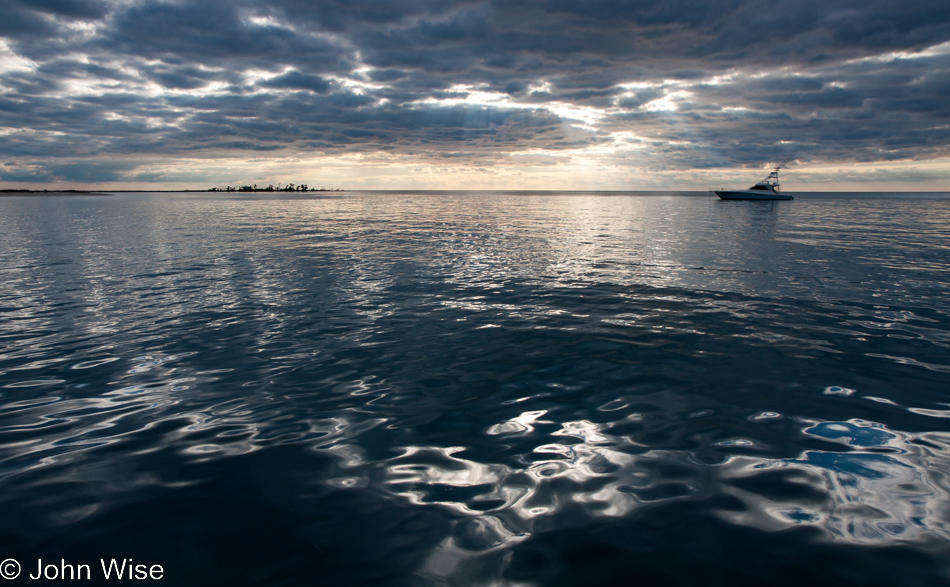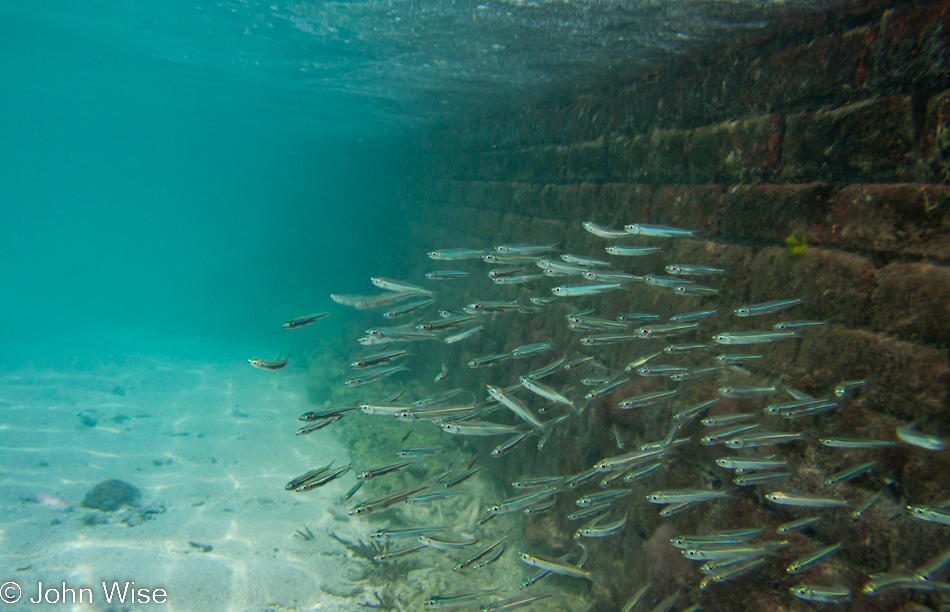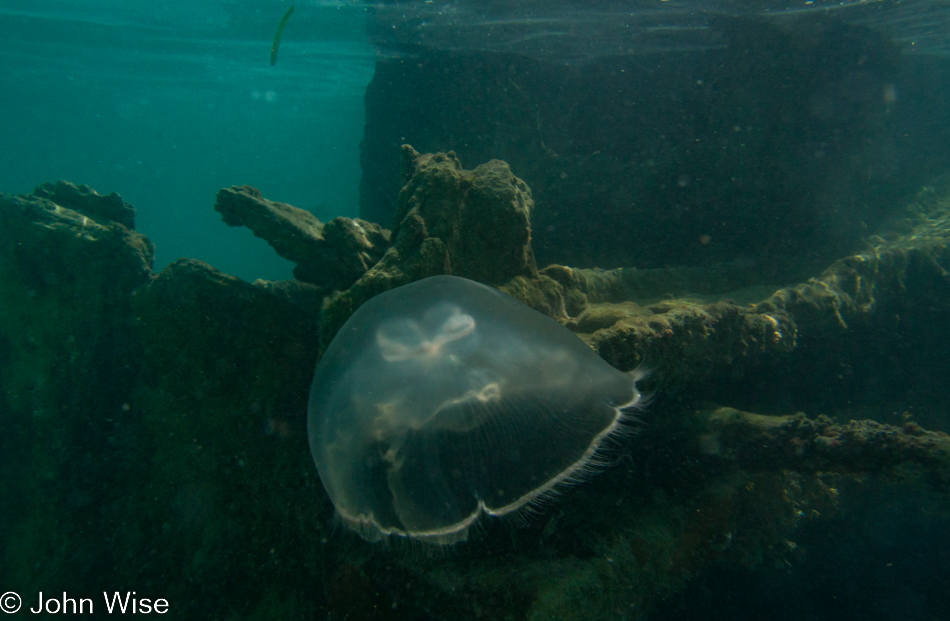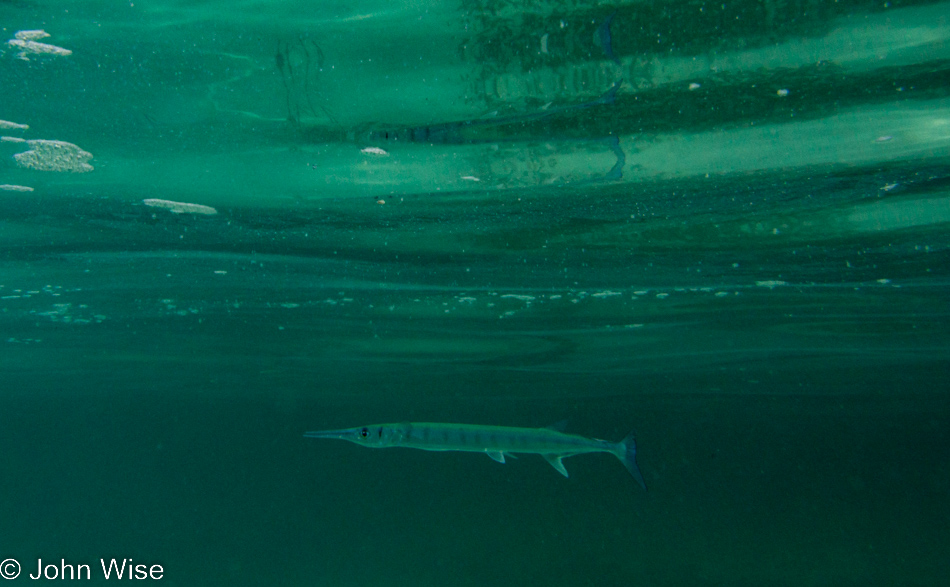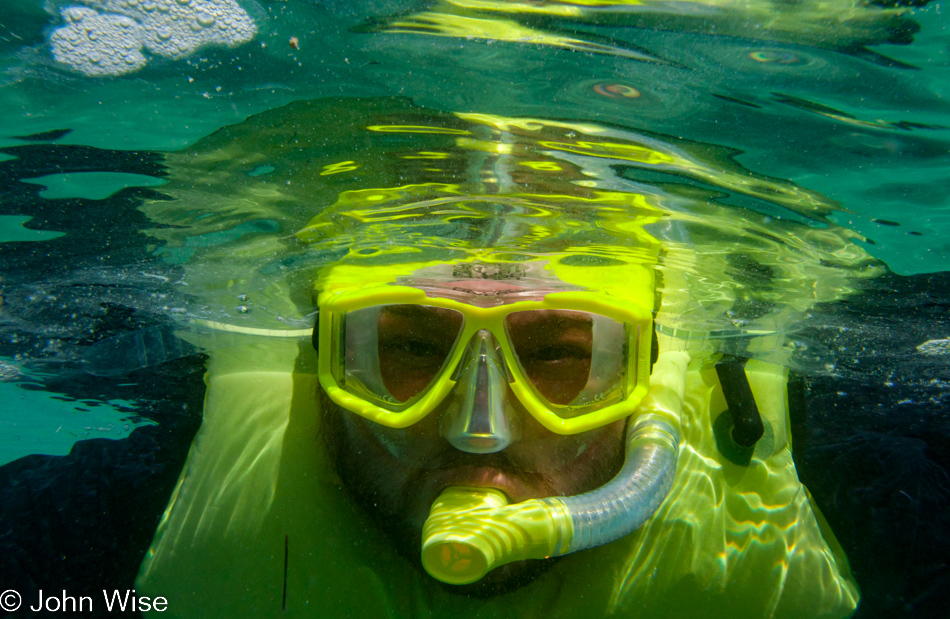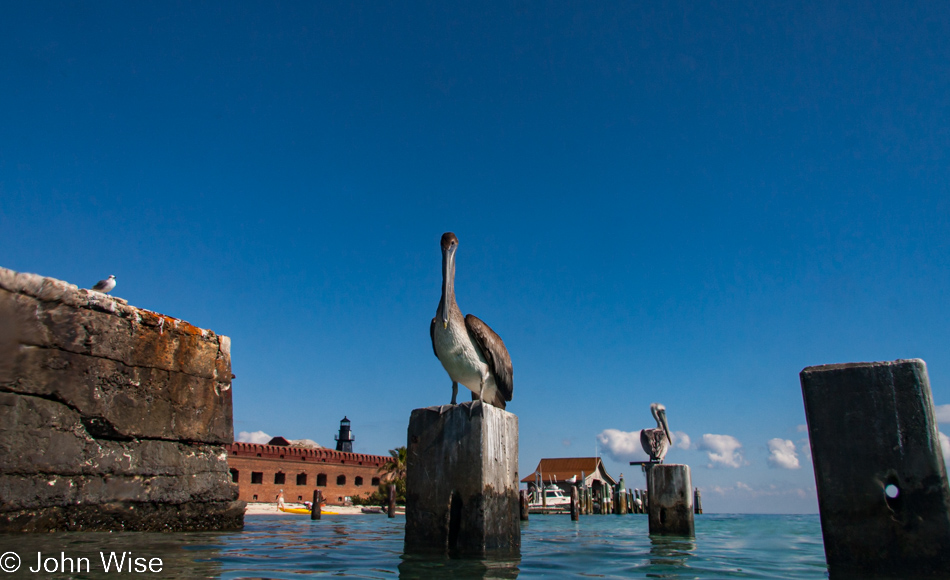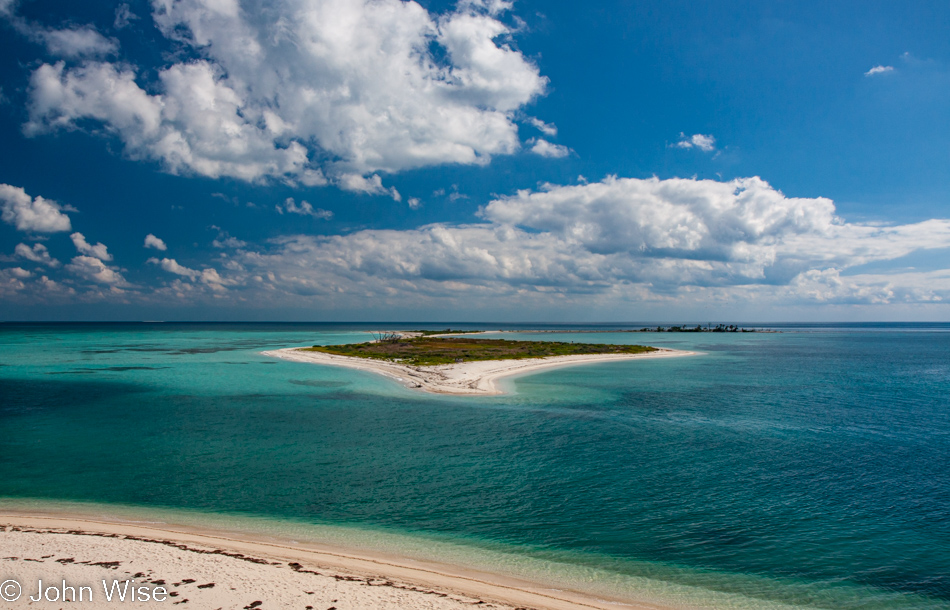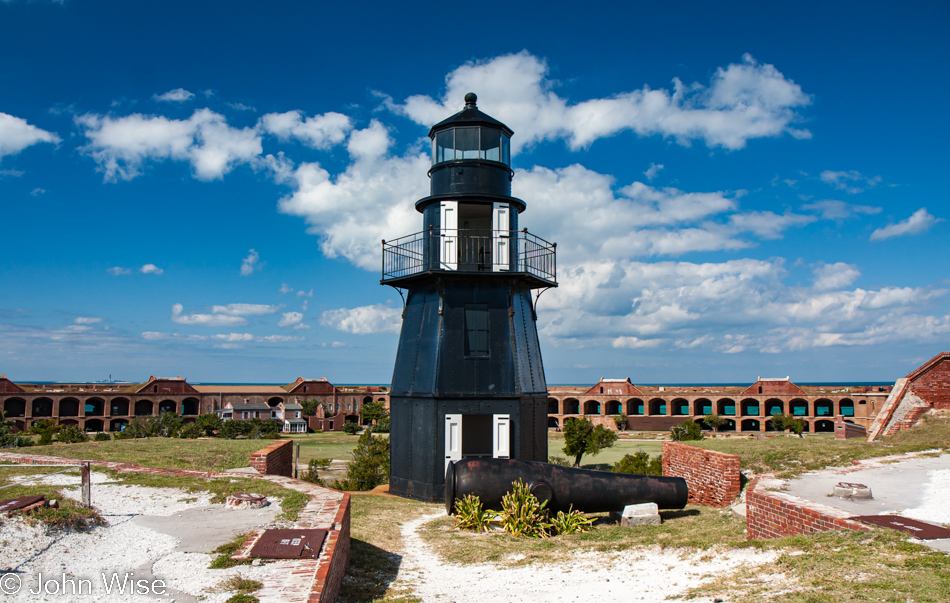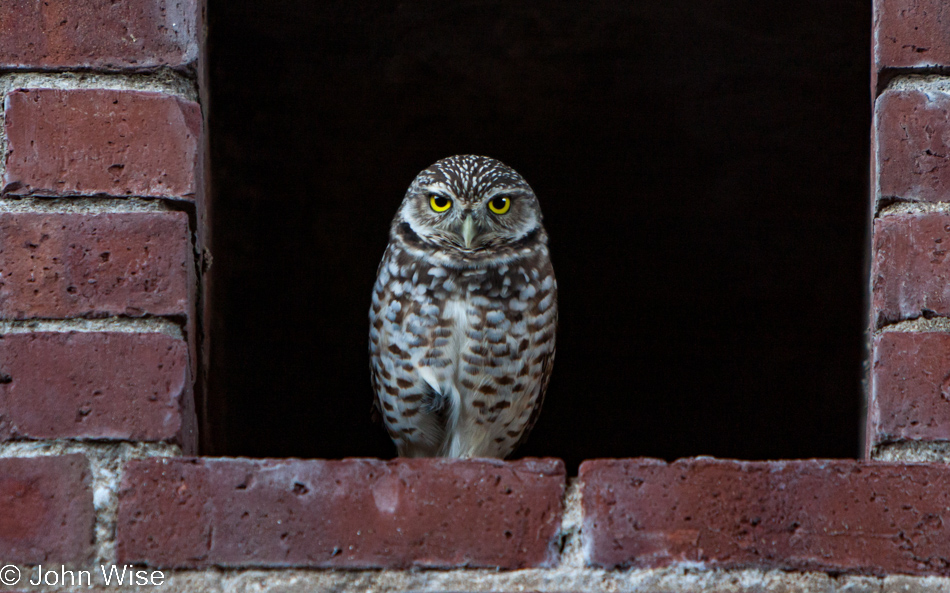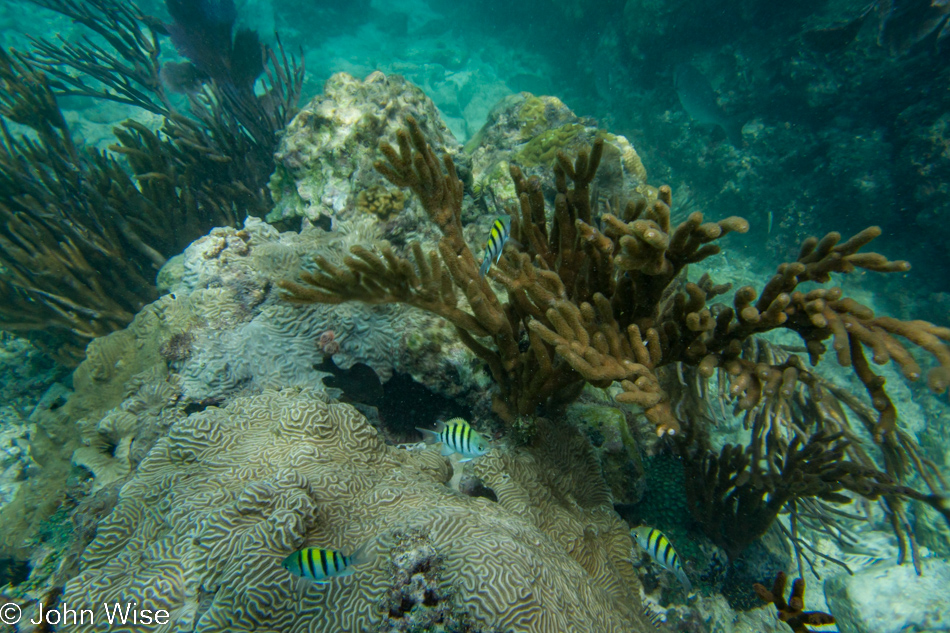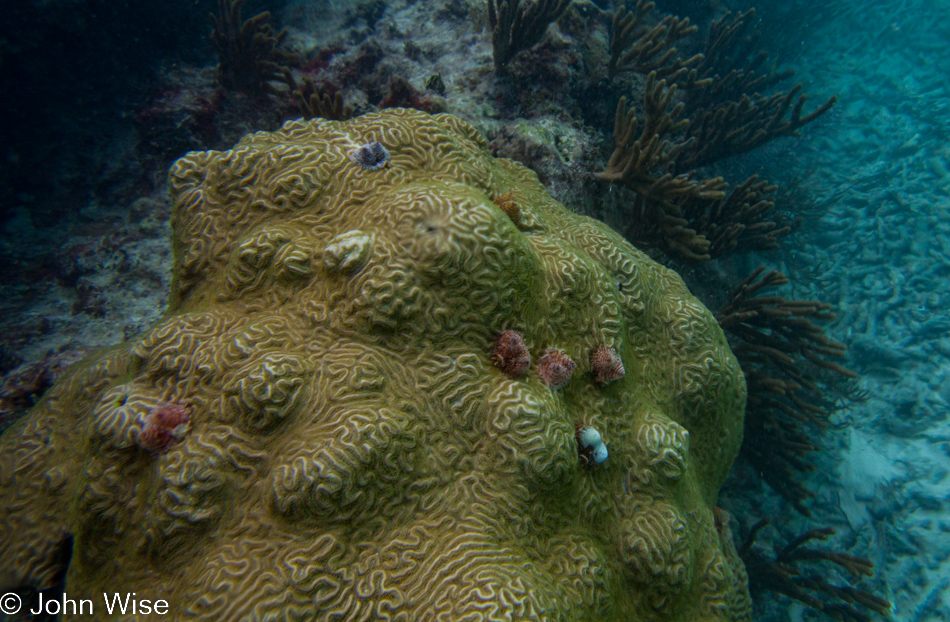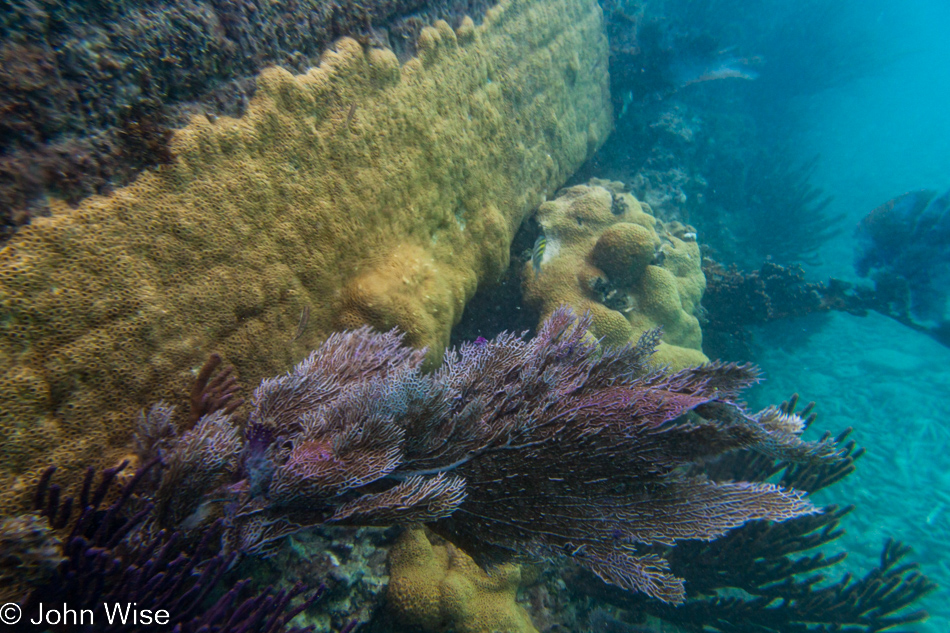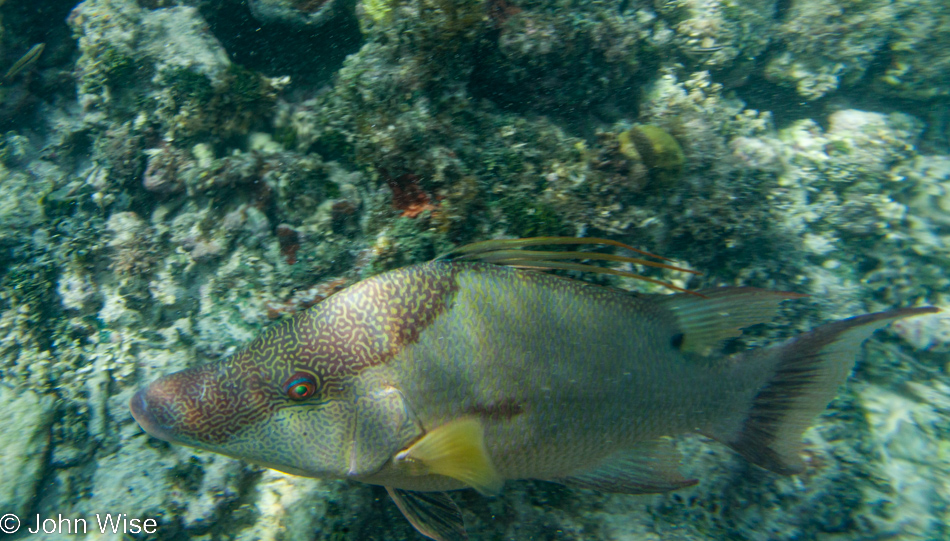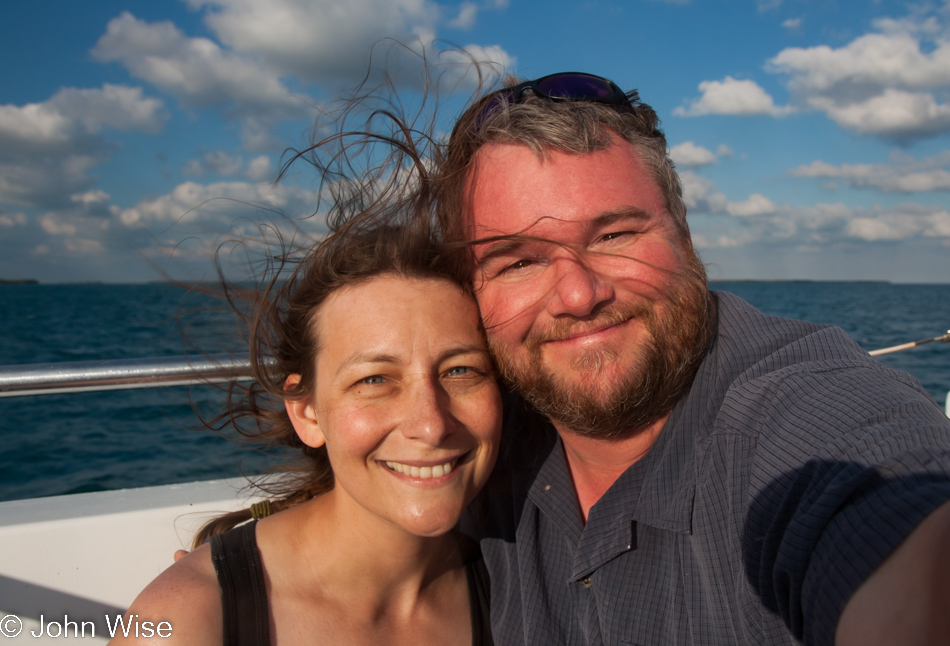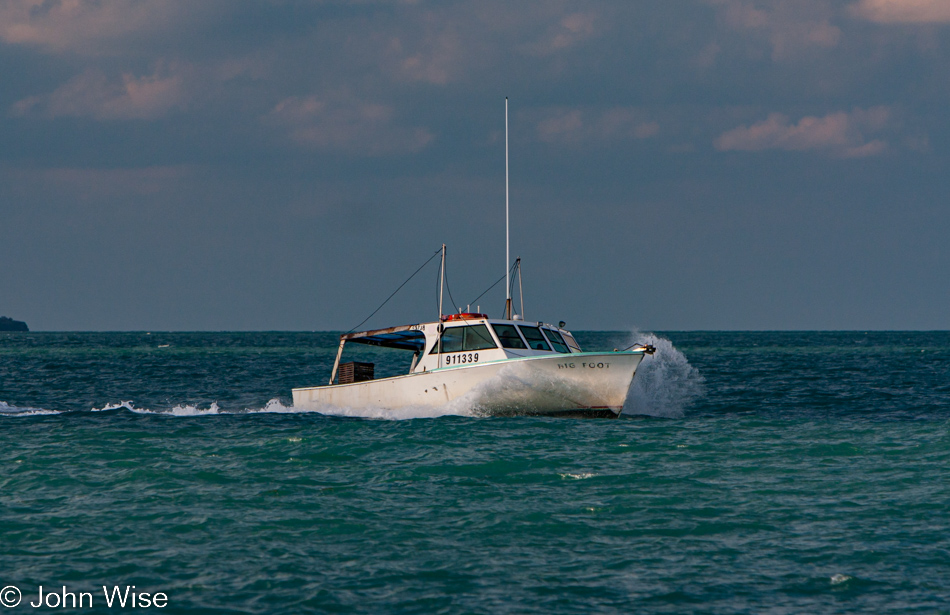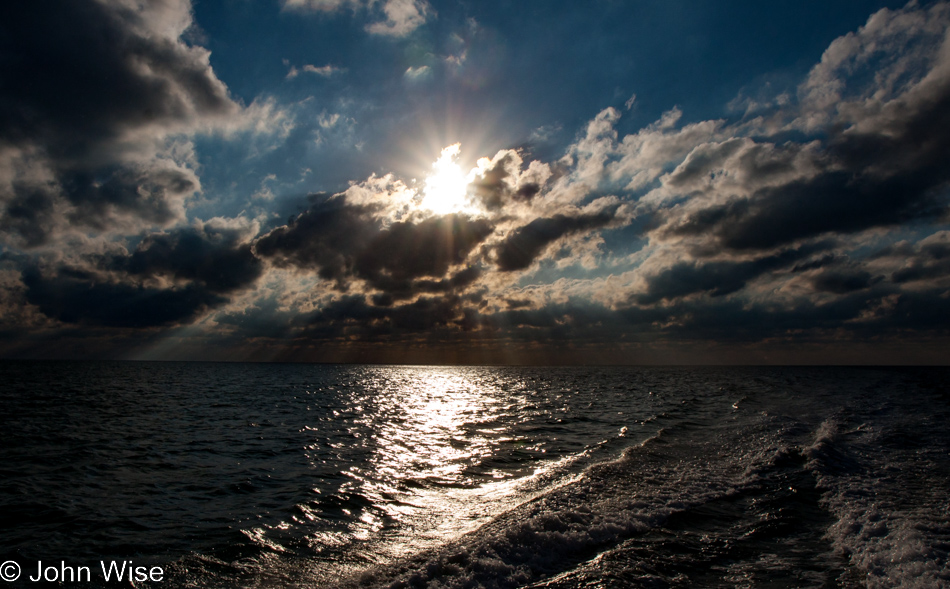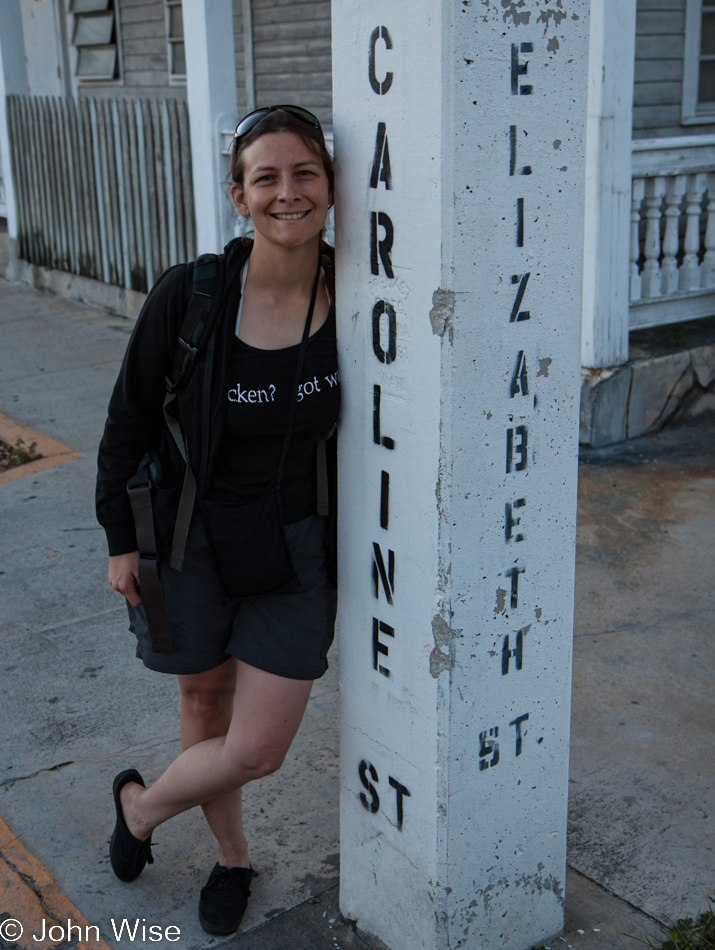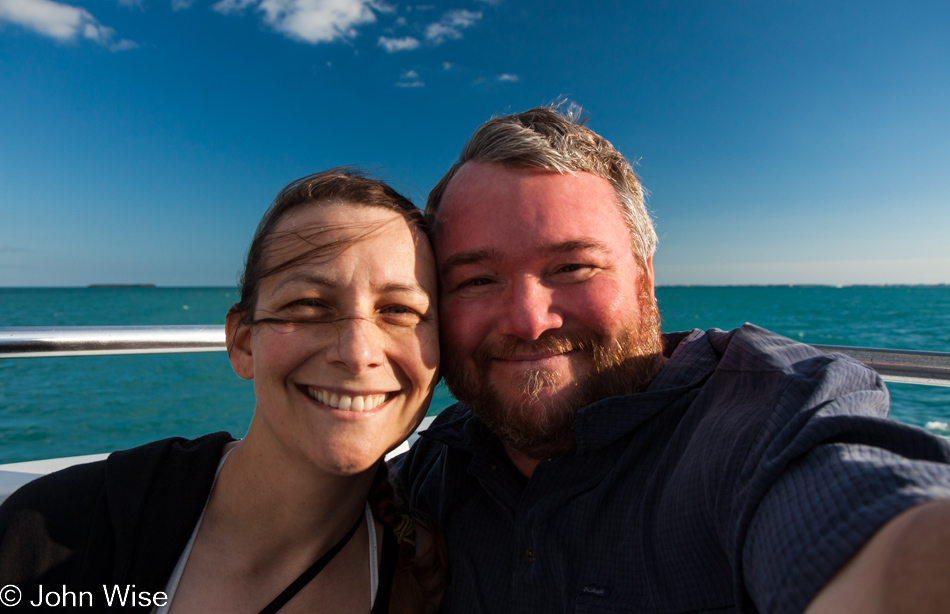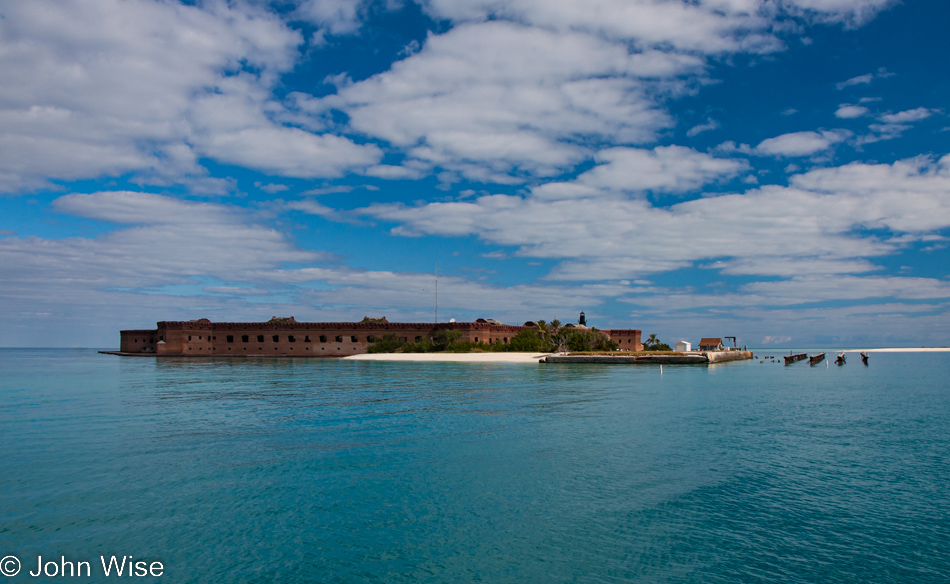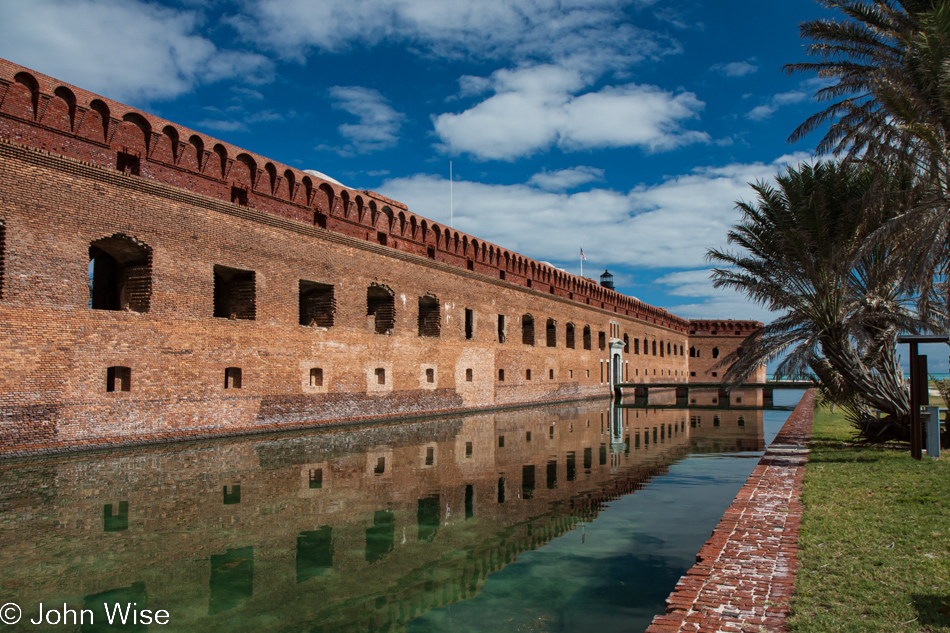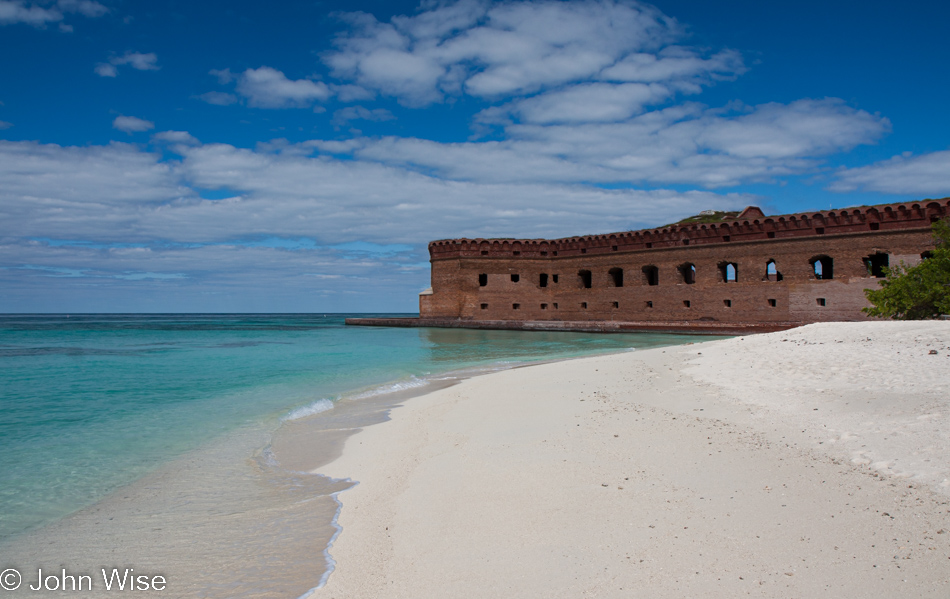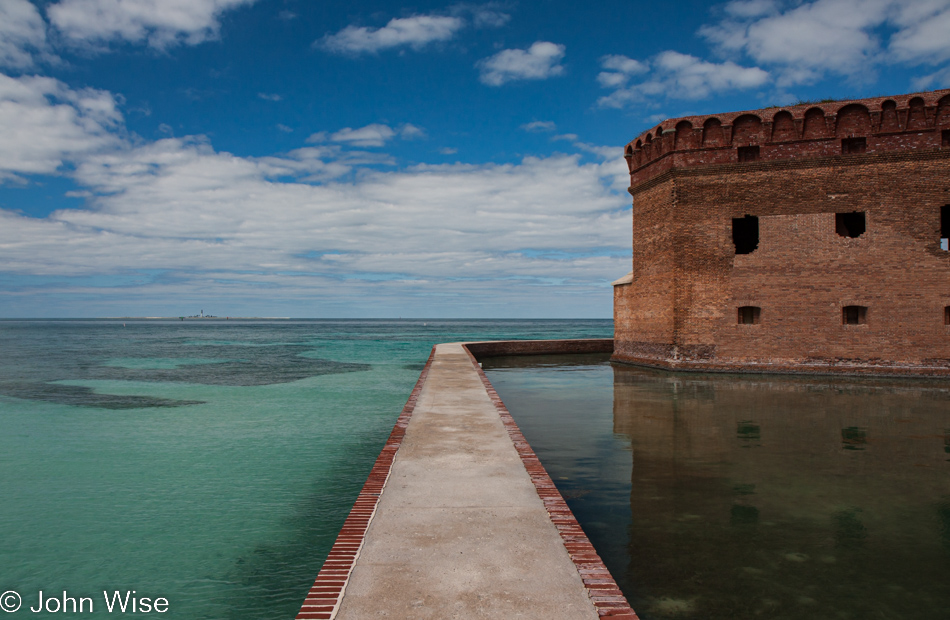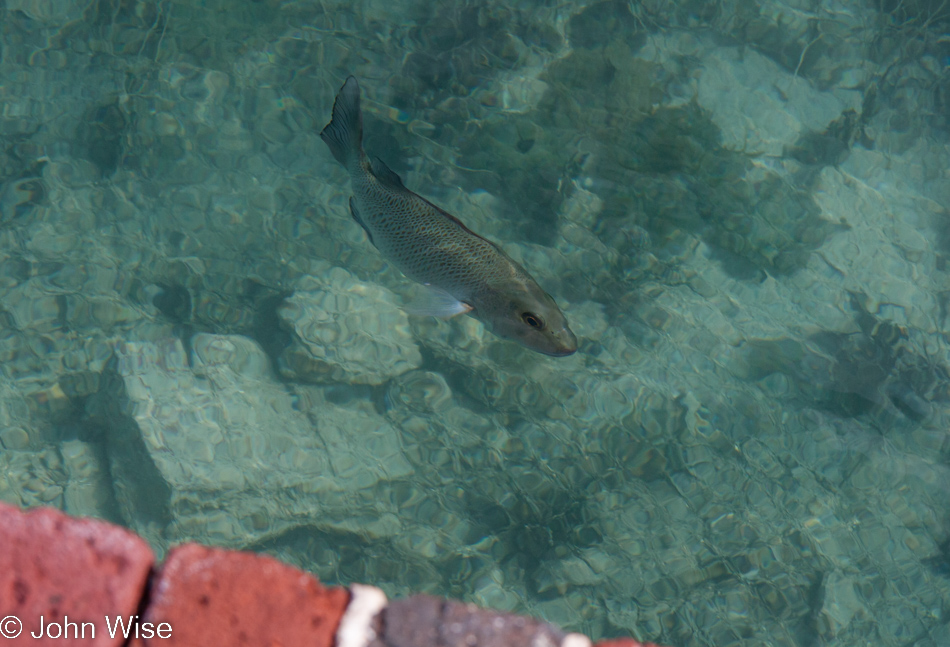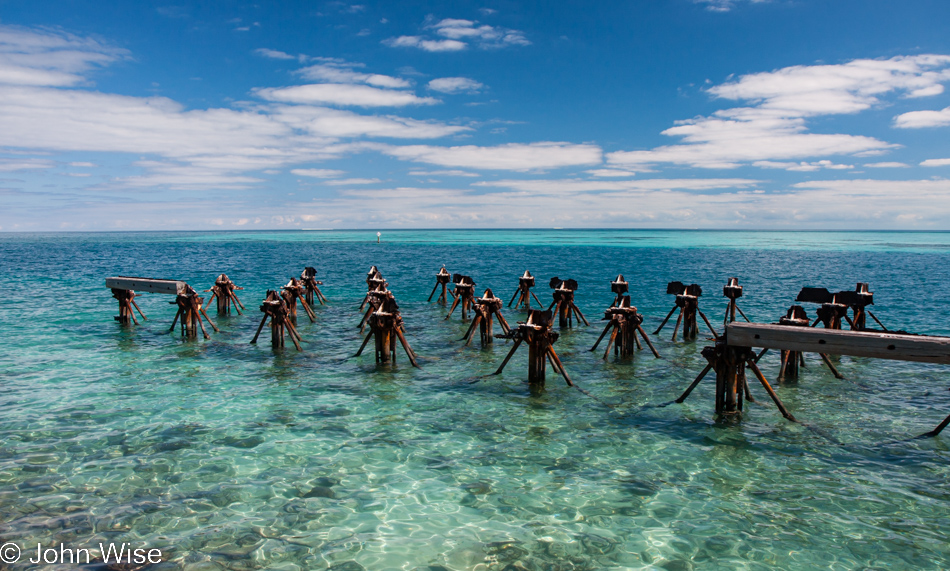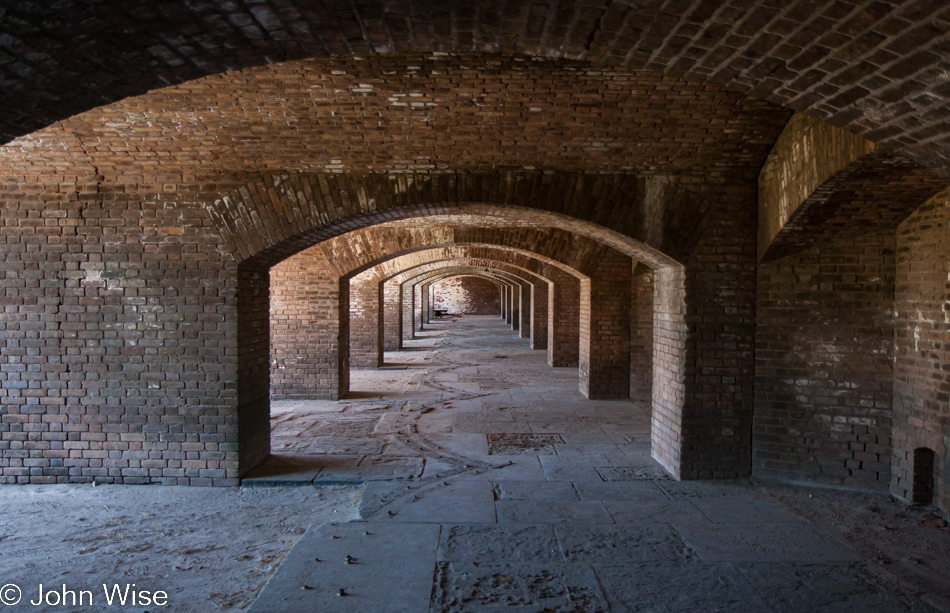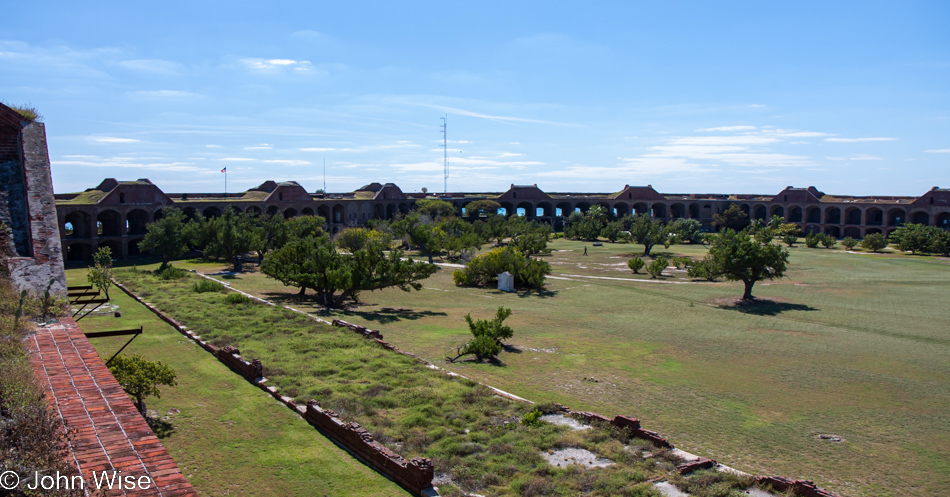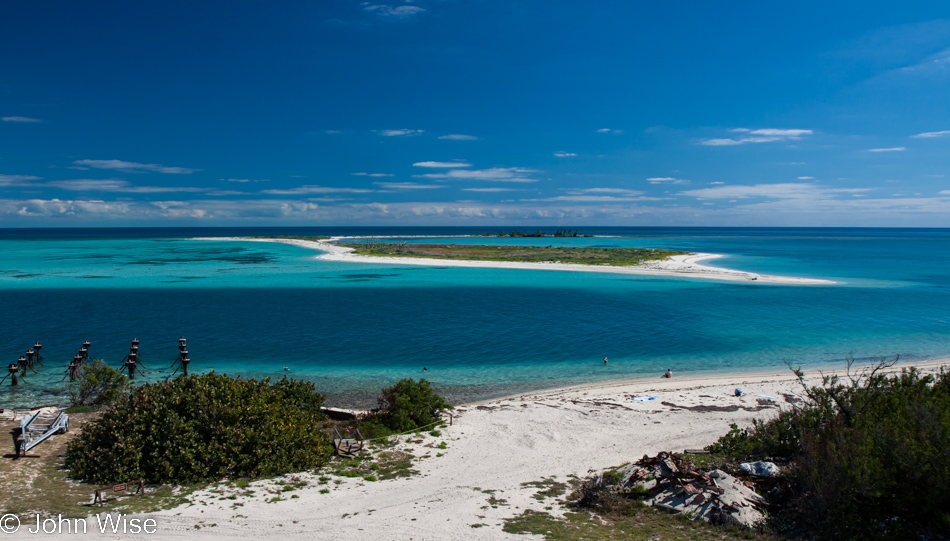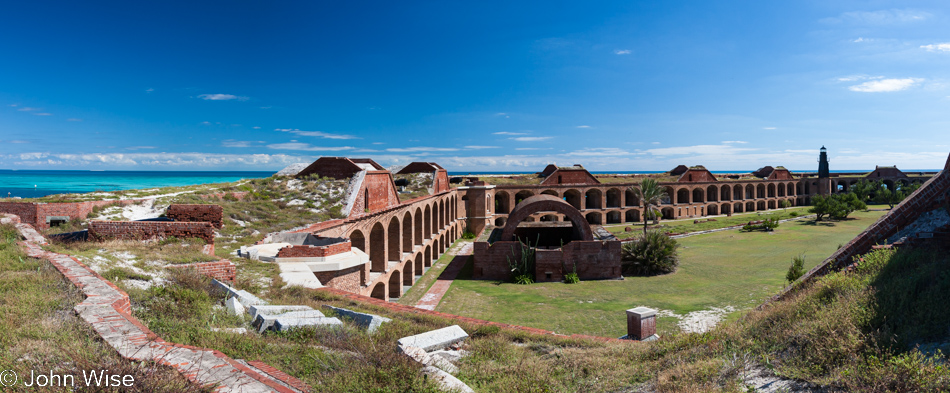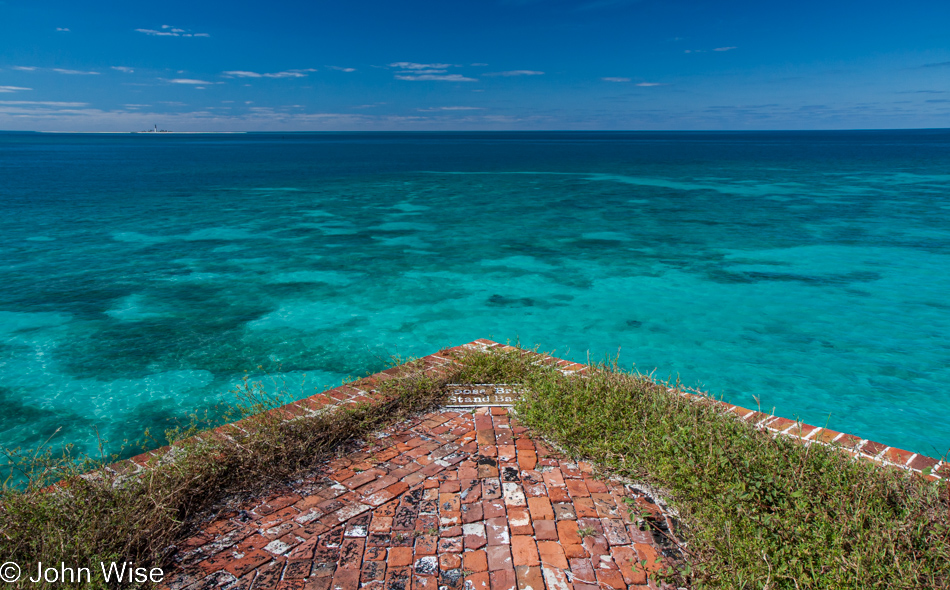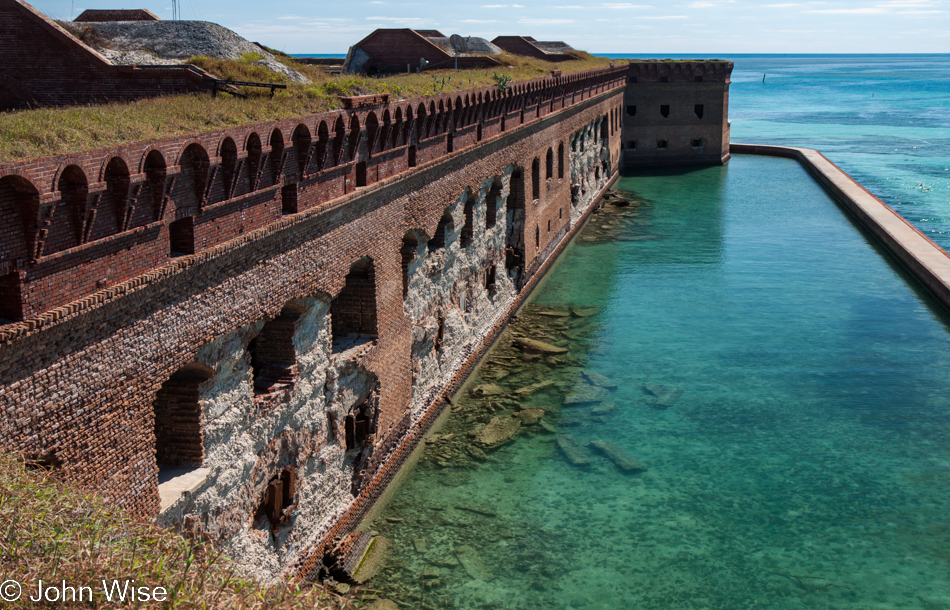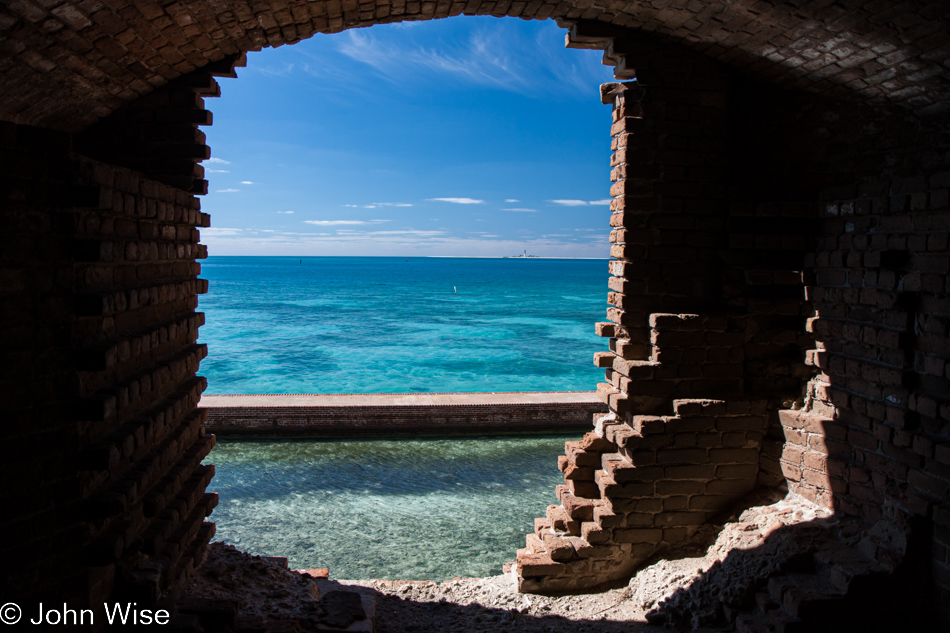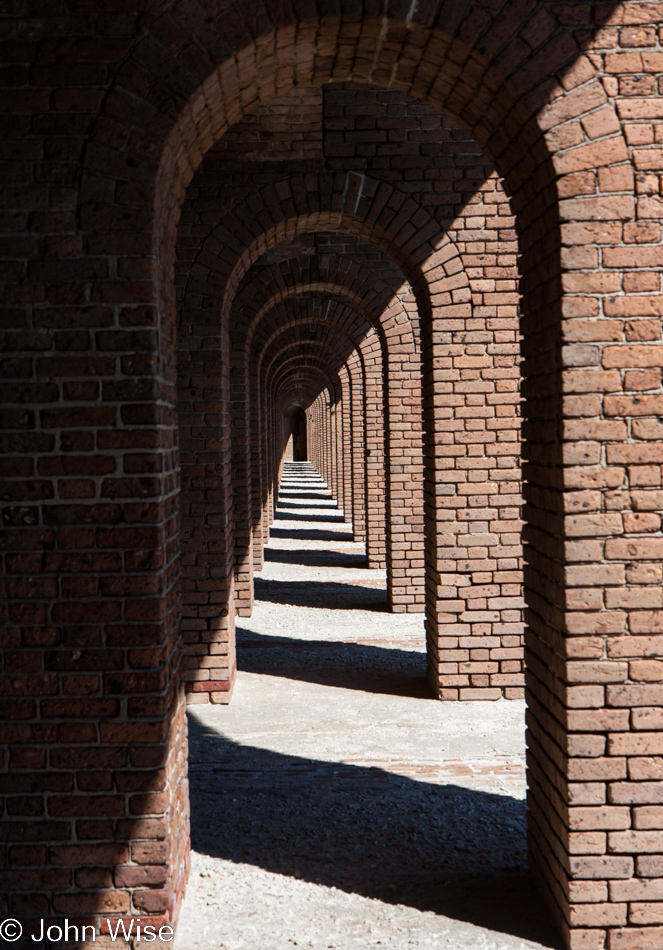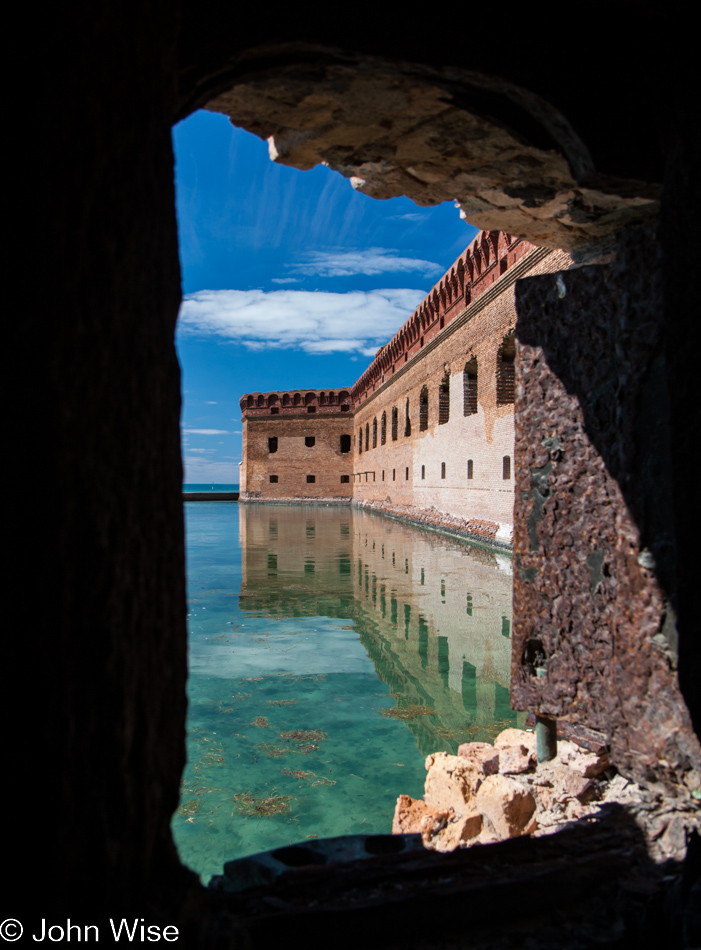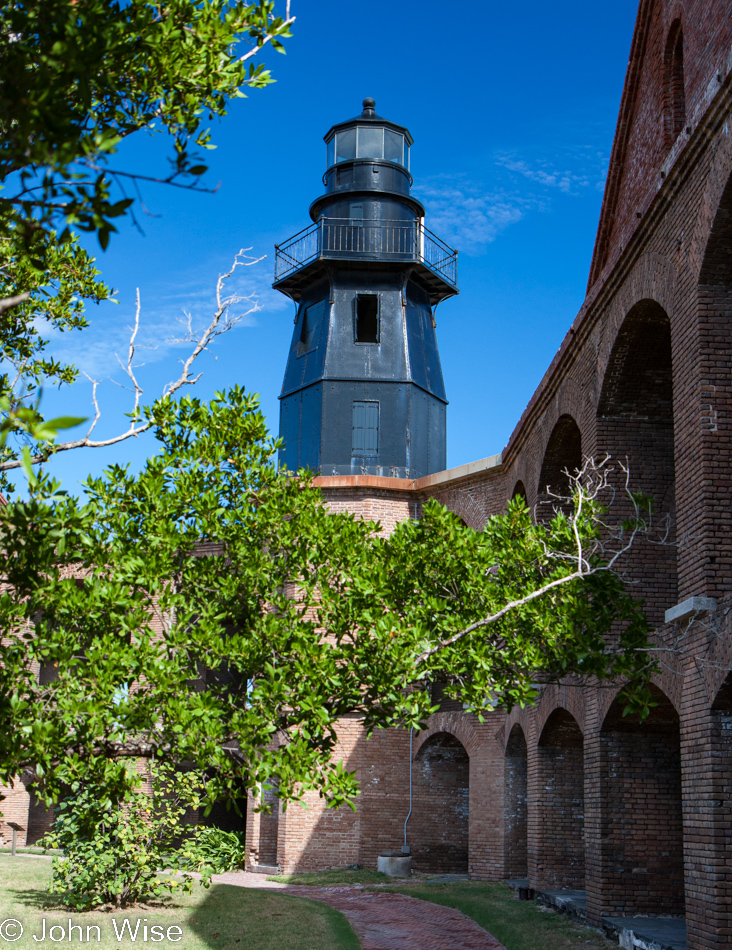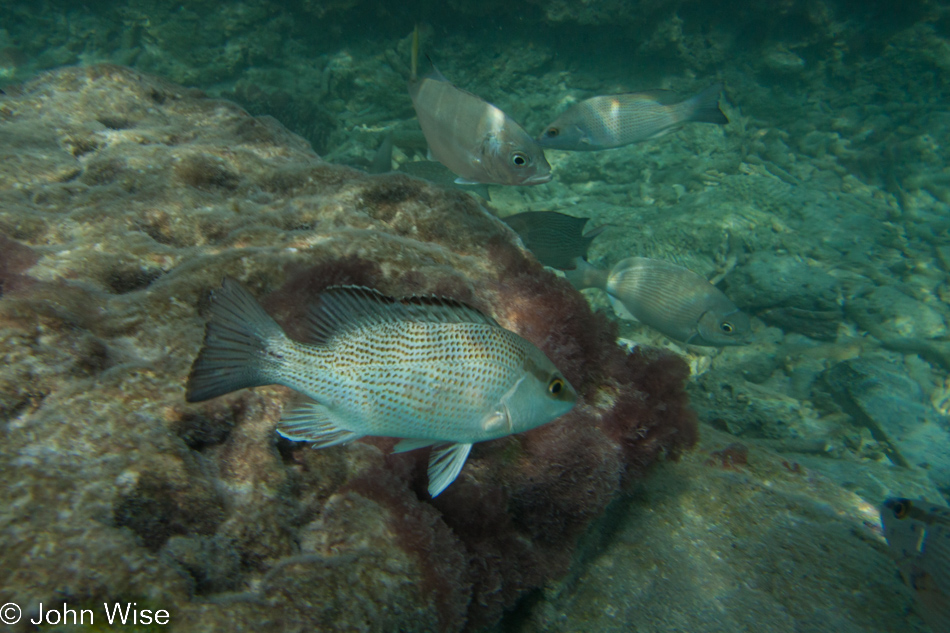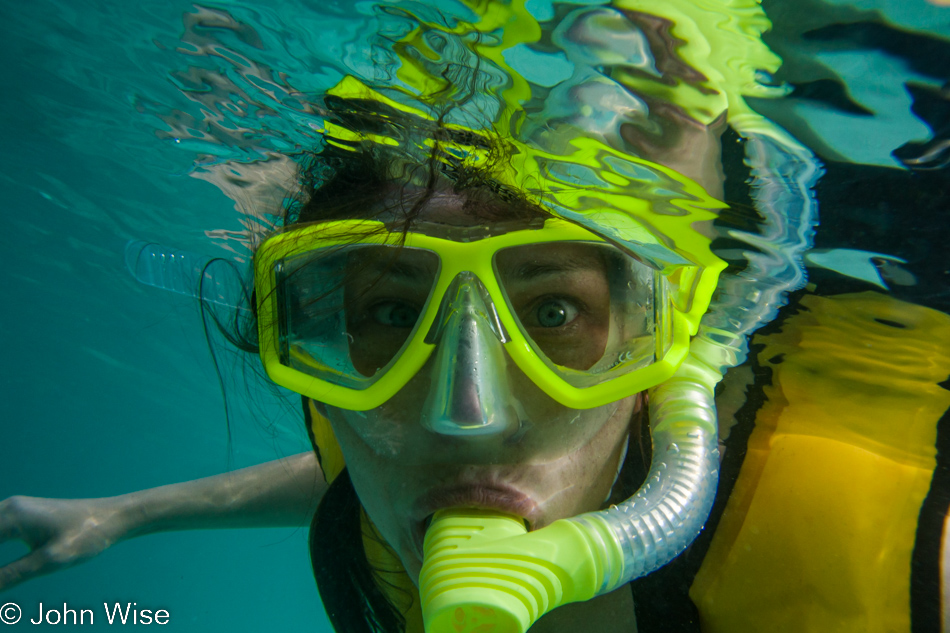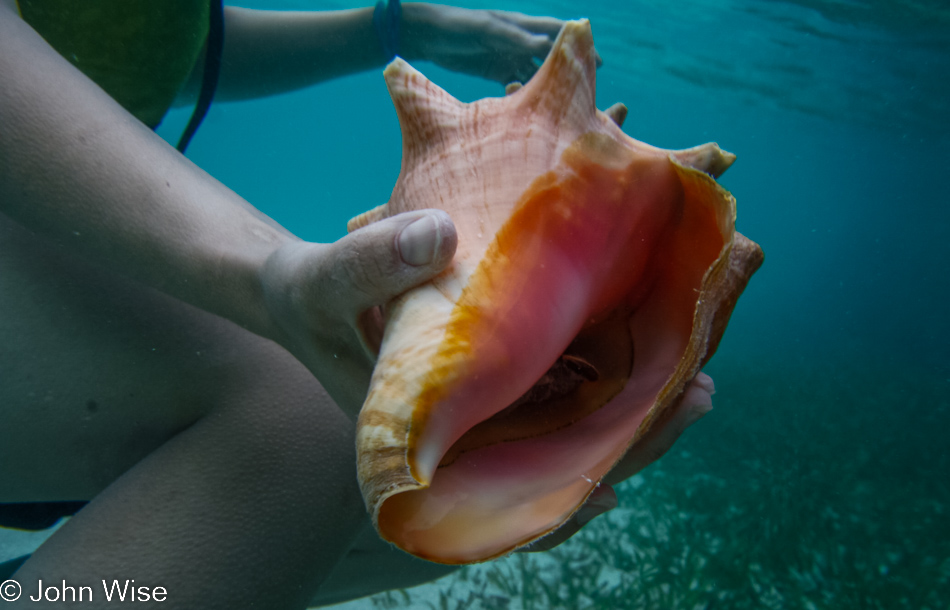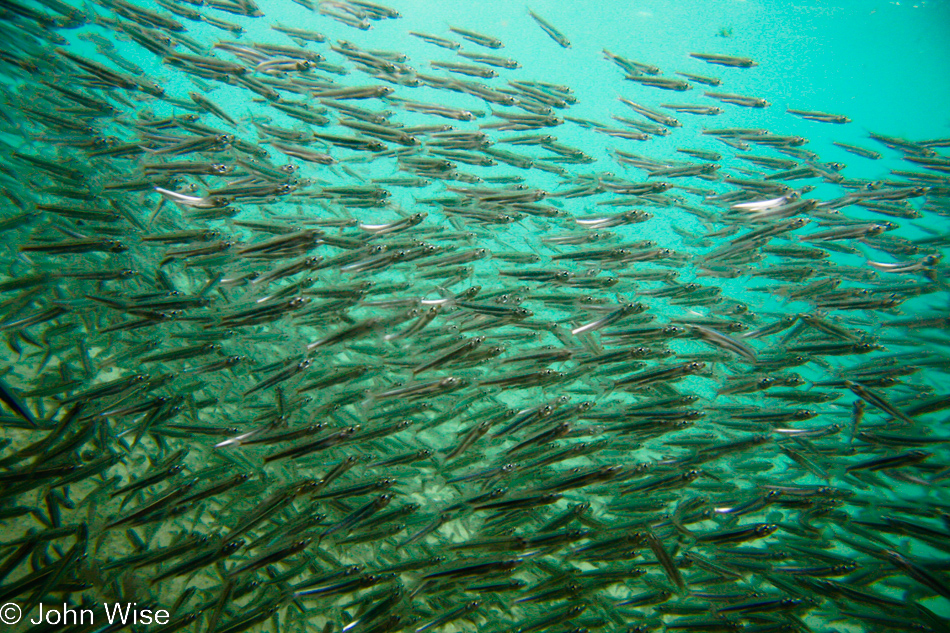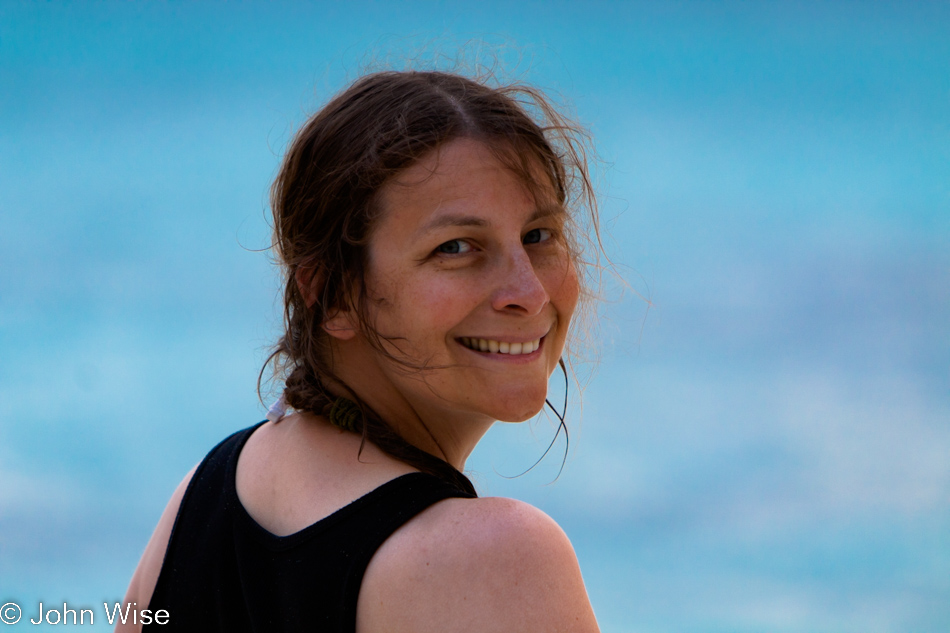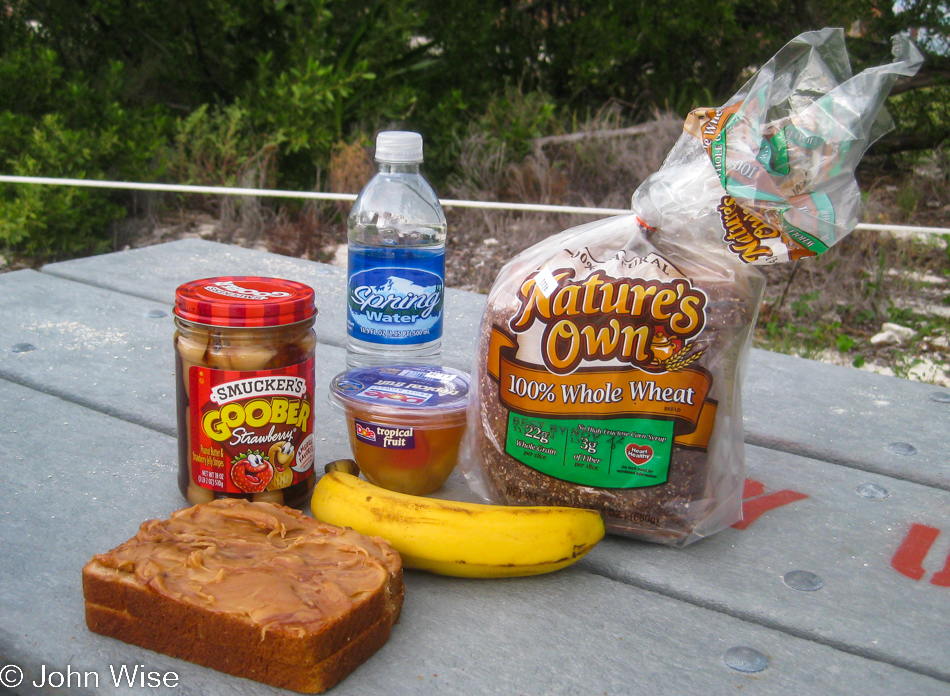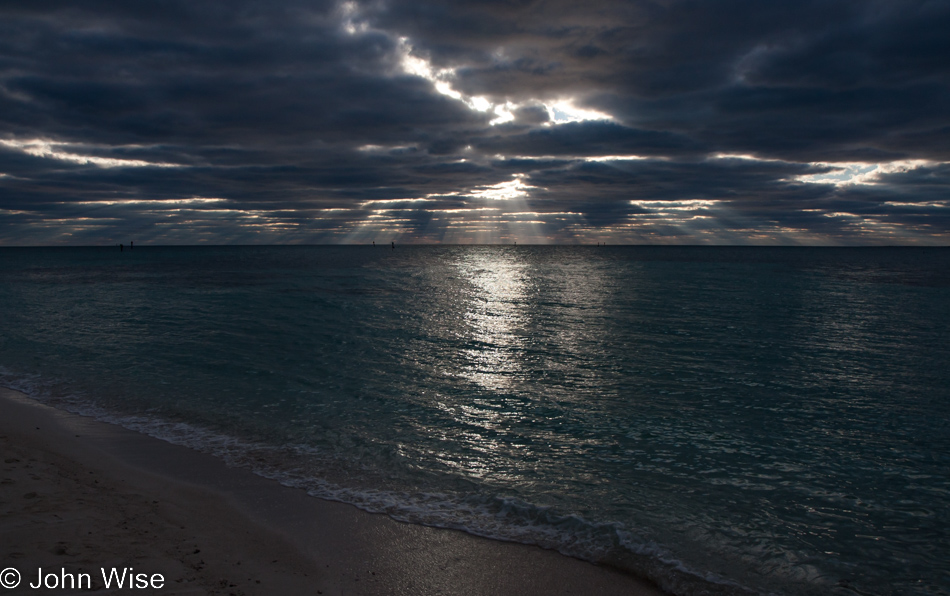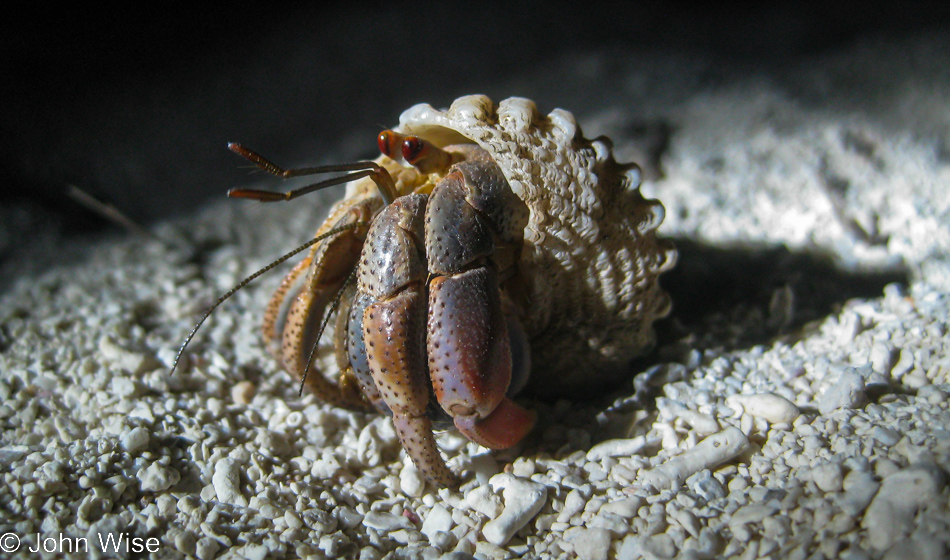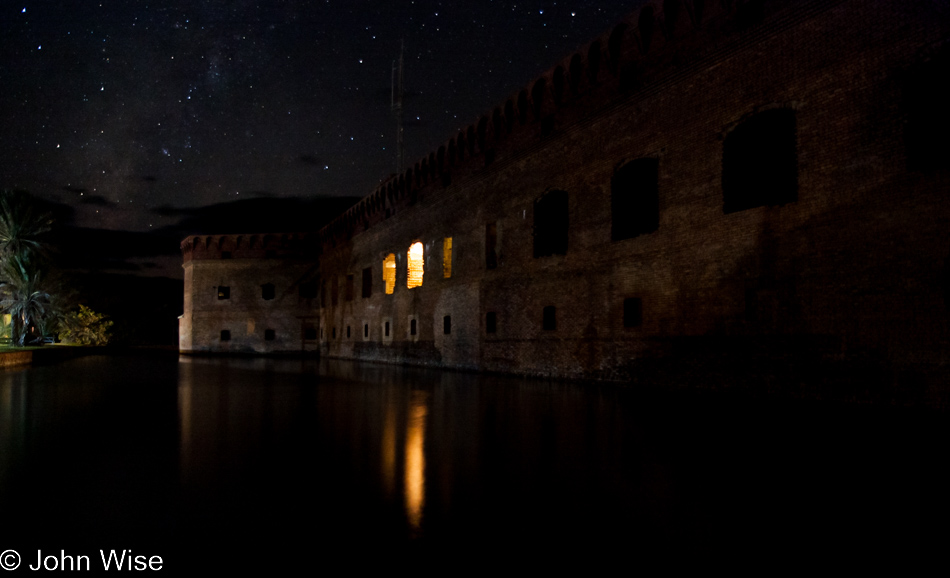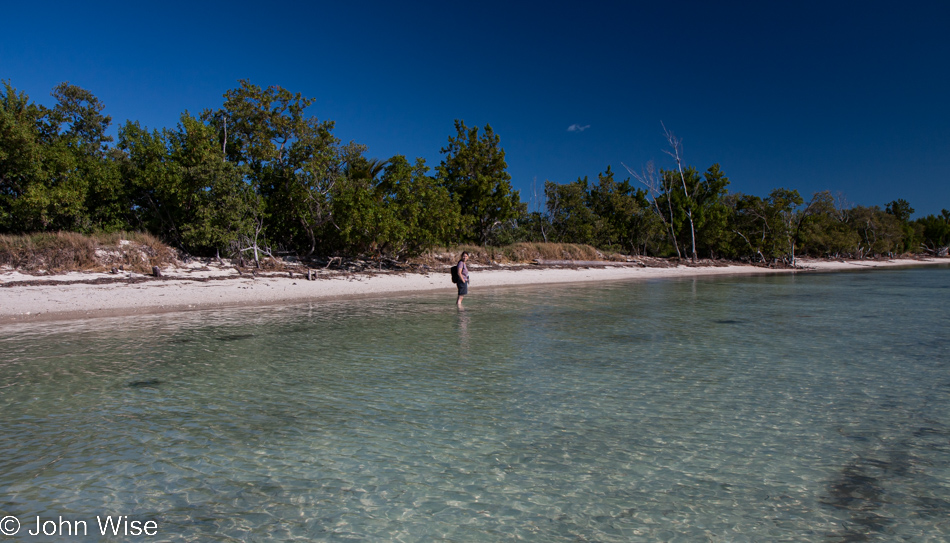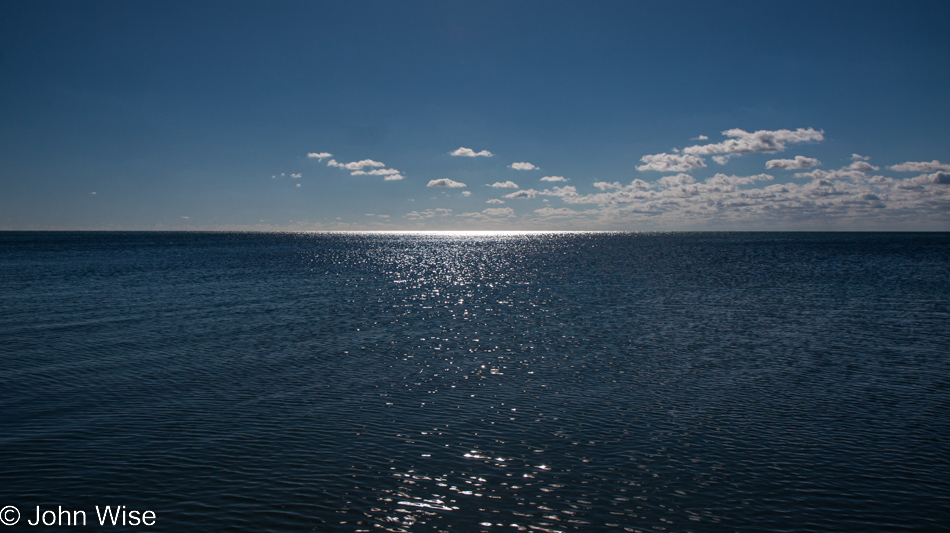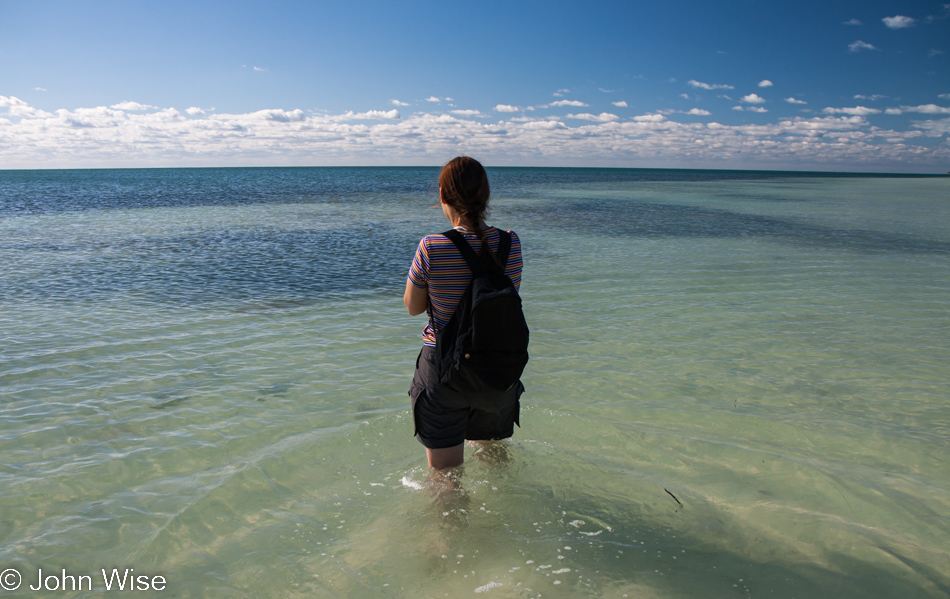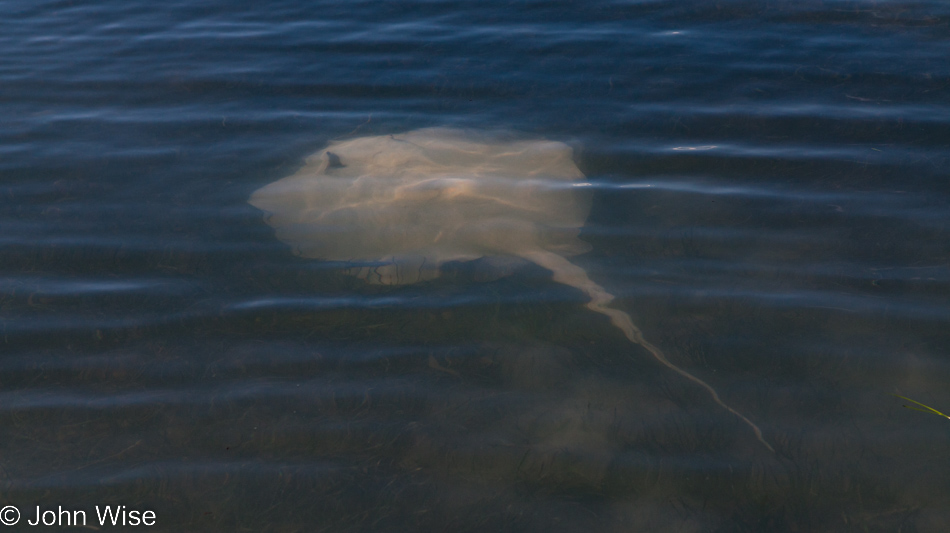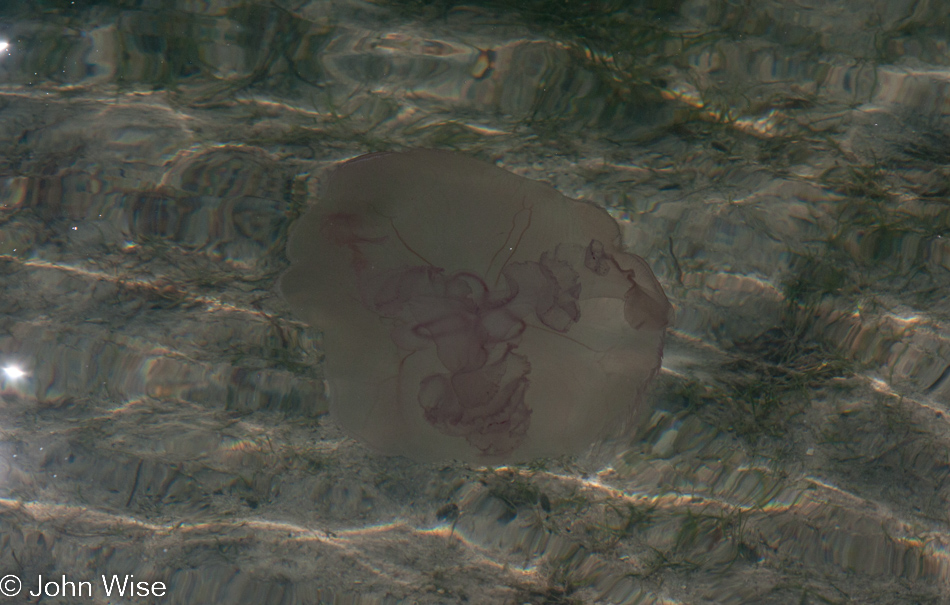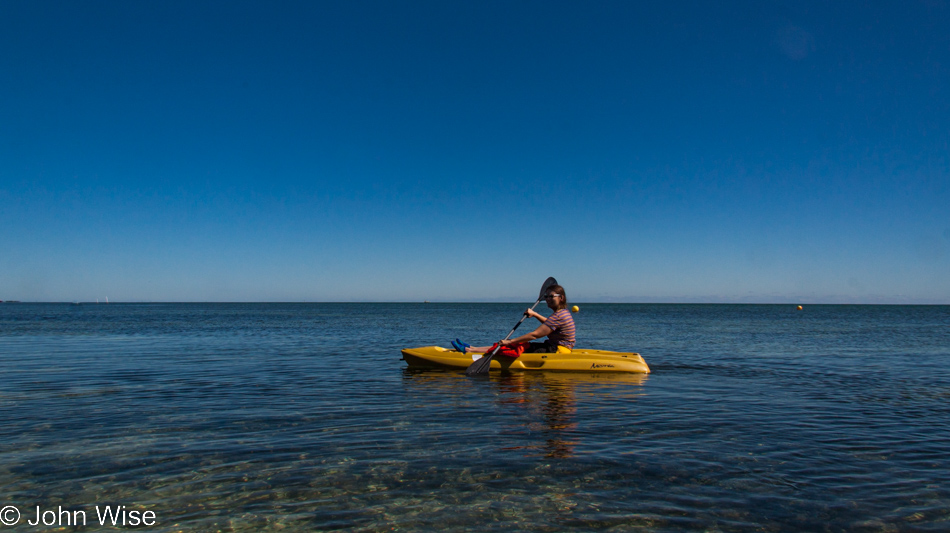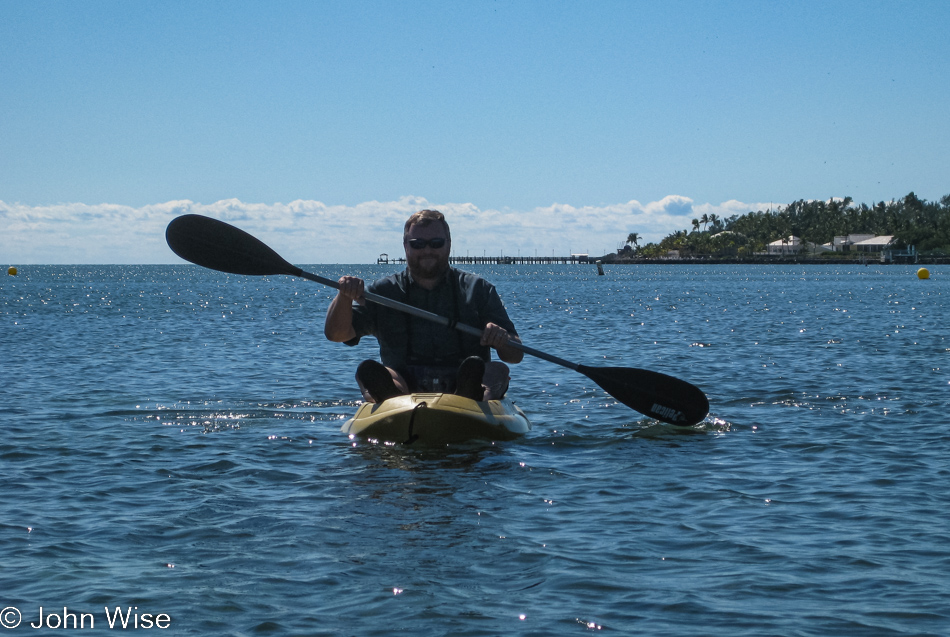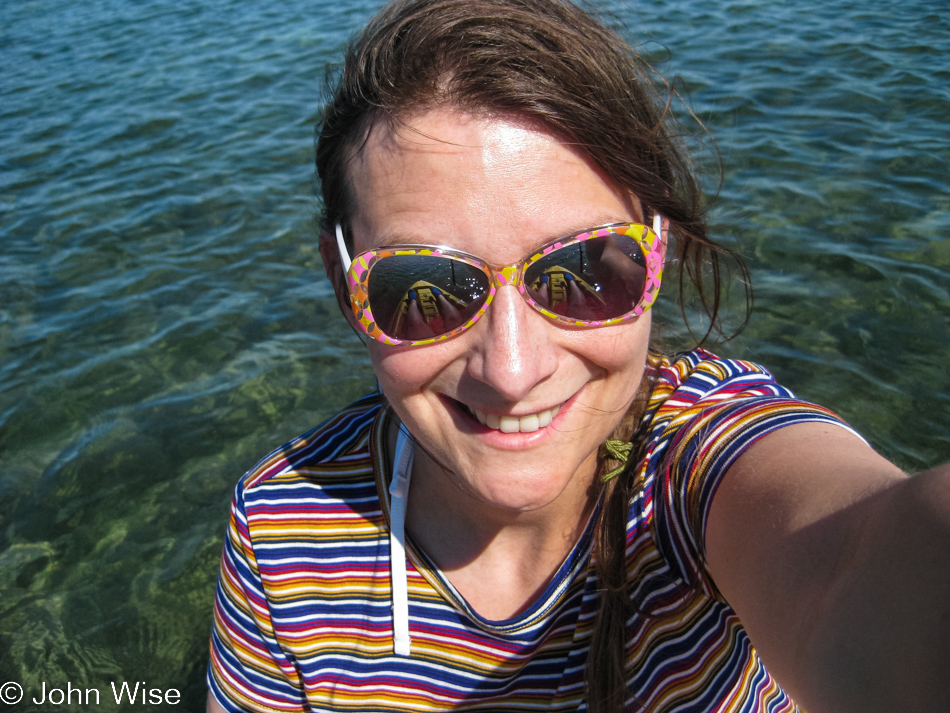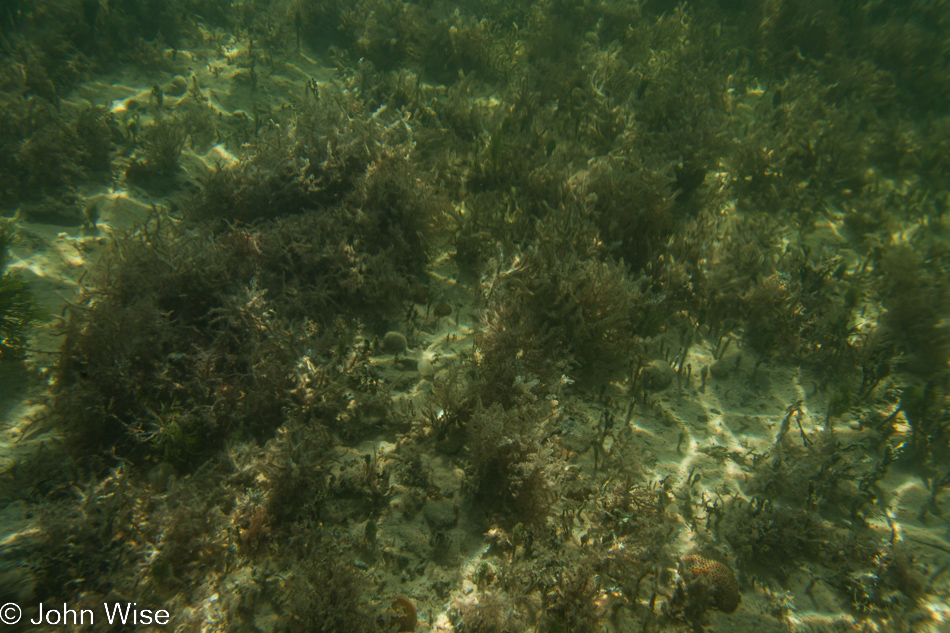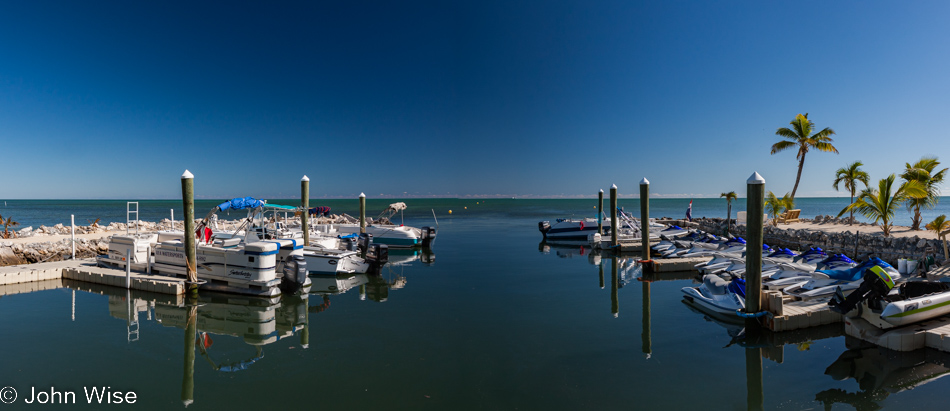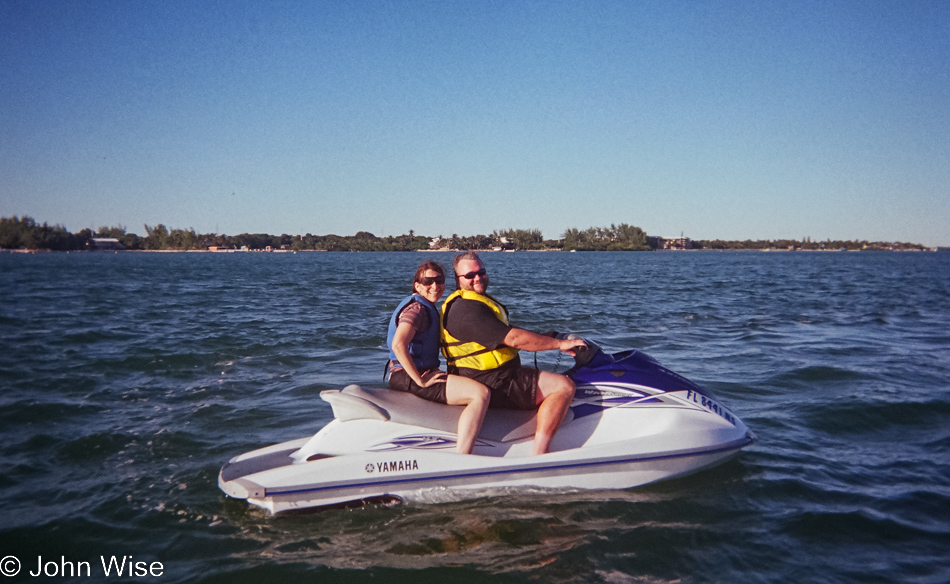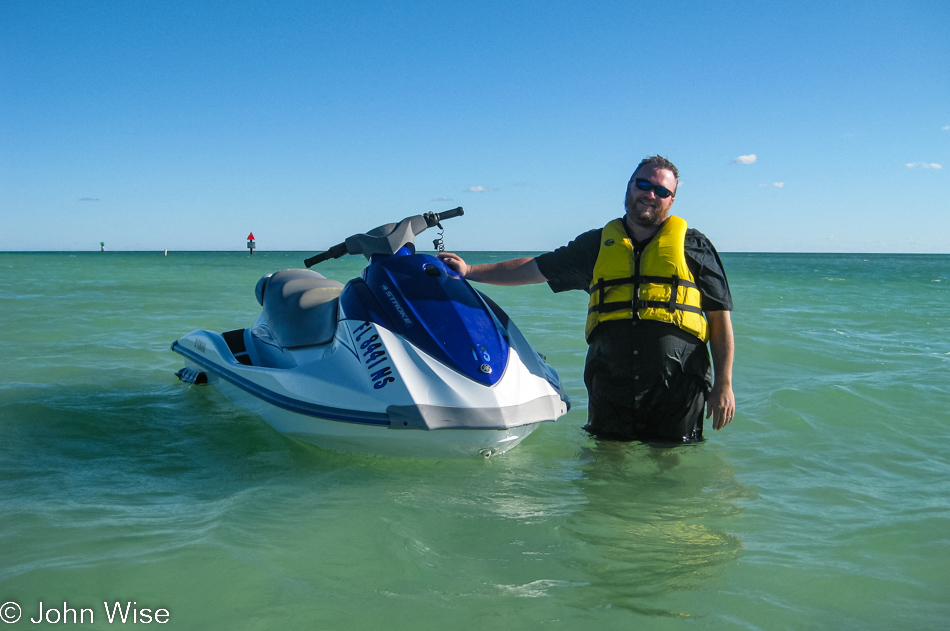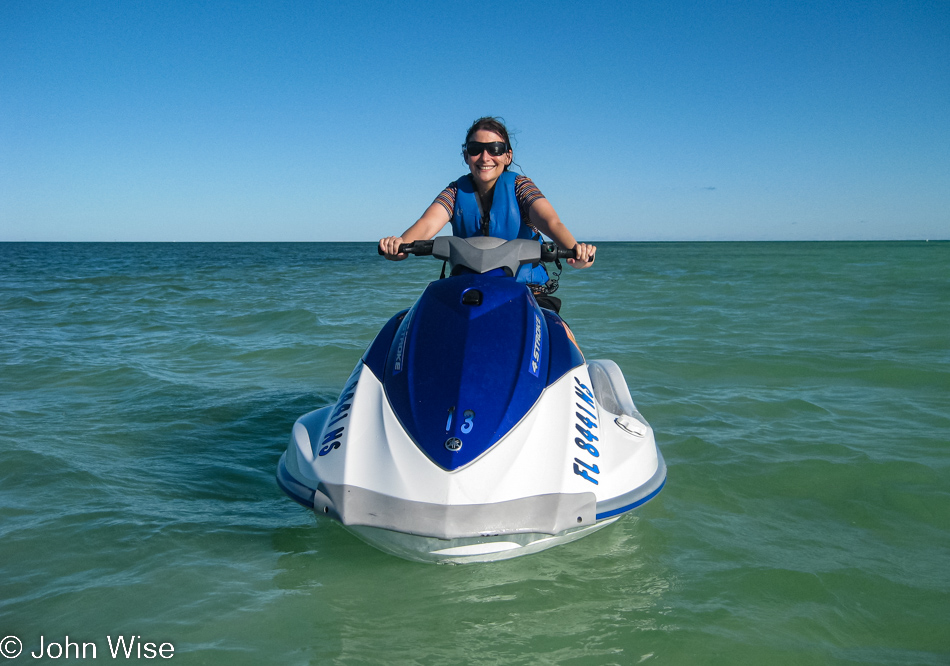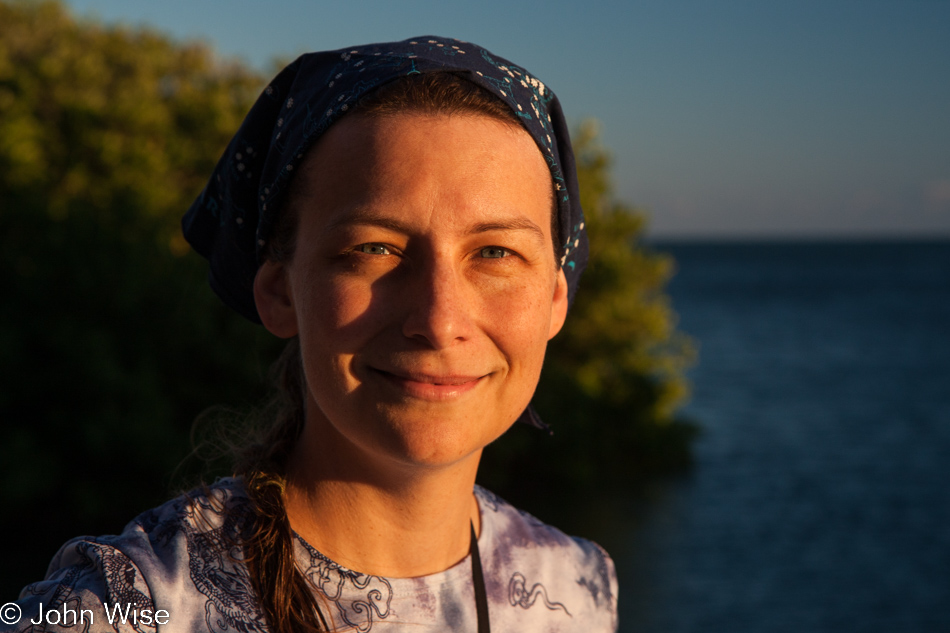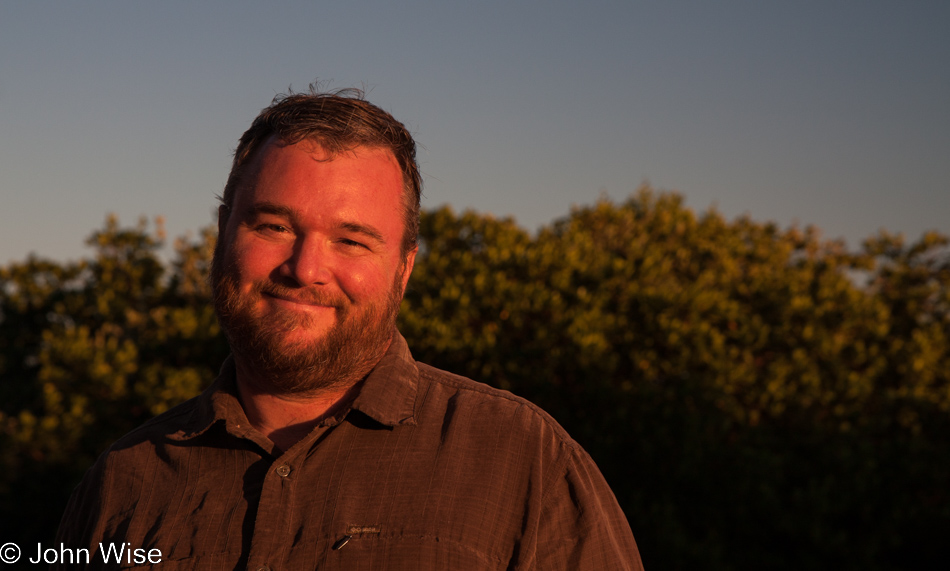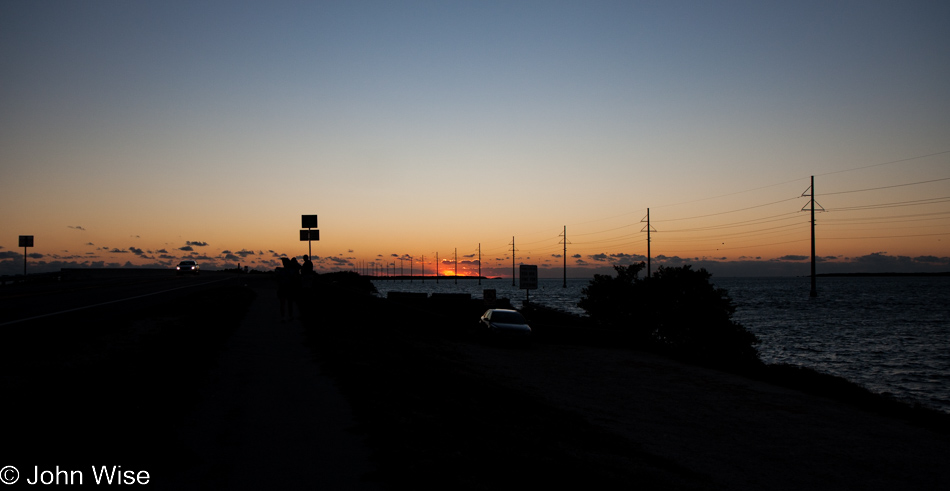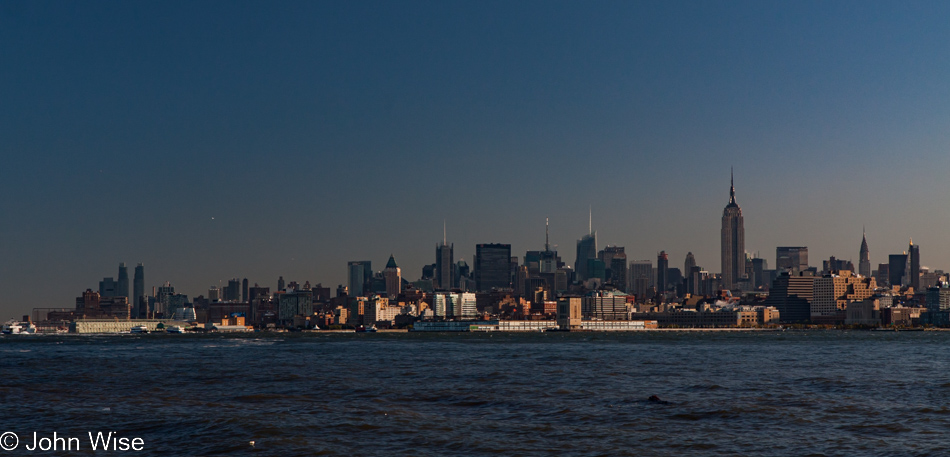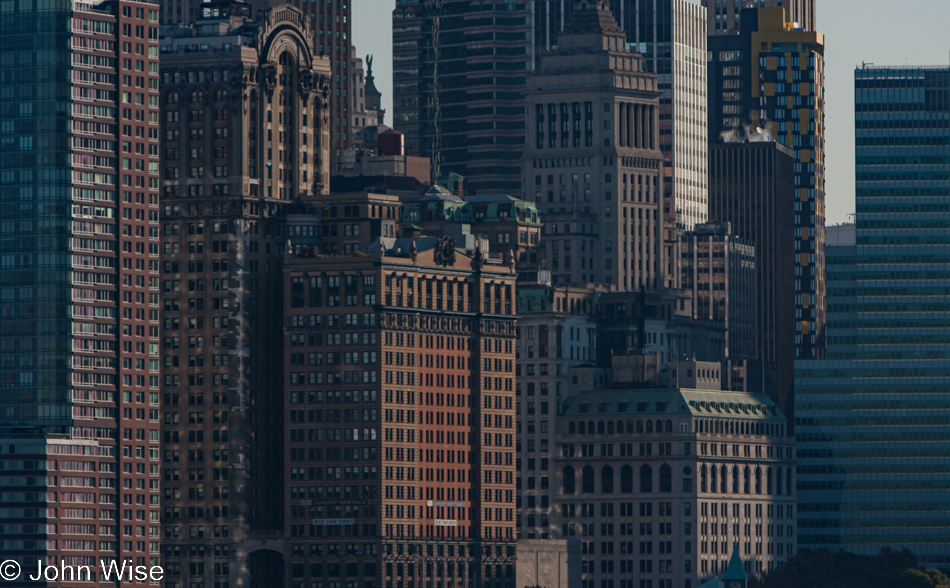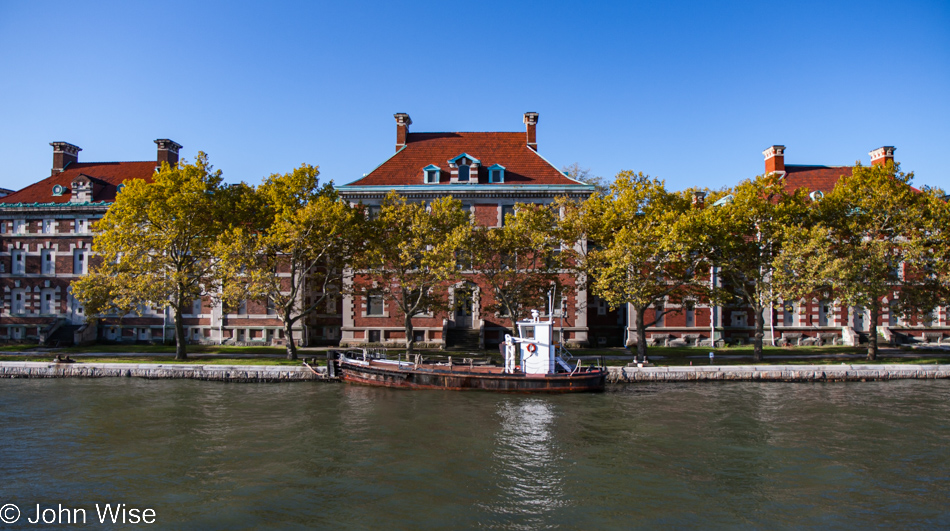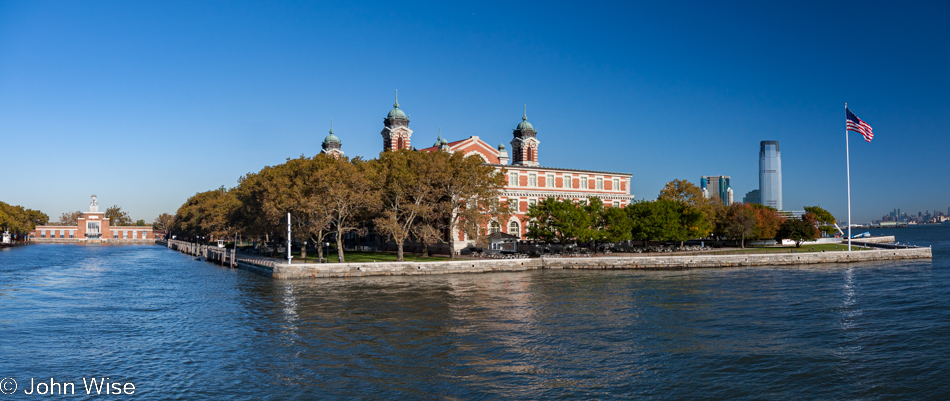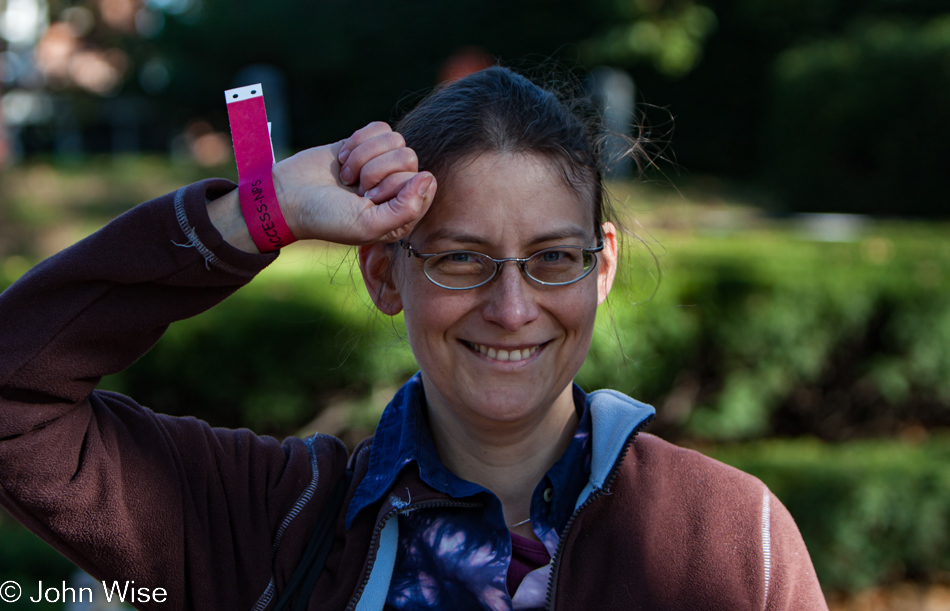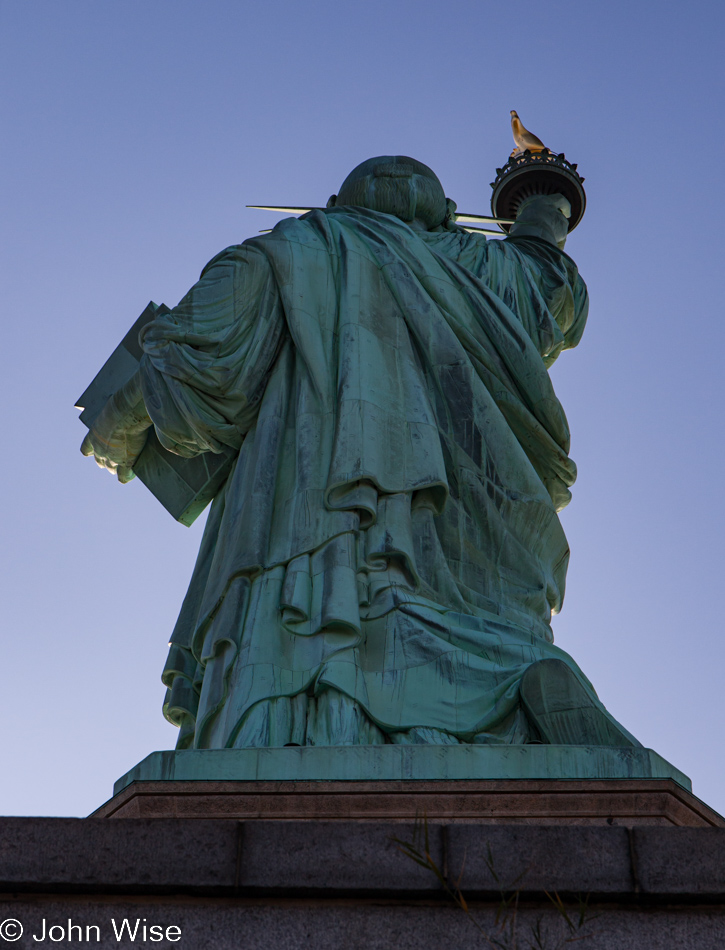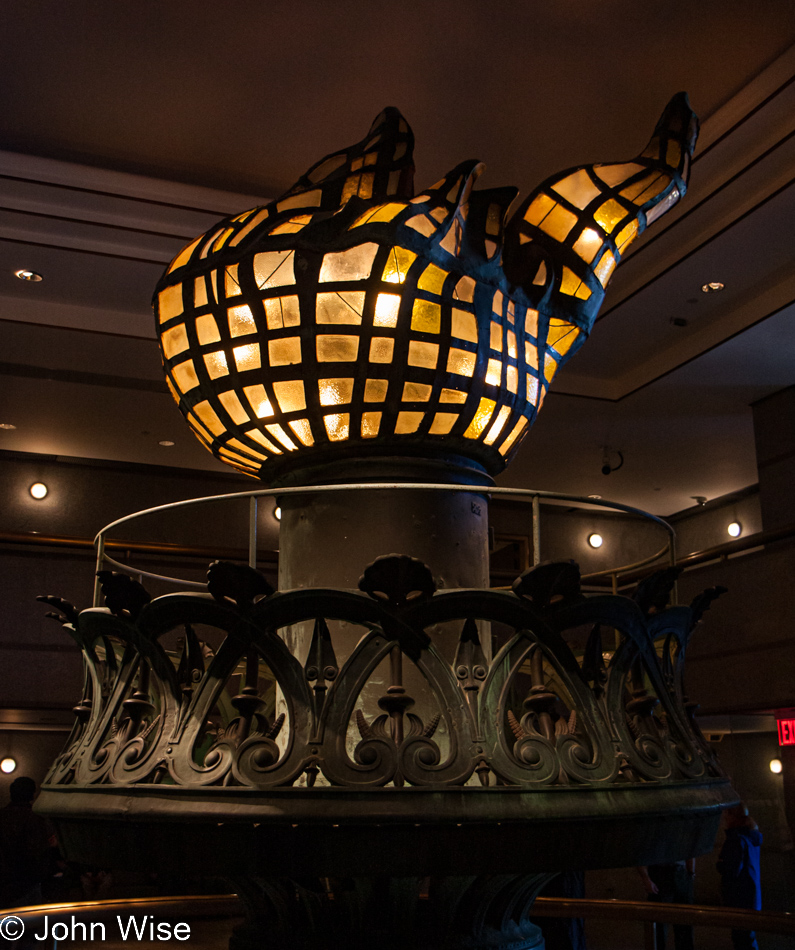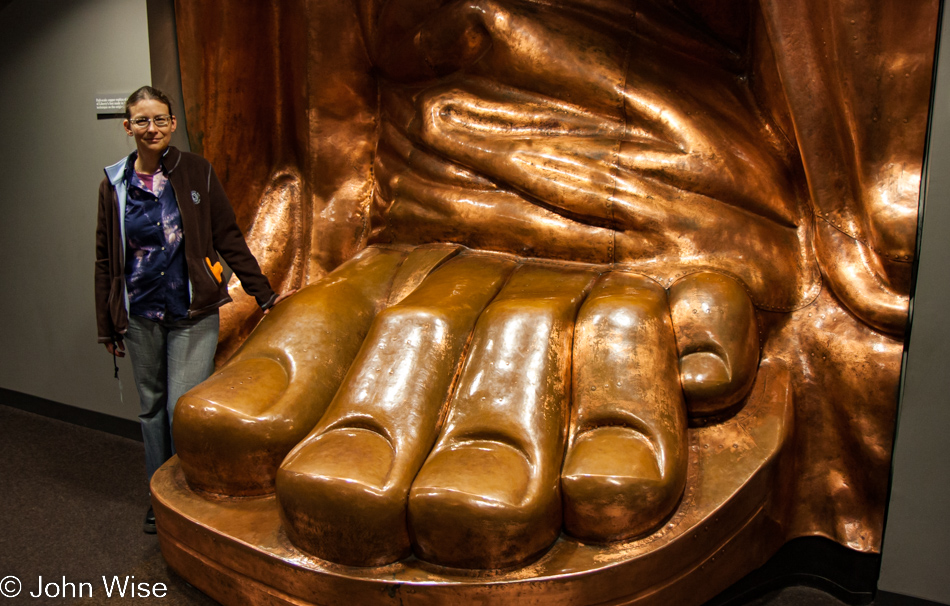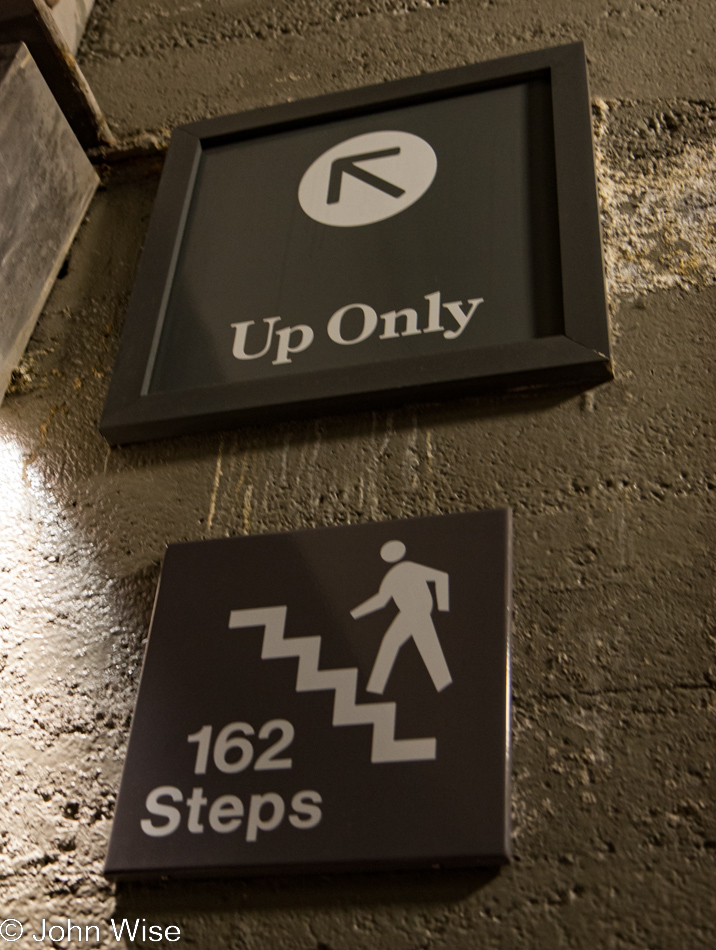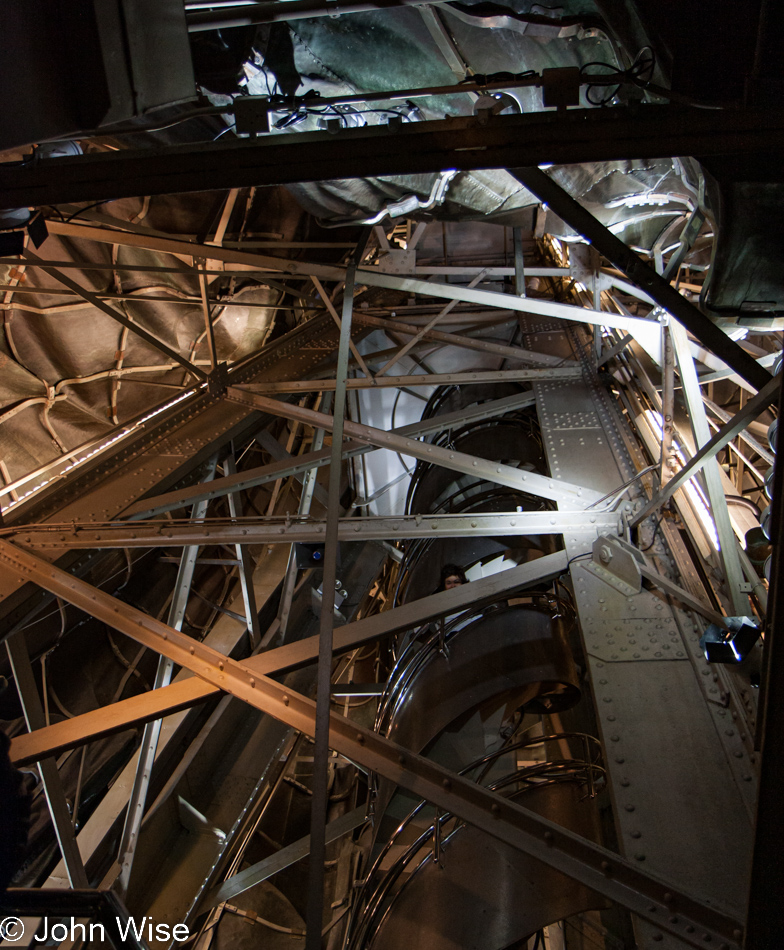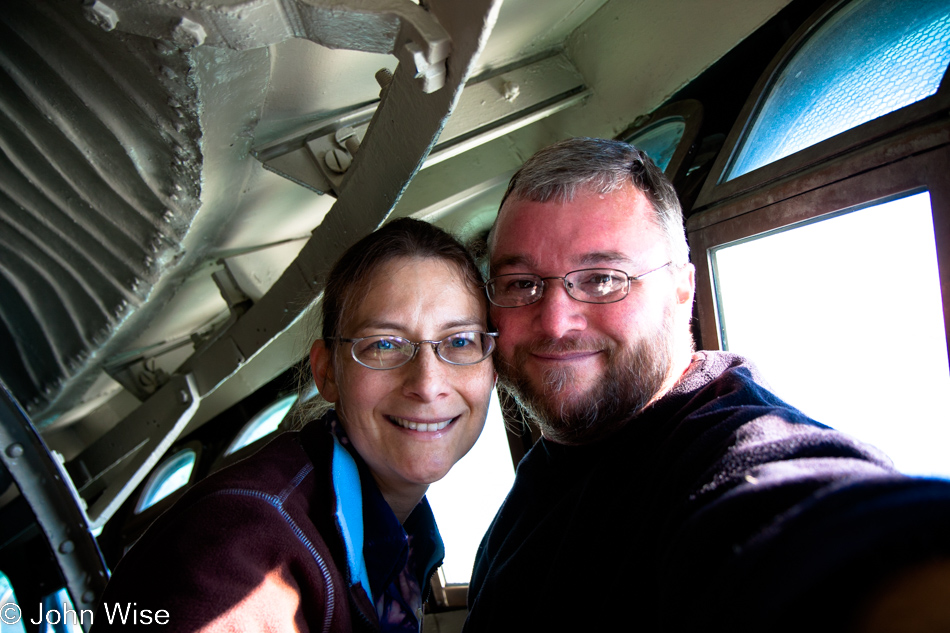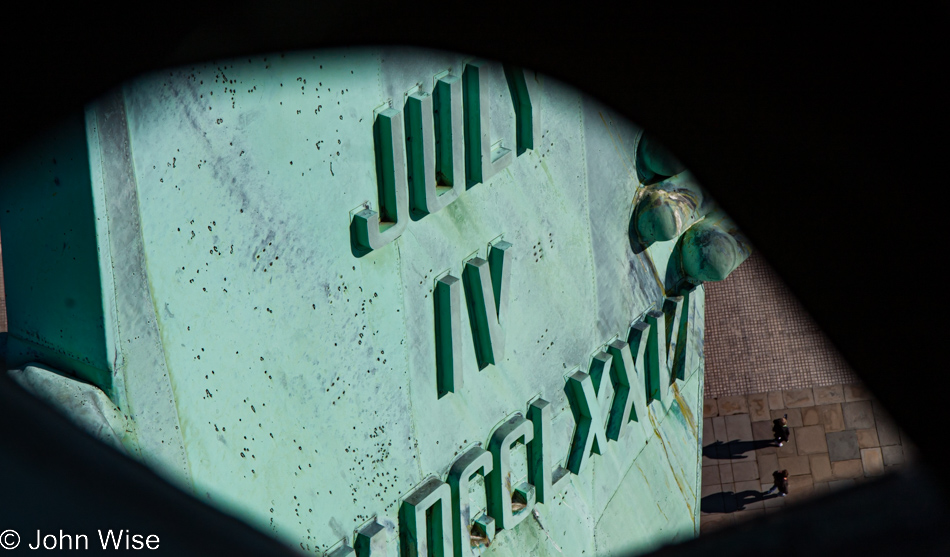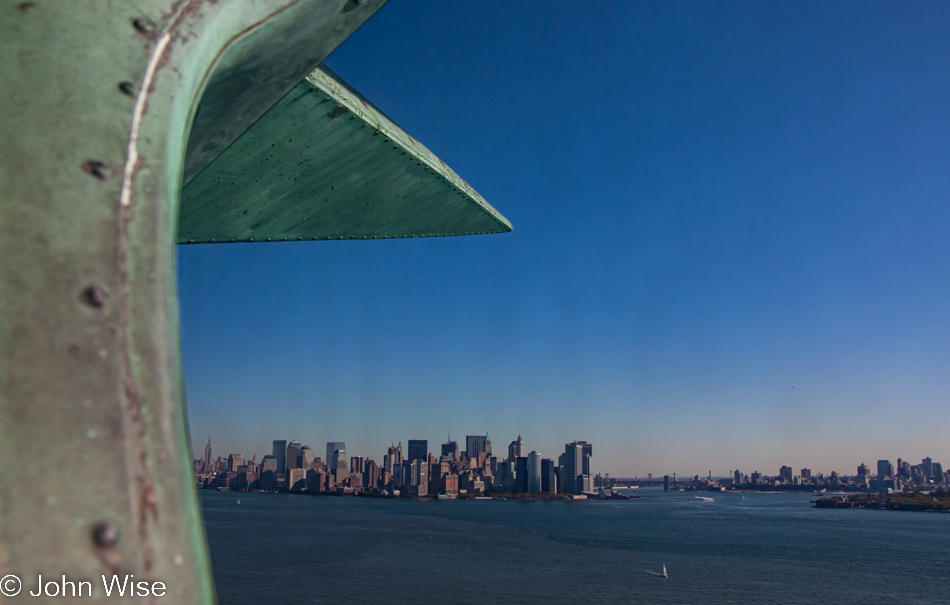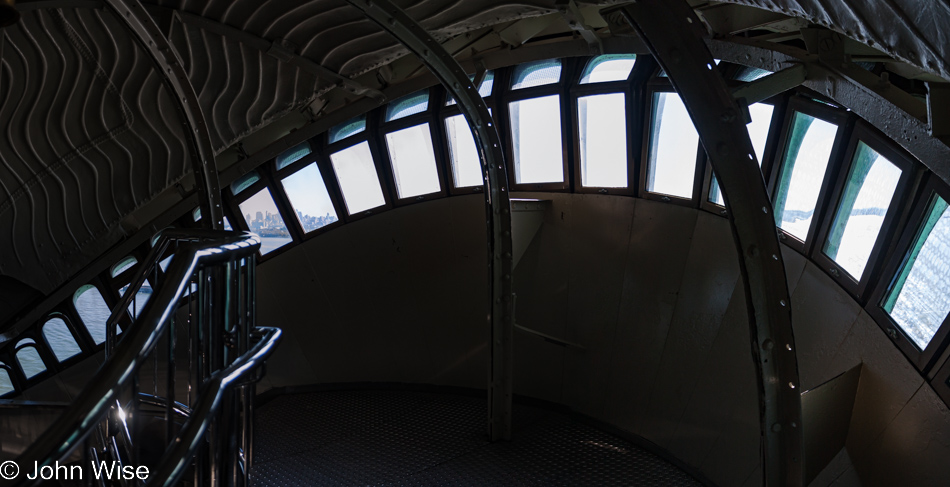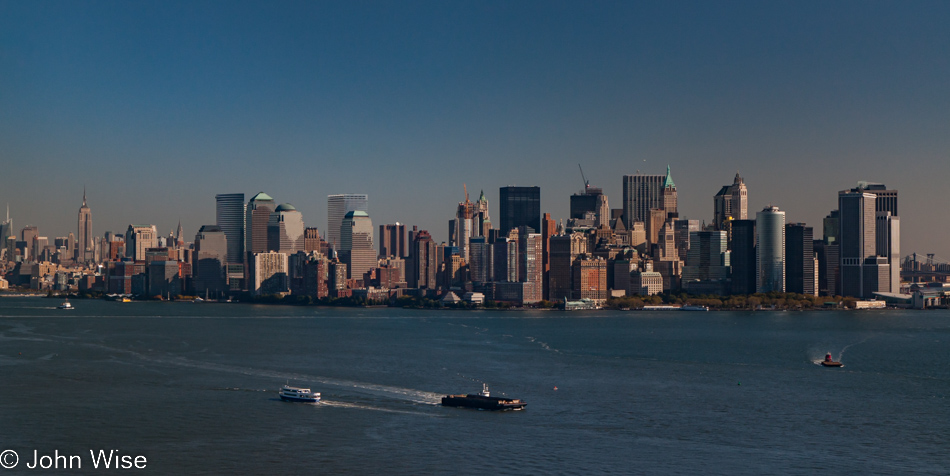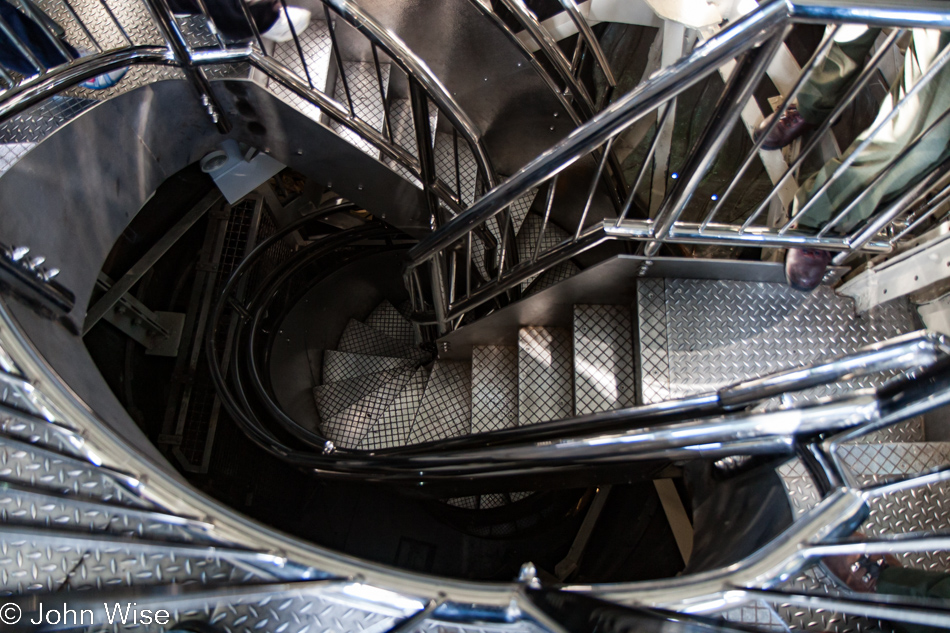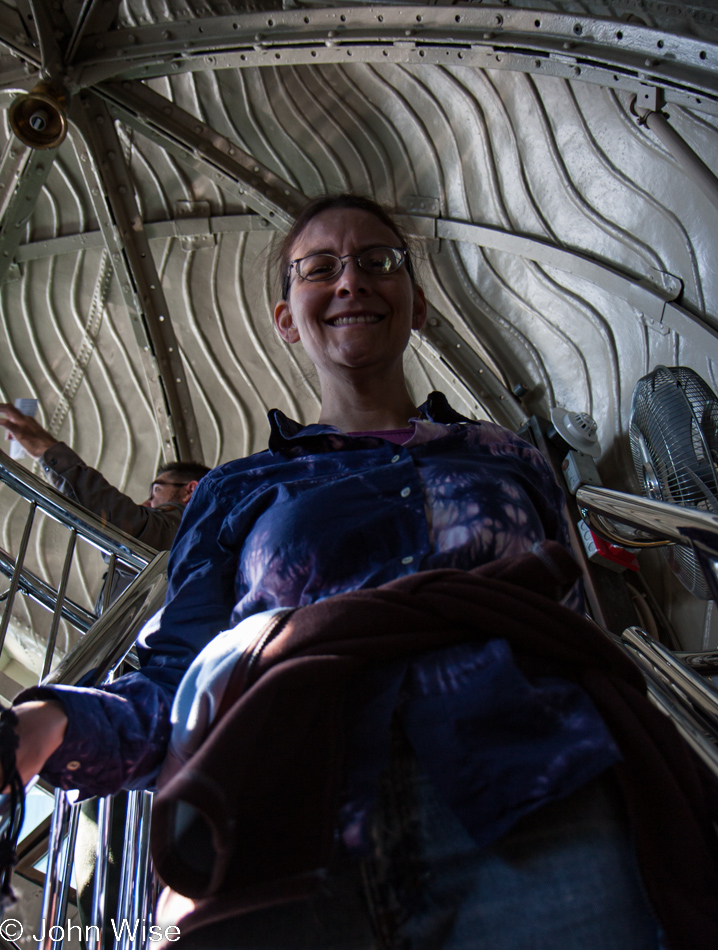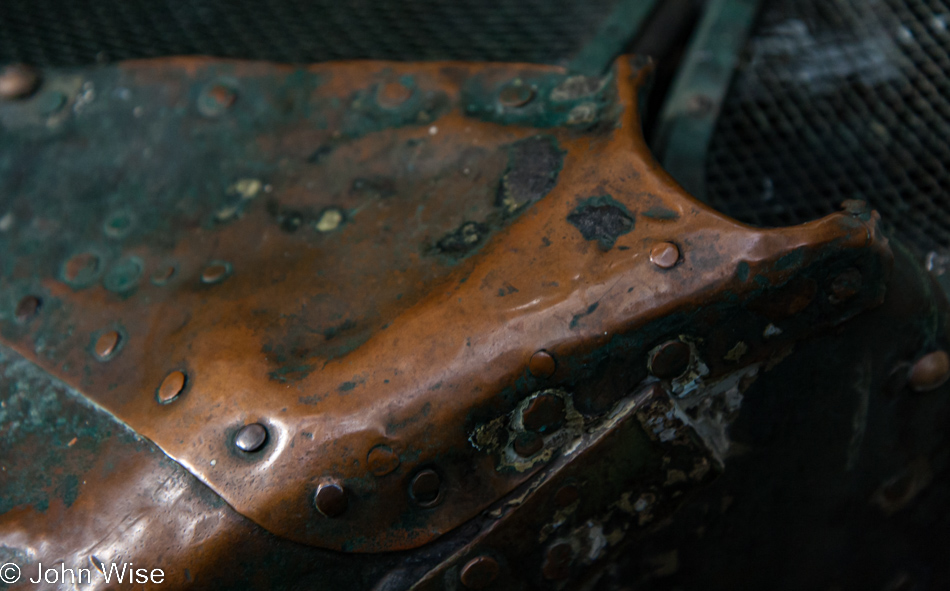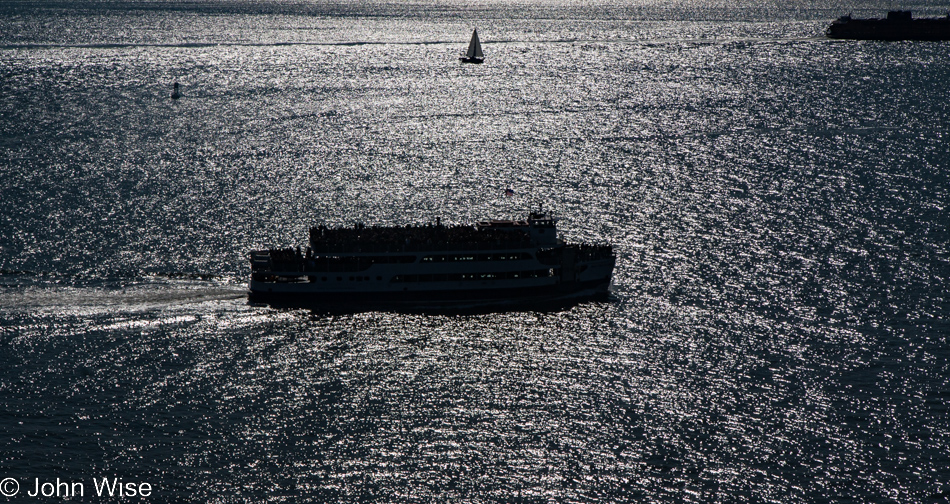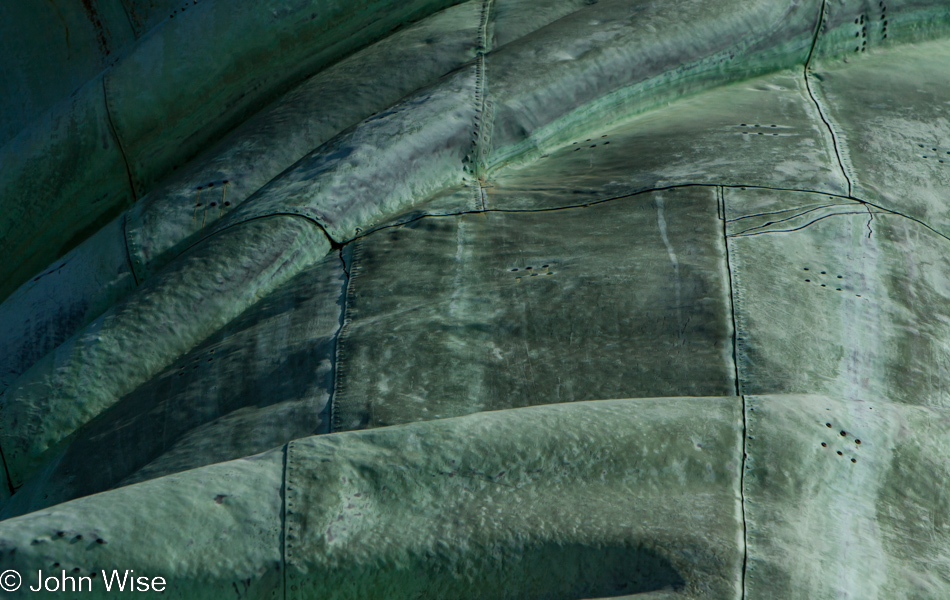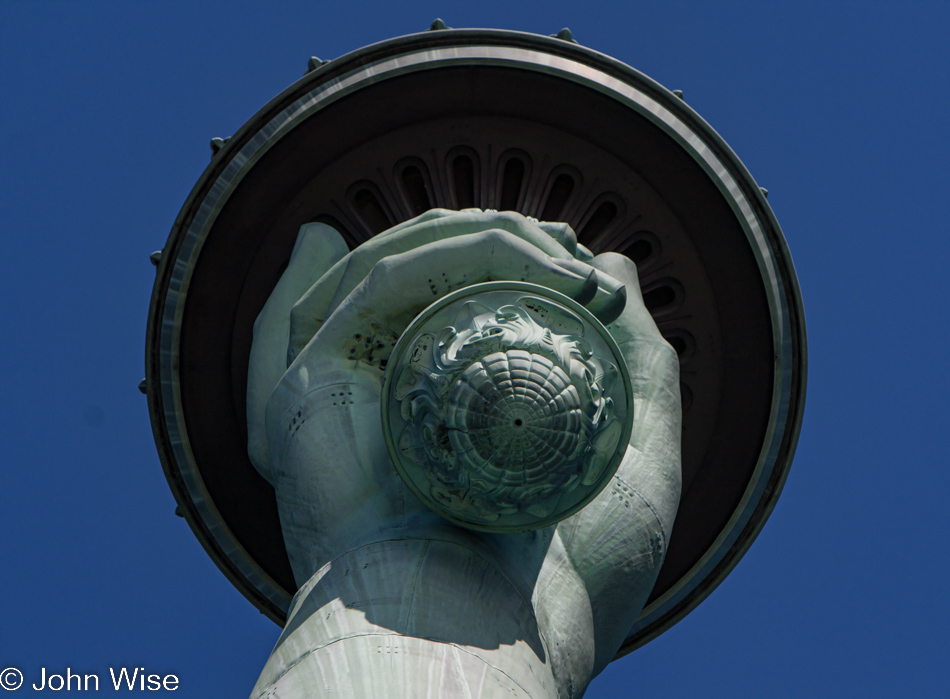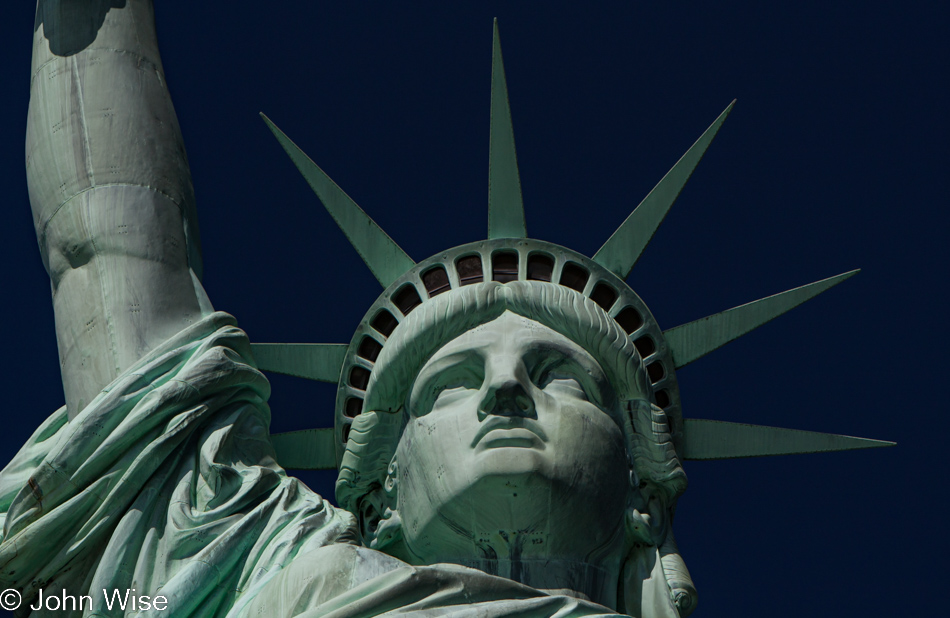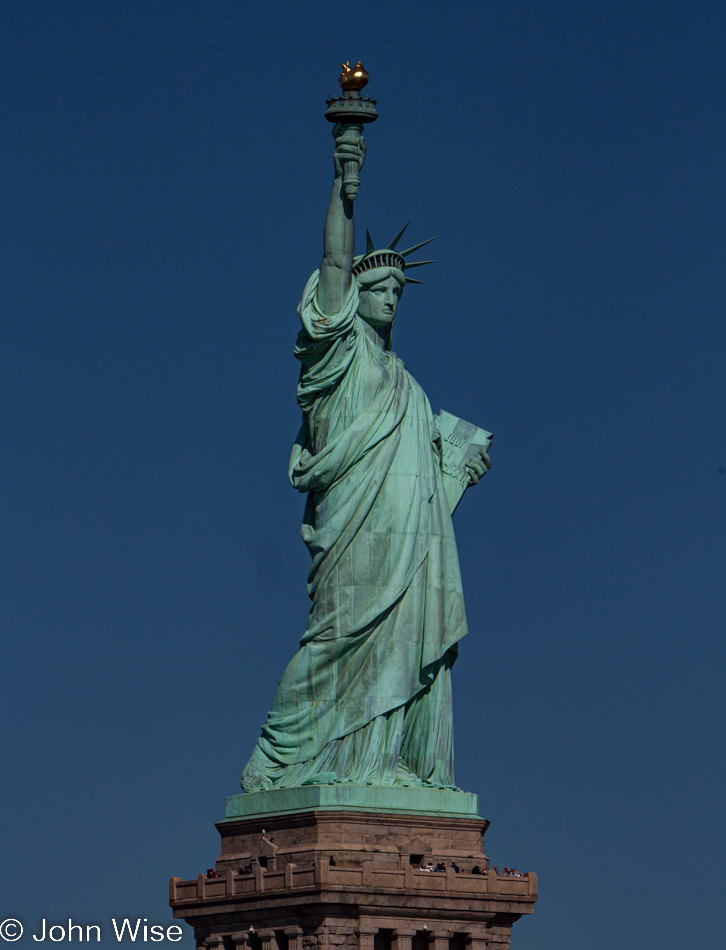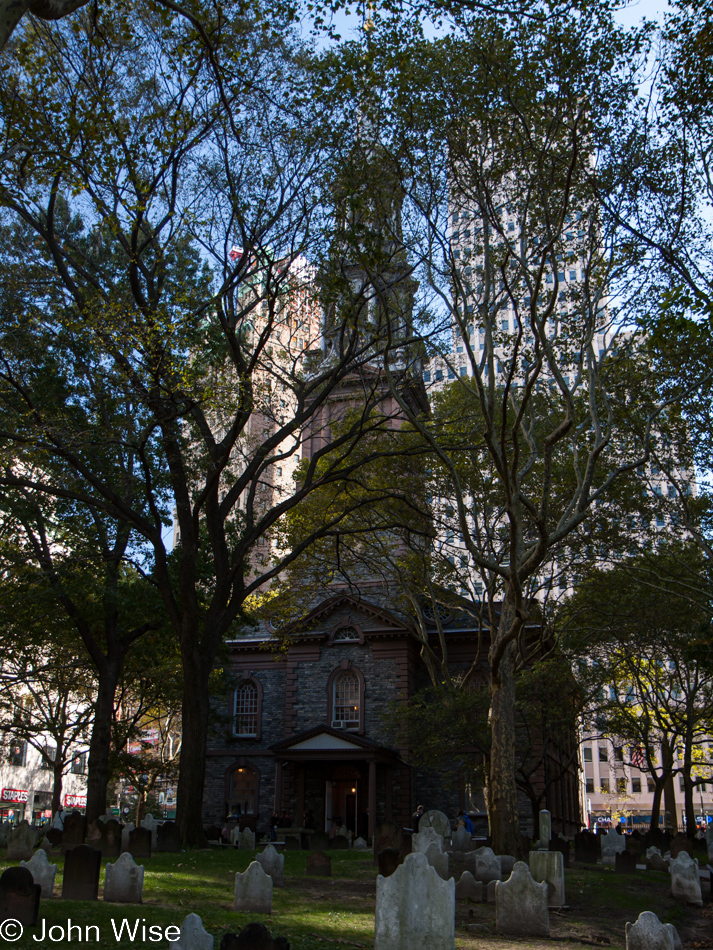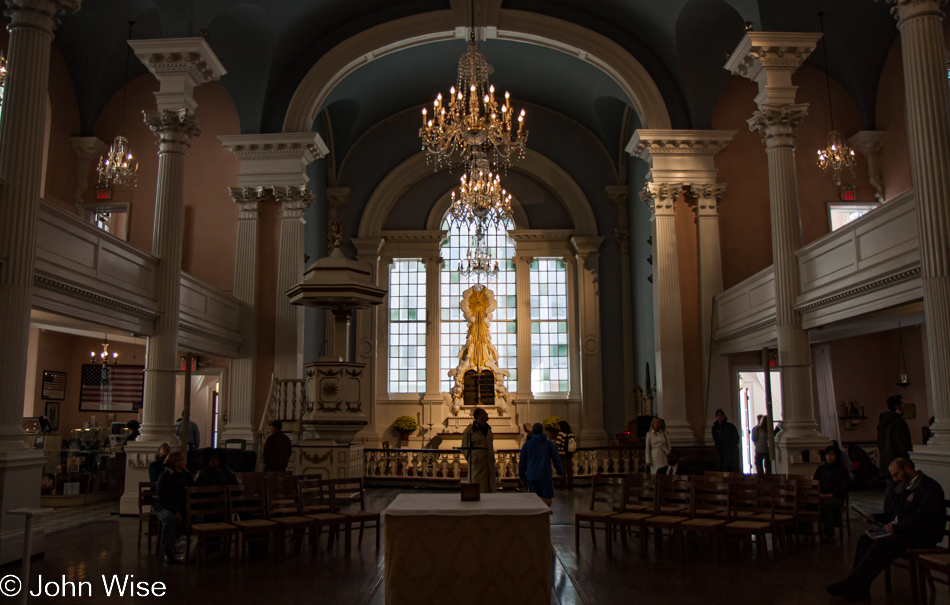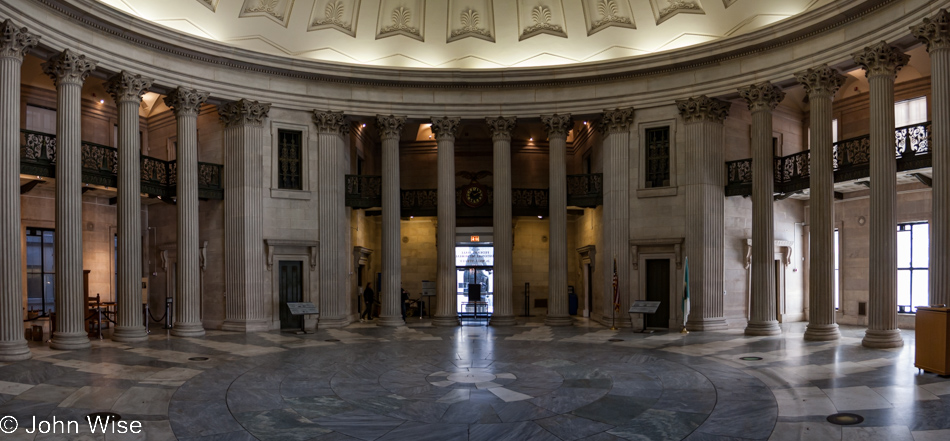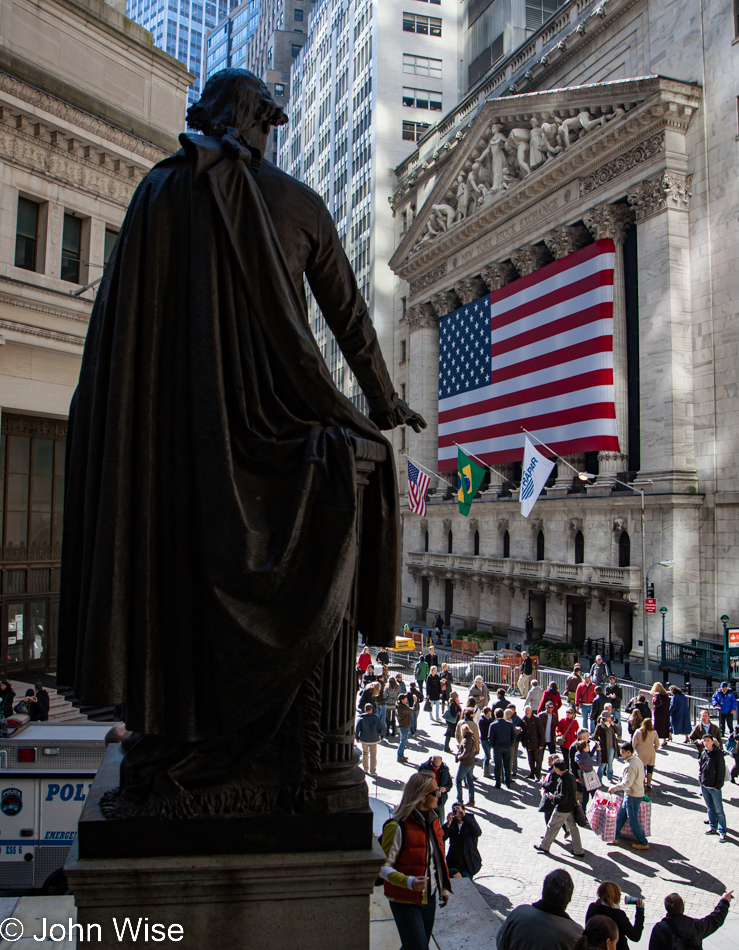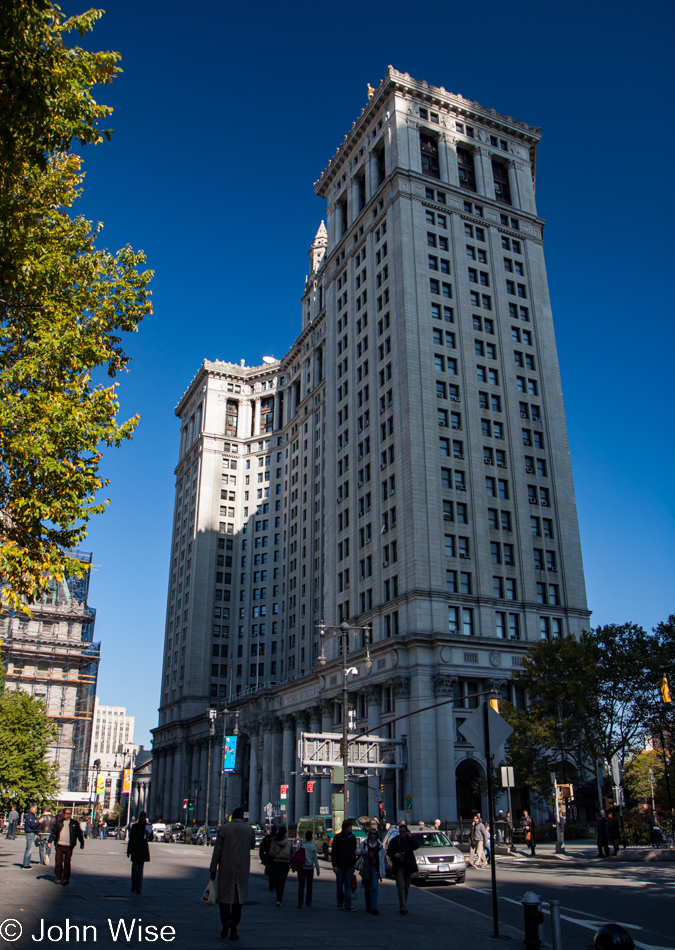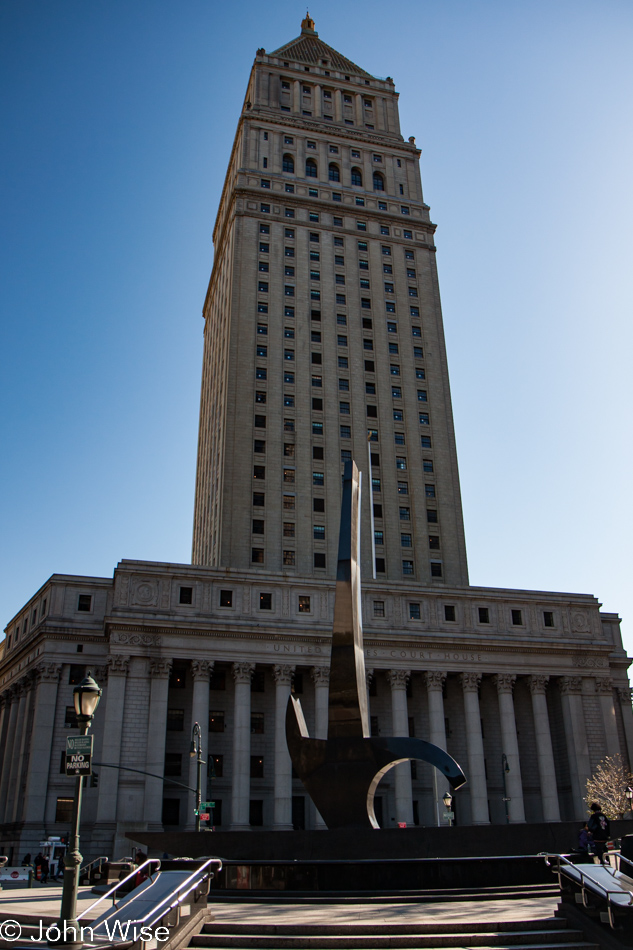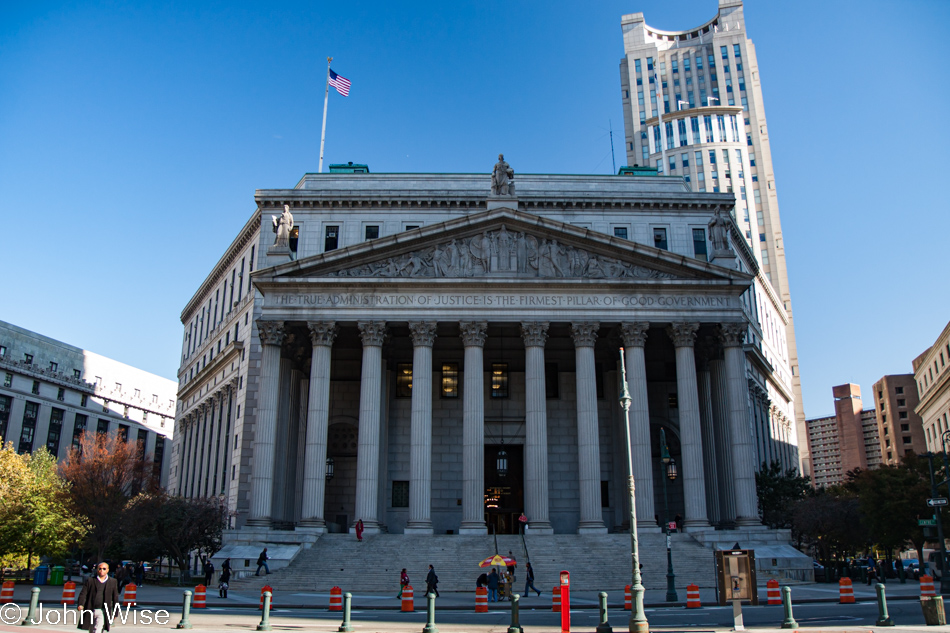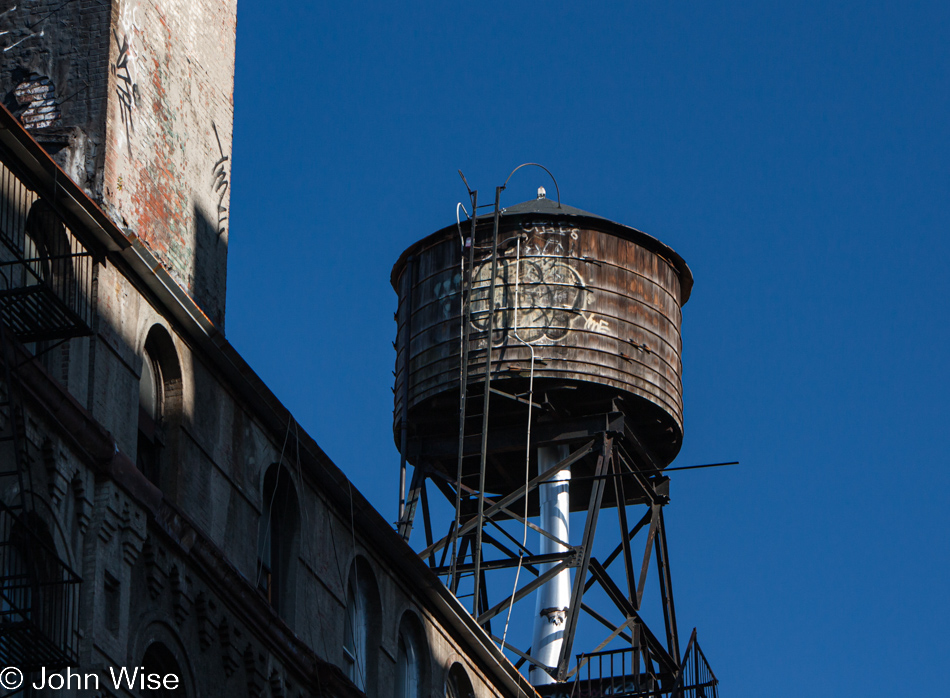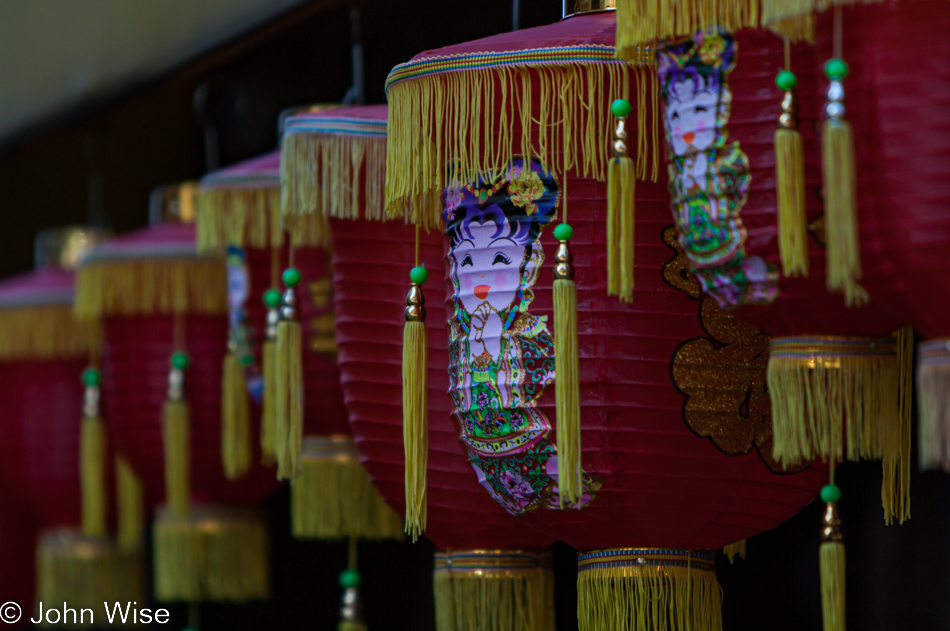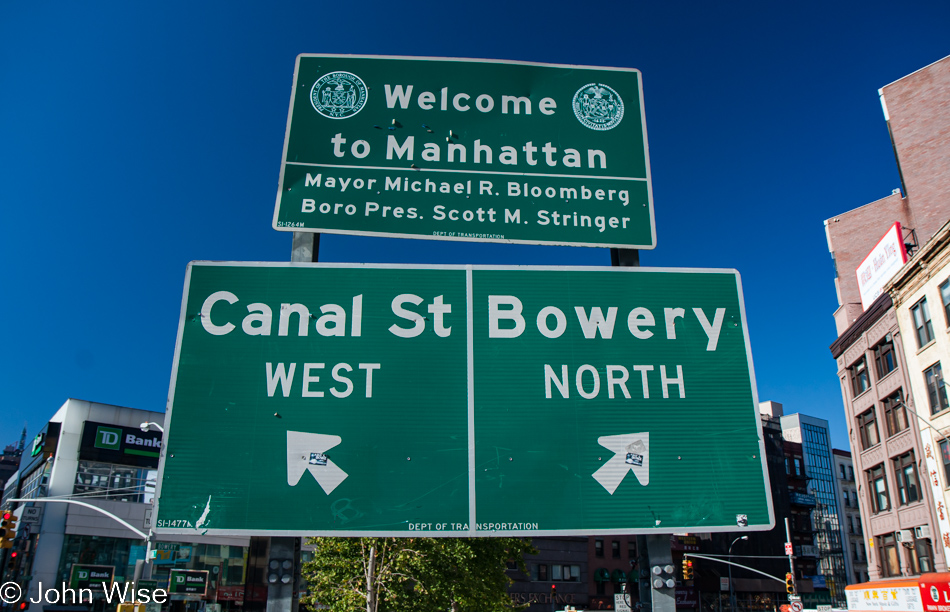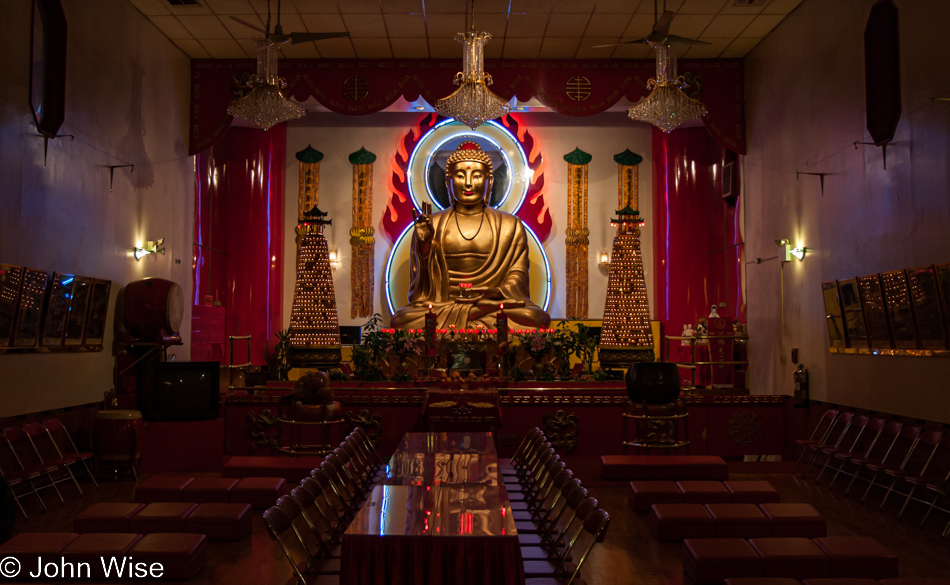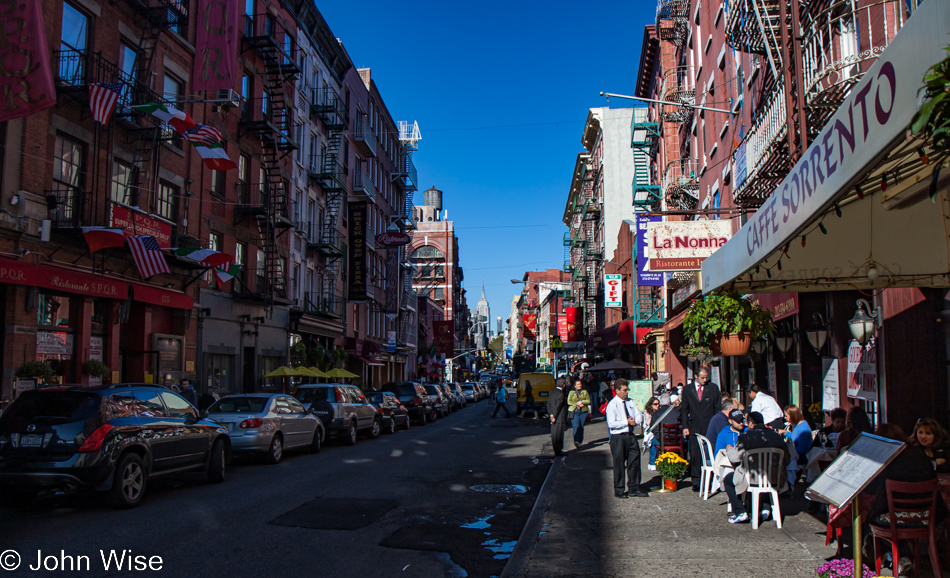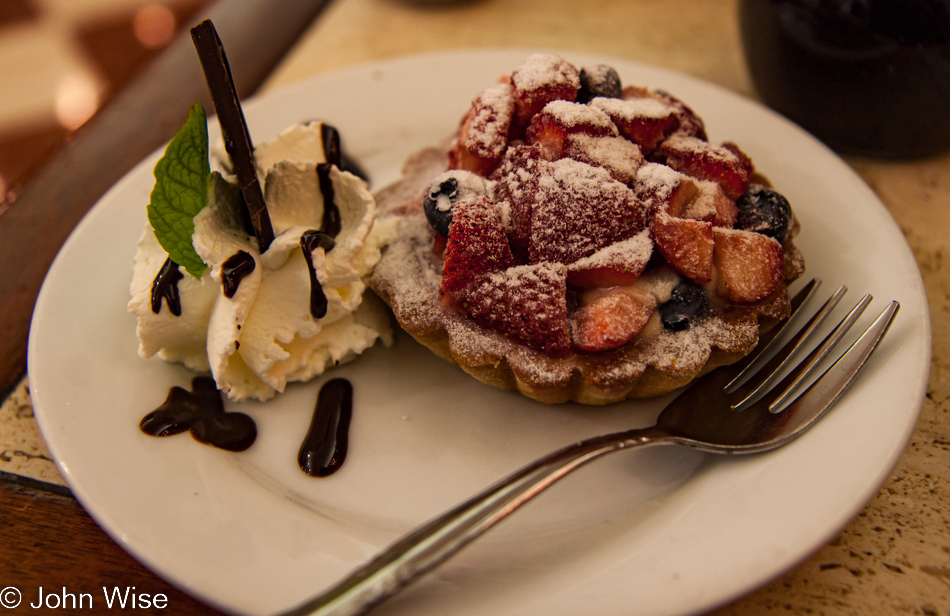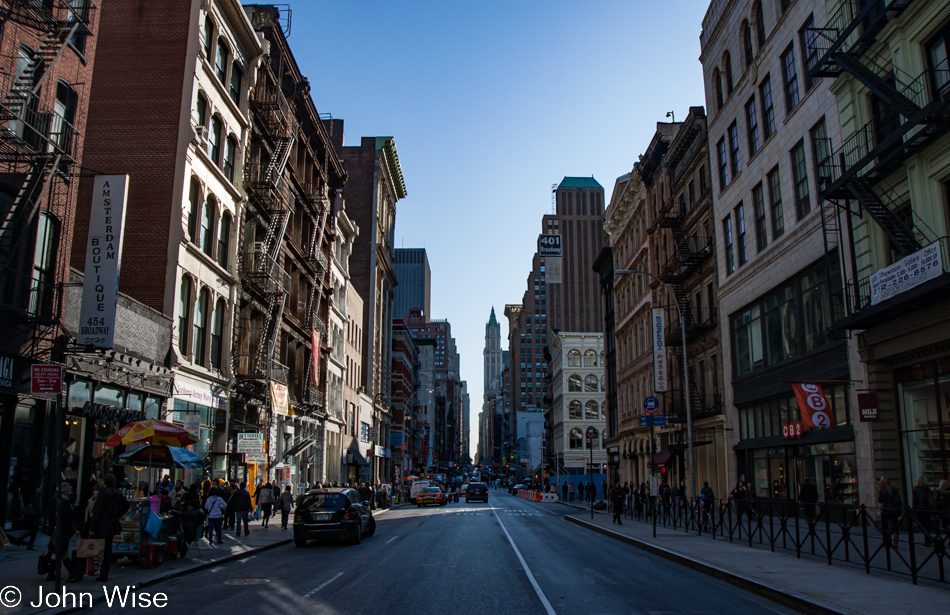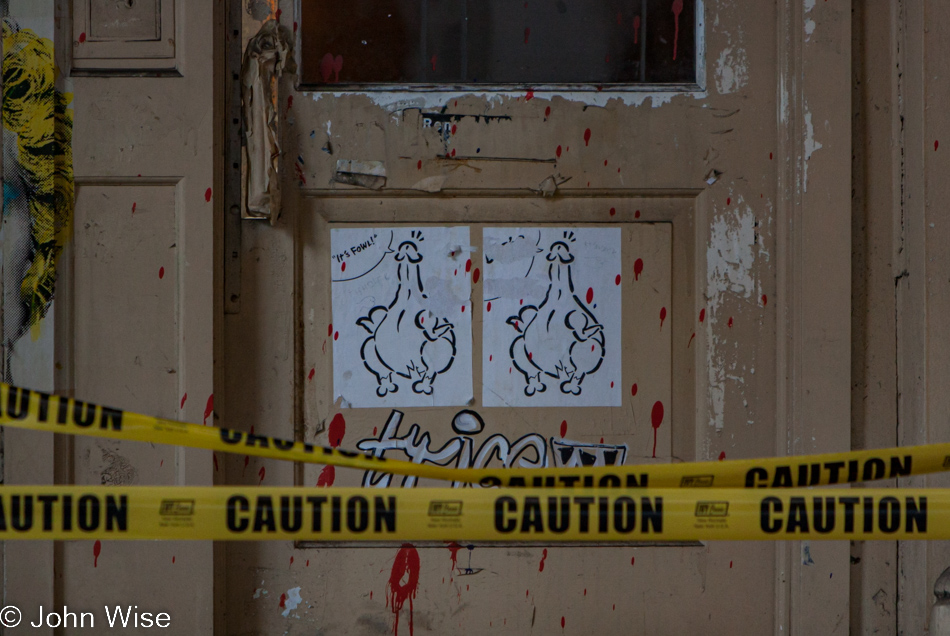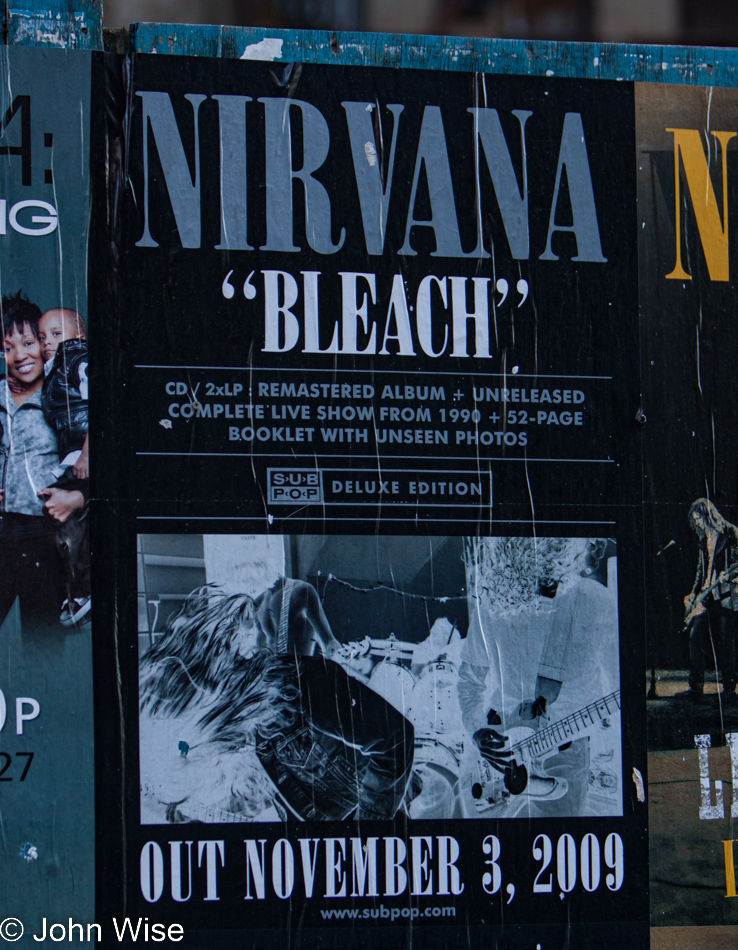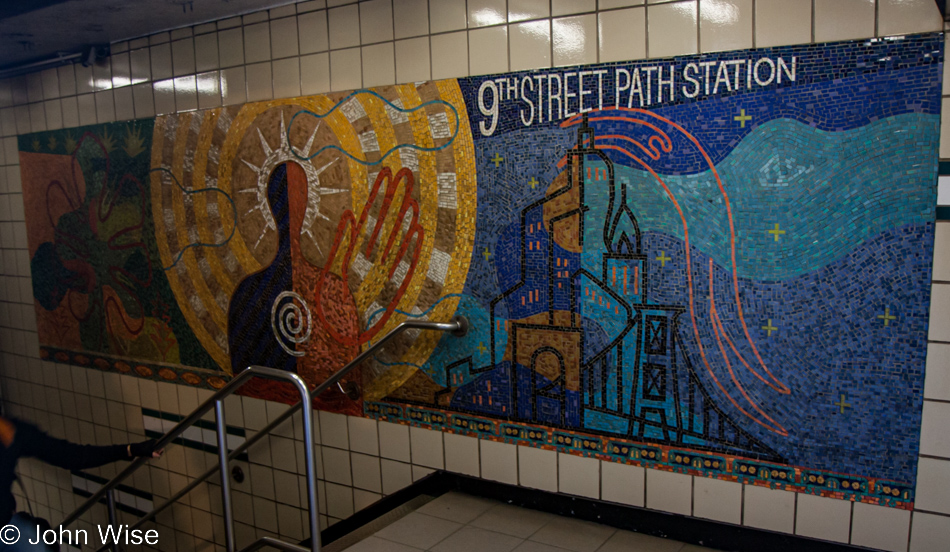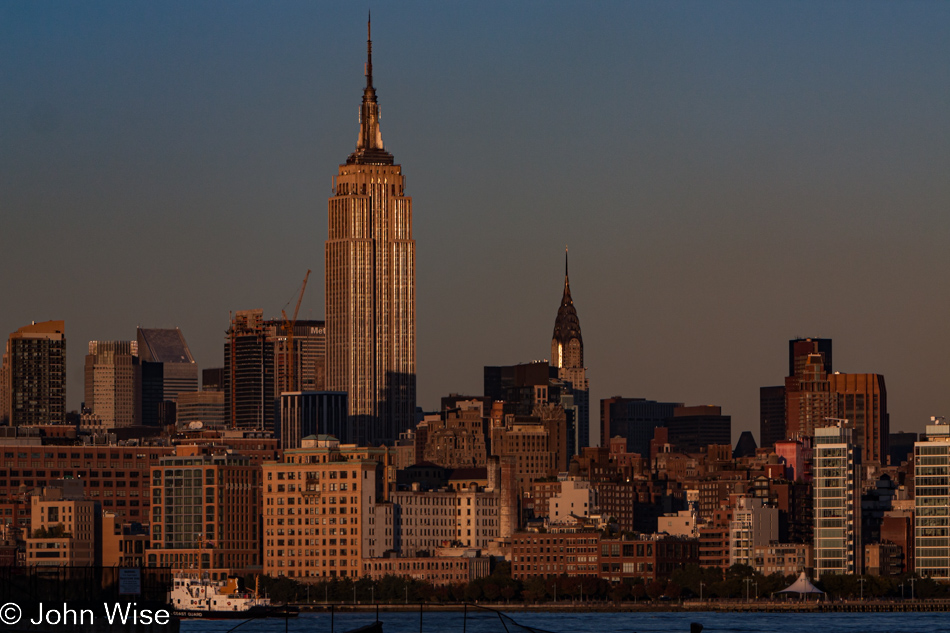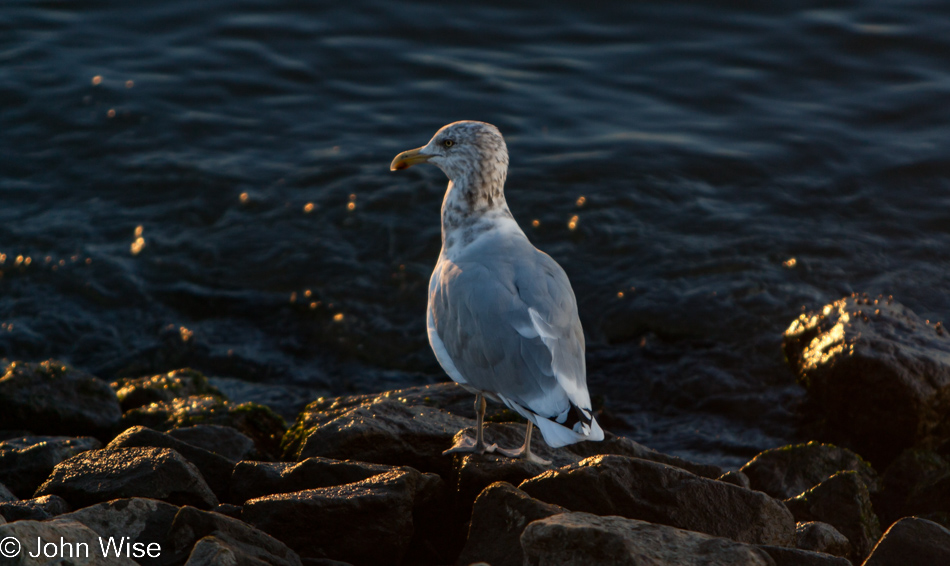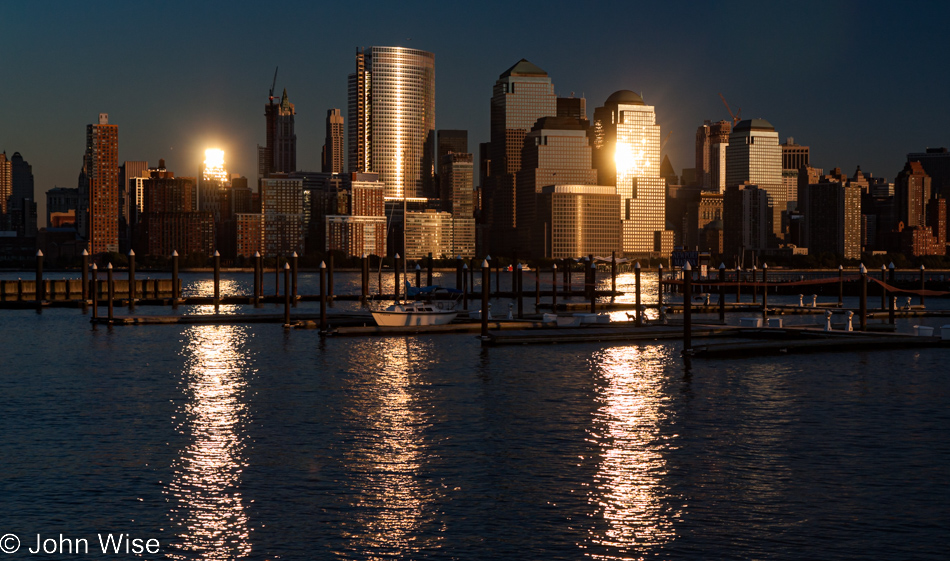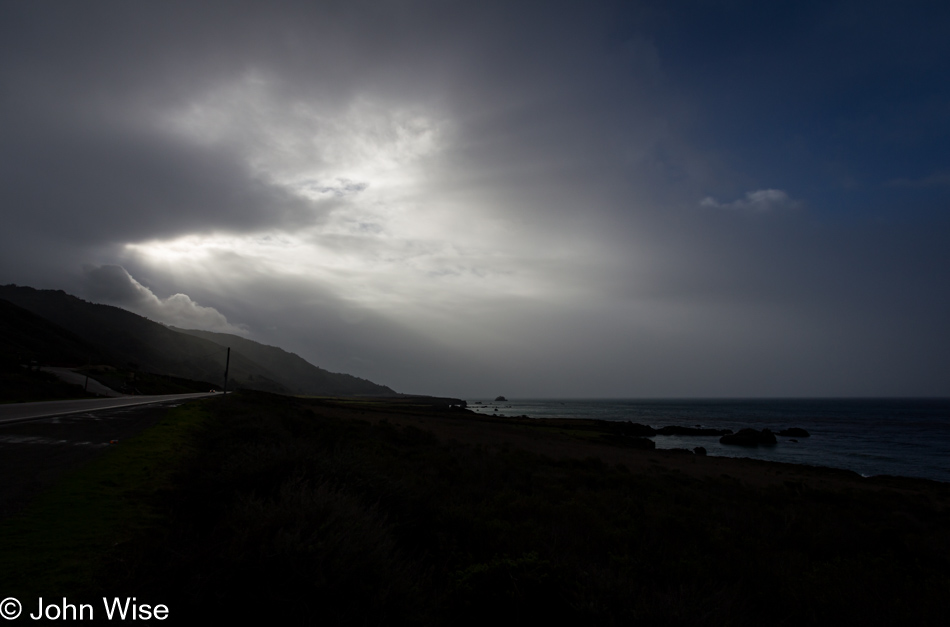
The tempest rolled in, dragging with it the bluster and fury needed to dispose of one year and usher in the next. Inside our oversized bird’s nest, we were cozy and protected from the elements, the expectation for some rain wasn’t going to deter us from our night outdoors. We were like two snuggling birds side by side, bringing in the new year. What we hadn’t anticipated was the wind, which came on well past the time we had crawled up the ladder to take shelter. Somewhere in the middle of the night and day, it started to howl, forcing us to tie down the rain fly in an attempt to stop it from flapping against the tent. While the wind would wake us with an occasional gust, it never rose to the point of dislodging us.
It would take the light of day to rattle us out of our cage and push us from our nest to perform ablutions. Finished with that, we fluttered over to the feeding grounds to hunt and peck out a morning meal. There were no worms offered to us highly evolved birds, although I will admit to a bit of a fetish for the seeds and nuts that were readily available in this spread laid out before us. Human beaks being what they are, we resorted to eating Treebone’s locally-made peanut granola with instruments and bowls. Grazing ain’t nothing if not taken seriously, so once done with the first course, it was on to the make-’em-yer-self-waffles. Throw on some banana and syrup, and we were in forager heaven. We lingered for a while near the fire with a cup of coffee and enjoyed watching the day come alive, with the rest of the flock joining us here on the hill over the ocean in this forest of Treebones.
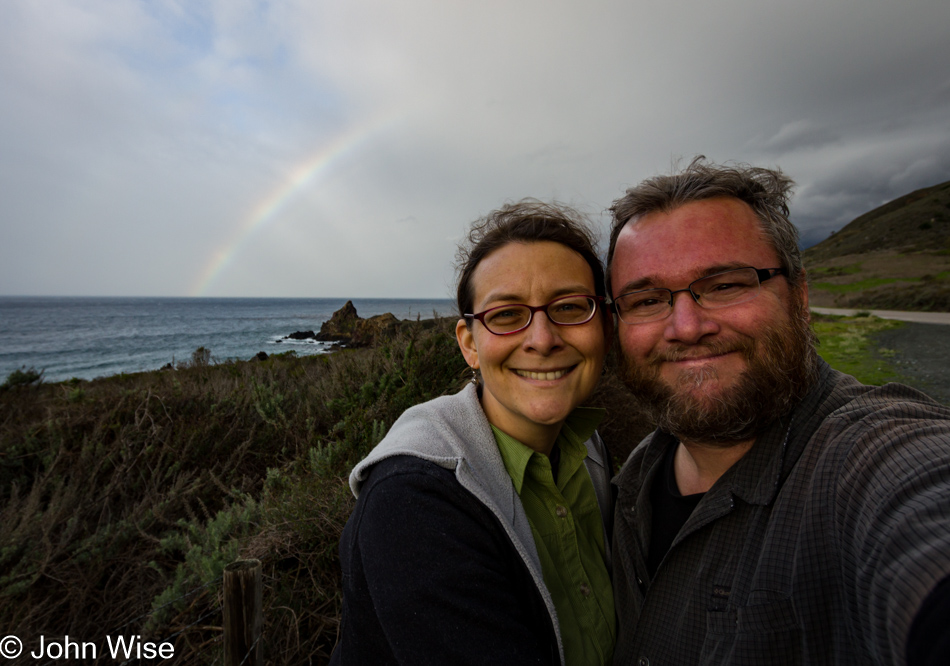
When we do finally take off, we fly into rainbows. If I were to write a blog entry about the number of rainbows Caroline and I have seen on our various travels, I am certain that hundreds of rainbow photos would accompany the narrative.
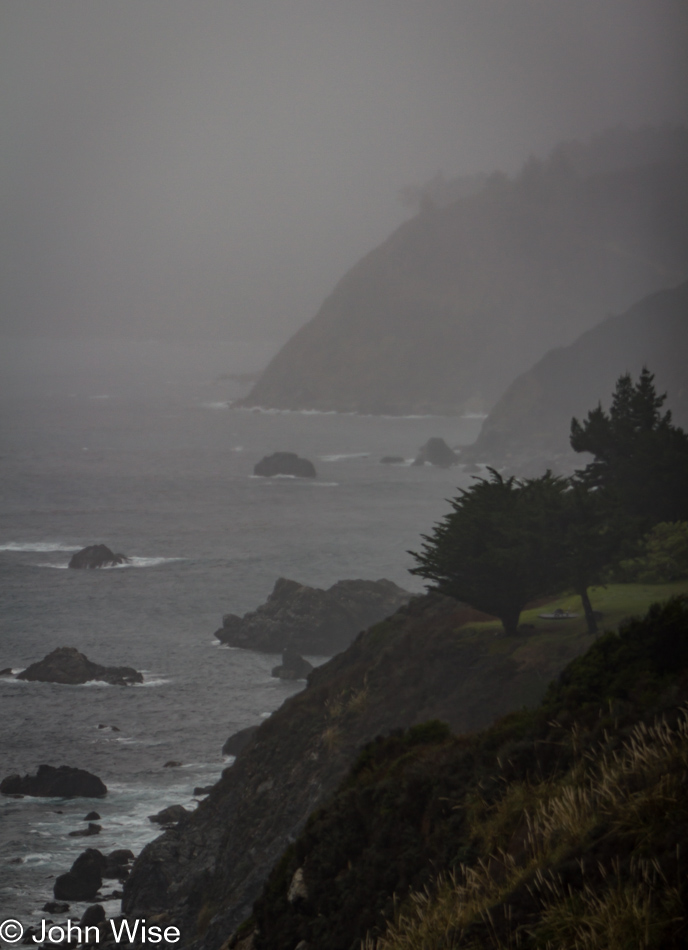
Out of the band of color, back into the gray low cloud mist, hugging the coast and shortening the more typical long-distance views that are a major attraction of visiting the wild coast. Even this light, this dark, and for some dismal weather is beautiful to Caroline and me; it adds mystery to the environment and makes having the heater on in the car feel extra cozy.
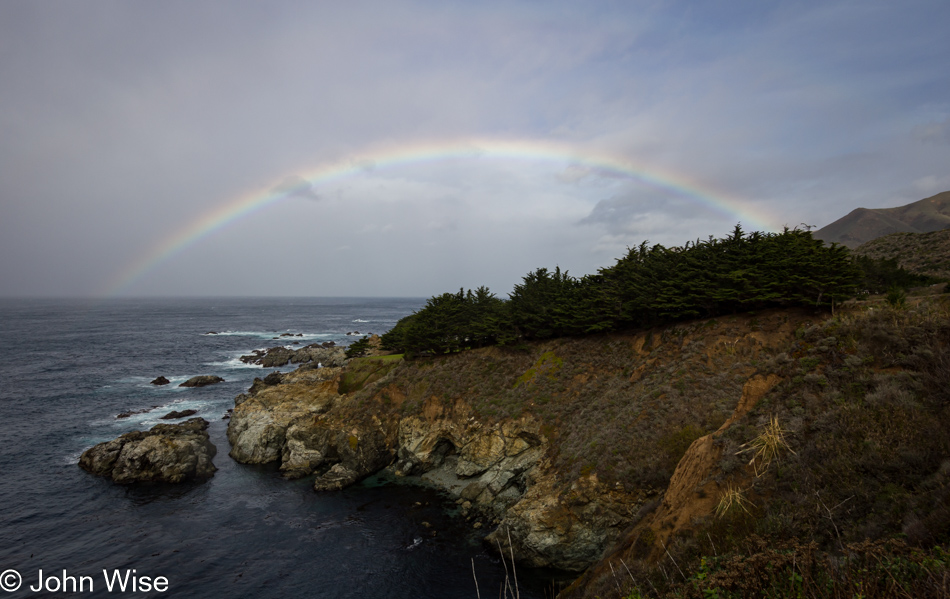
Not satisfied with a singular rainbow, we are so lucky to enjoy rainbows! An hour and a half up the road and not very far from the first and easily assumable only rainbow we’d likely see this day, the surprise of surprise happens, and we see another rainbow. Peaks of blue sky escaped the hold of the gray shroud of weather, wishing to be bad. Onward and upward, we fly against the instinct that commands us to go south for the winter. We are determined to follow rainbows and continue on this northerly trek. With this commitment, we flew hard, covering almost 60 miles in little more than 2 hours.
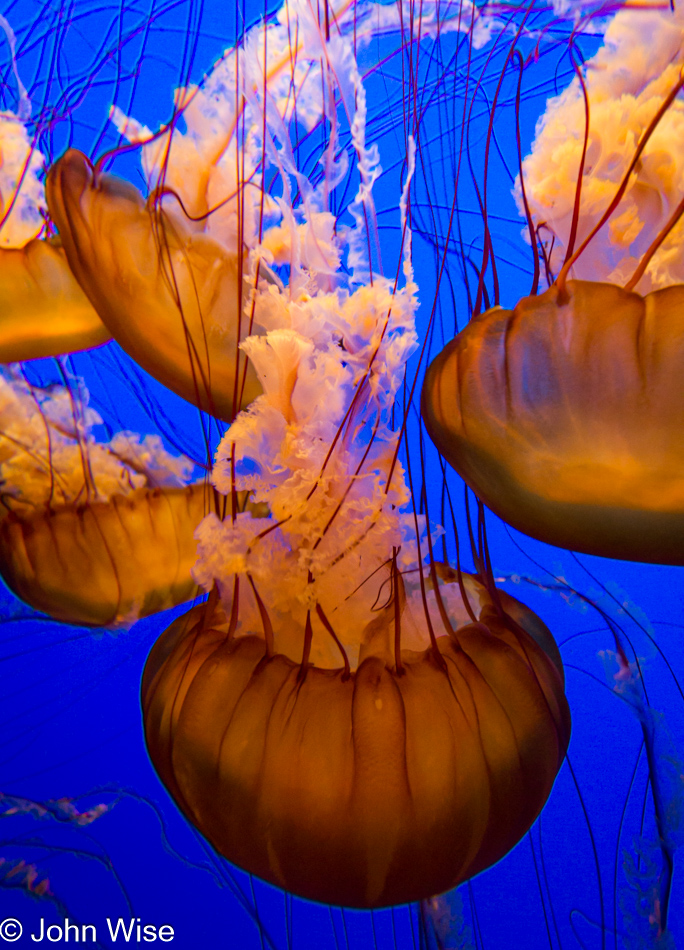
The prospect of a rainy windy day at the seaside made the warm shelter of an old favorite hangout shine sunny enthusiasm upon us for our return to the Monterey Bay Aquarium. We couldn’t swim with the fishies, but we could enjoy watching them doing their swimmy thing. For hours, we walked along and took great pauses to revisit the jellyfish, silver dollars, the octopus, the giant kelp forest, a sea cucumber that needed petting, and even the good old chiton. More fish than you can shake an eel at are here at the aquarium.
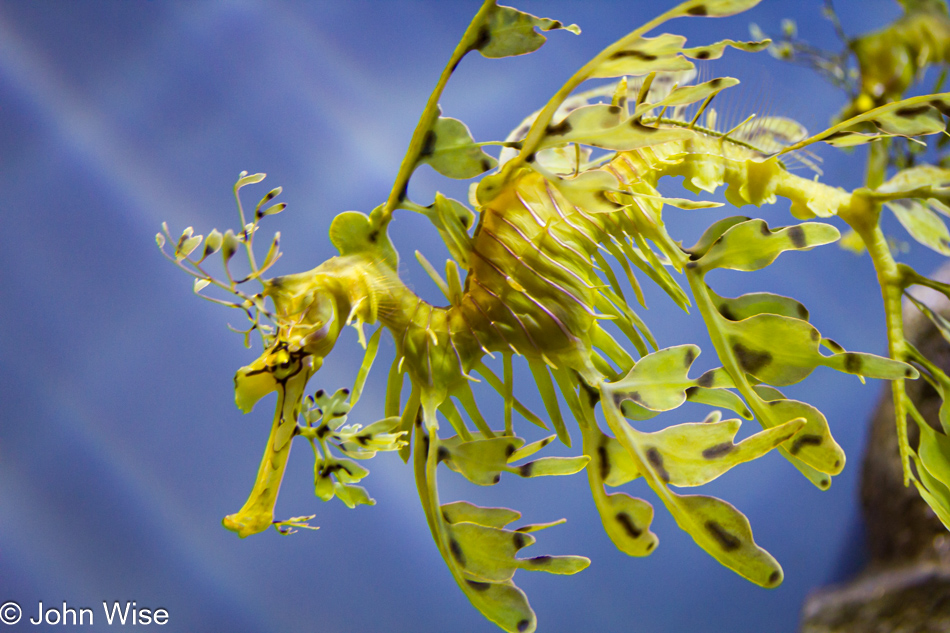
So are screaming little shits. This could have been a perfect day, but it seems that parents forgot that parenting in some small way implies a minimum of guidance, and a sense of decorum should be instilled in their charges. But these parents were having none of that, or maybe New Year’s Day is scream-your-head-off-day, and no one told us. Enough of these cackling chicks and hens; time to face facts and fly south.
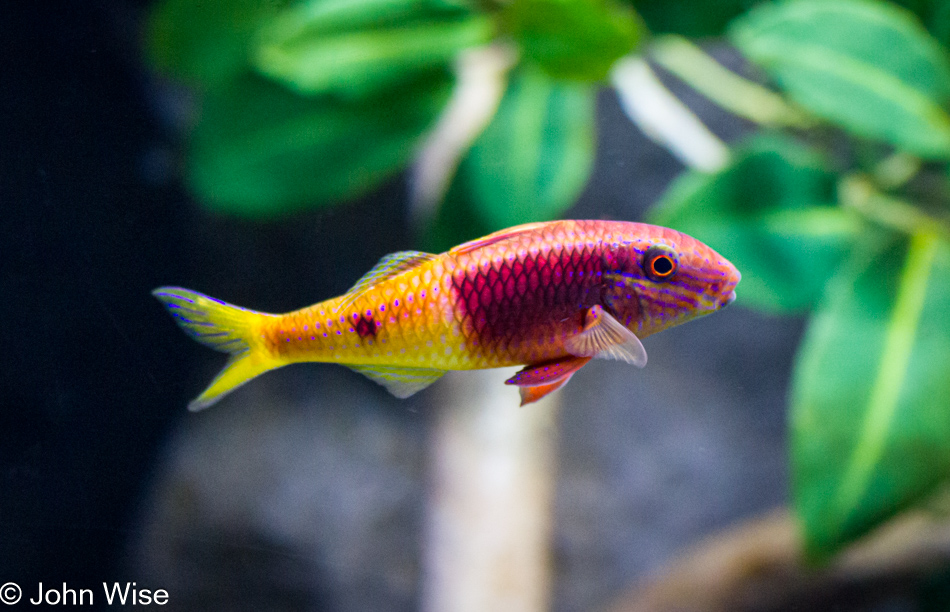
Okay, but just one more fish or two, and then we’ll be ready to go.
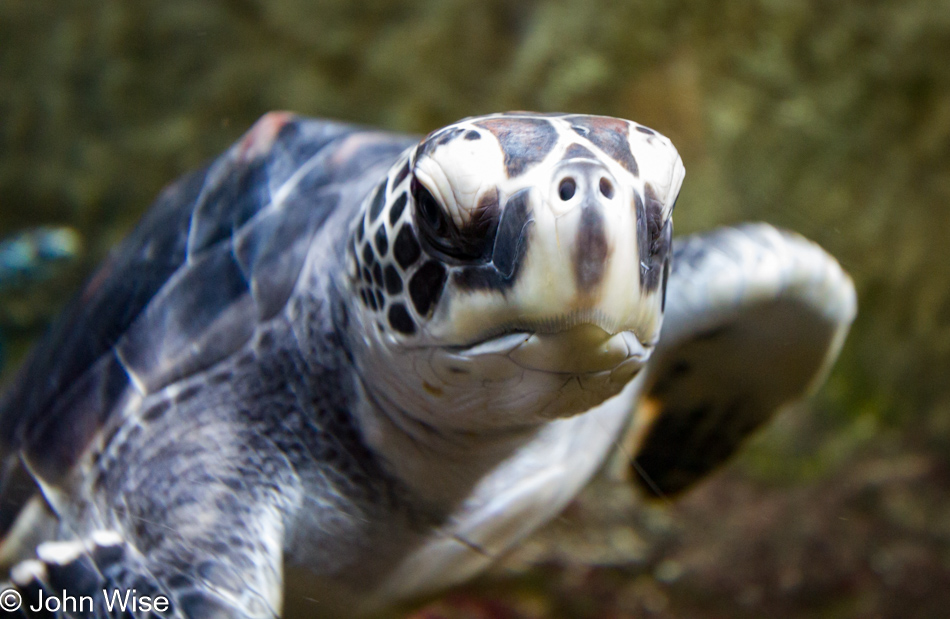
But wait, there’s more, such as this green sea turtle that came right up to the glass posing for us.
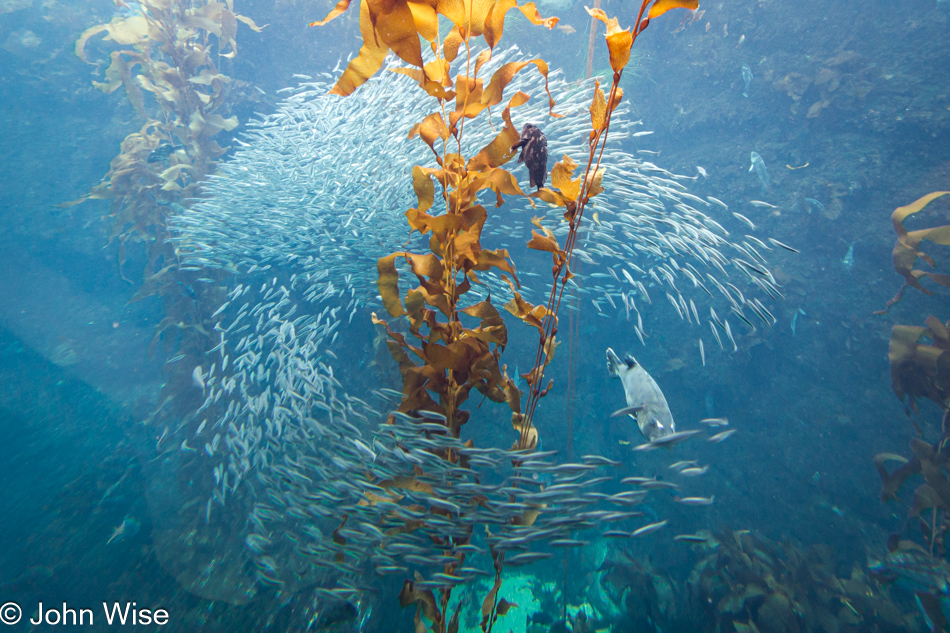
Just a final glance at the Kelp Forest, and then we’ll leave, so says Caroline the Aquarium Addict.
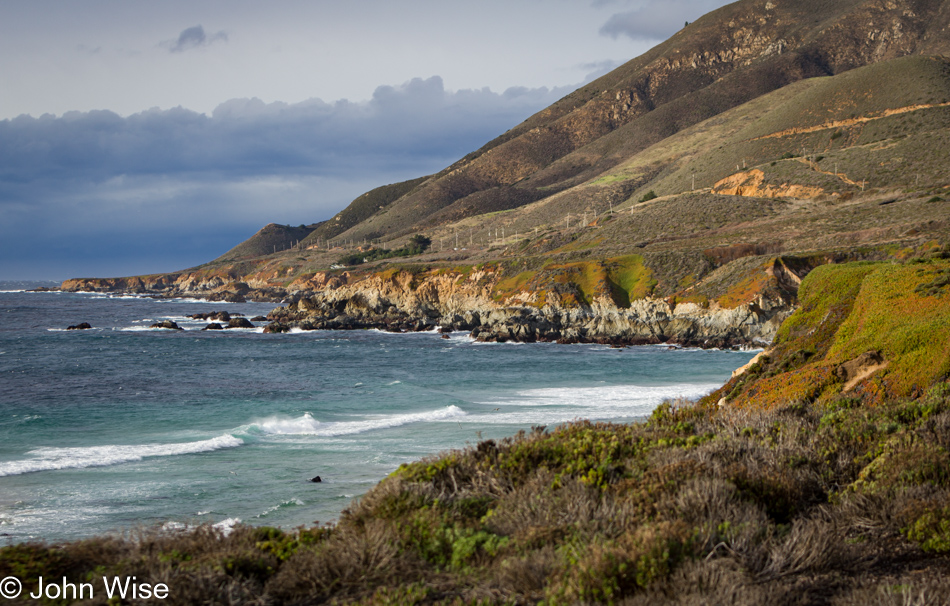
En route south for our return to the Birds Nest, we stopped at “Our Beach,” a.k.a. Garrapata State Park, which had been skipped on the way up due to the little ground covered during the meander north. Too many of those, “OH stop, this spot is even more beautiful than the last” moments lend themselves to those two-hour travel times to go but miles taking forever to get somewhere – this is not a complaint; it is a fortunate happenstance we imbibe at all too often. If we were to stop nowhere else this afternoon, it would be here at our beach.
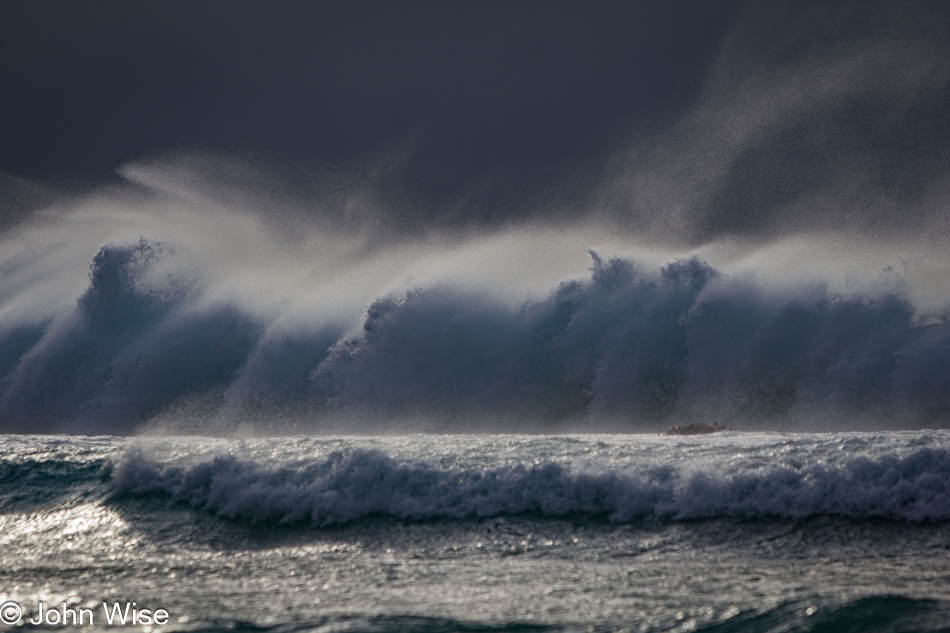
A small amount of sun graced our presence with a poke through clouds here and there. It sparkled on water and waves, borrowing some of the glitter from the stars far overhead. The waves are roaring as they typically do on this beach. On previous visits, we have seen that the ocean churns so ferociously here that the sand levels rise and fall, changing the character of the beach with dramatic effect.
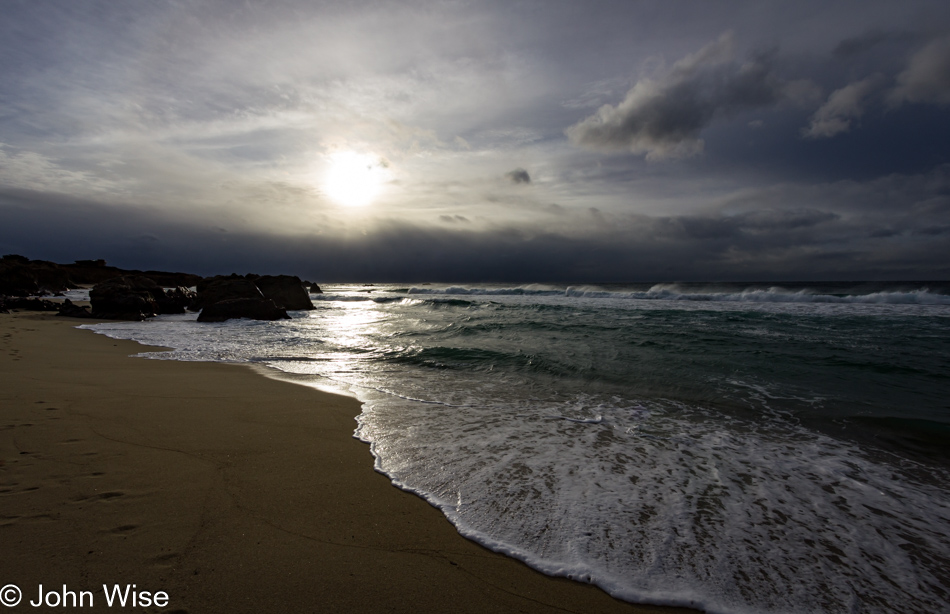
The walk from the roadside to the beach, as seen in the two photos above, is one of the more dramatic views up the coast; it never fails to impress us. Directly in front of us while on the beach, the waves tower and stack up to roll in with one after the other in rapid succession. And then to the south, as seen right here, the sun lights the beach and rocks with golden repose. We melt into this landscape every time, making us one with our beach.
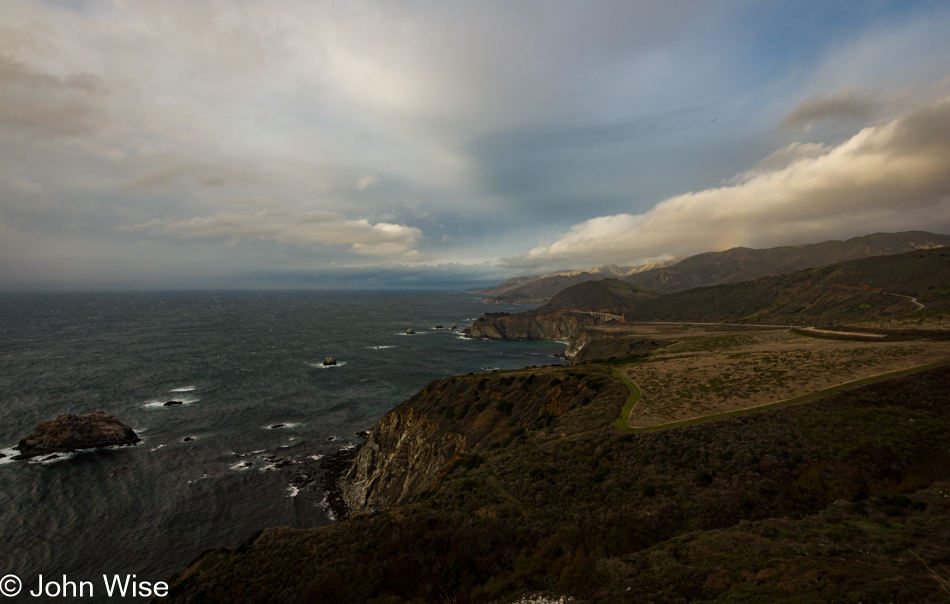
We now must race against the setting sun to return to our perch, as we don’t want to find ourselves squatting in some random nest on an unfamiliar branch. We arrive in the nick of time to the last embers of available light. The wind is howling here near Cape San Martin; a quick check of our nest and the tent inside assures us that nothing has blown away yet. Time for dinner, and a wonderful one at that. A bread basket and dipping oil were brought with glasses of water from their own well. The olive oil was infused with herbs grown right here at Treebones garden plot including lemon thyme, sweet marjoram, dill, parsley, chives, and tarragon. Next up was the homemade butternut squash soup with roasted pumpkin seeds, followed by a beet salad with orange wedges and mixed greens; both the beets and greens were grown right here in the garden. Caroline opted for the butternut squash ravioli with sage sauce and, for me, the pot roast with roasted winter veggies atop blue cheese potatoes au gratin – both meals were the perfect comfort foods for a chilly winter night.
A dip in the jacuzzi with the wind and cold rain beating at our faces was on order before returning to the fire-warmed dining room for a shared dessert of sticky date cake with caramel drizzle and a homemade hot chocolate chai. By 9:00 p.m., the wind still rips at the trees outside; we will try to fall asleep in a flapping wind tunnel and dream of the best New Year’s.
